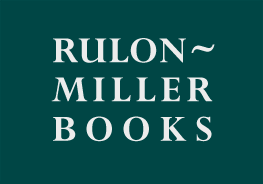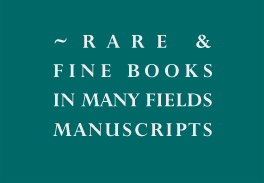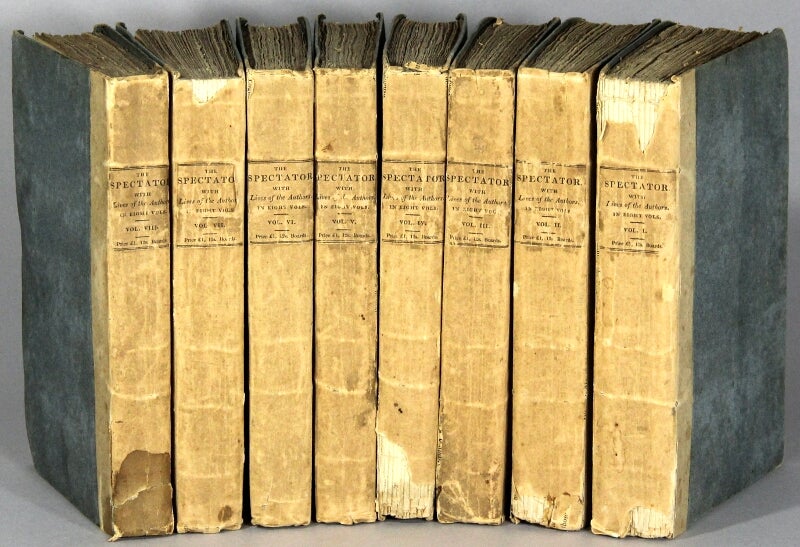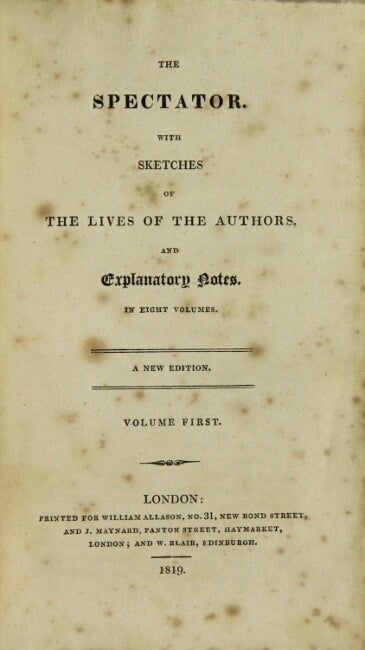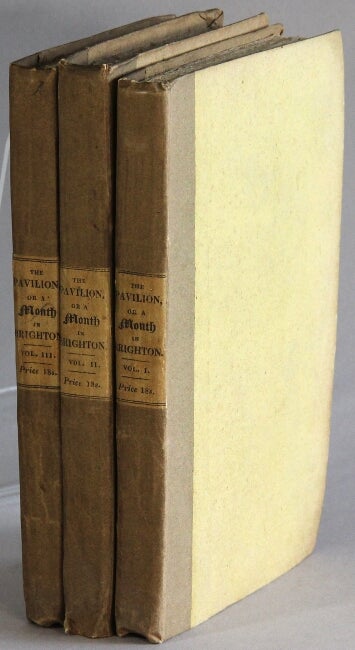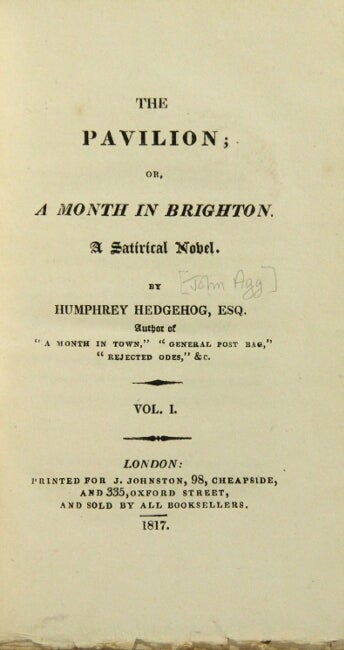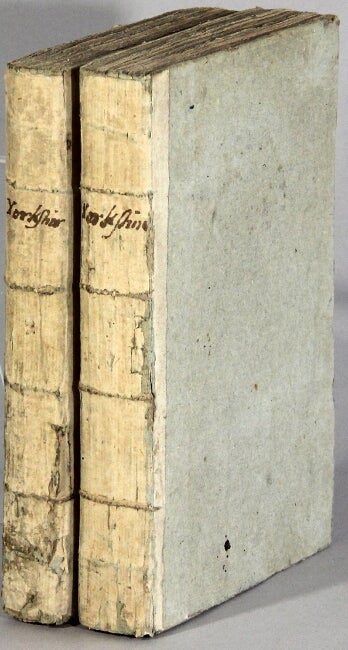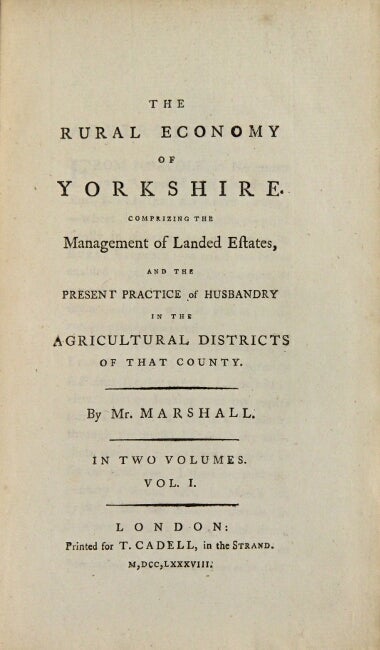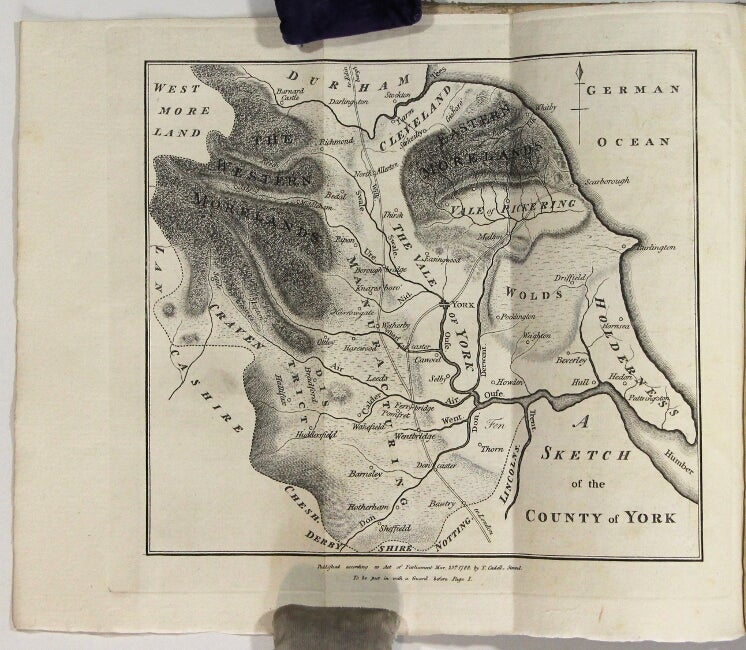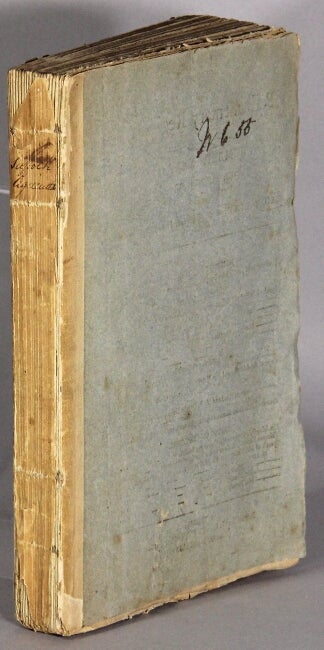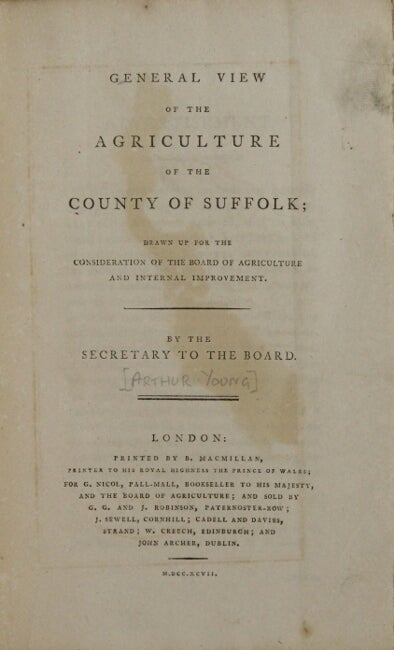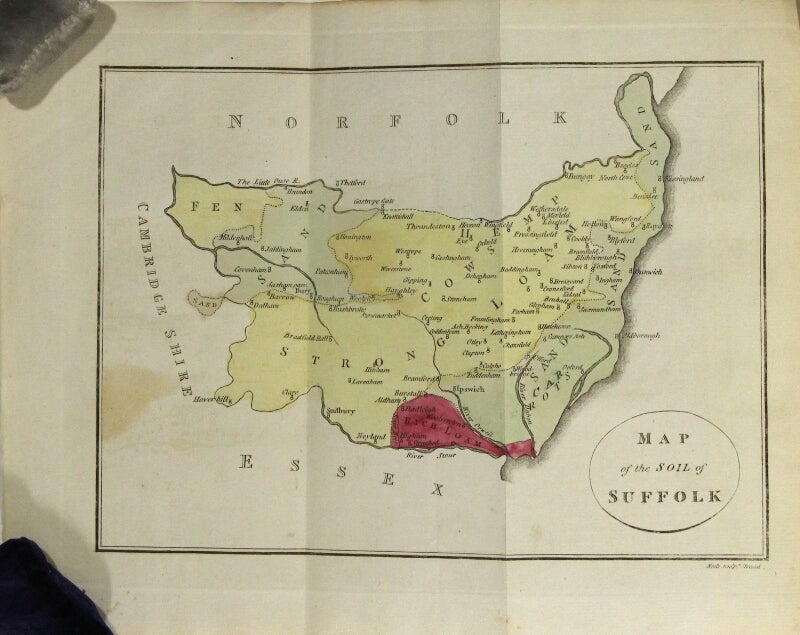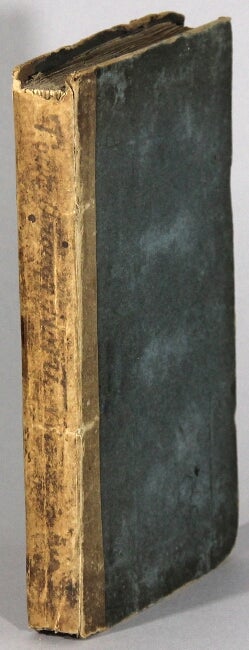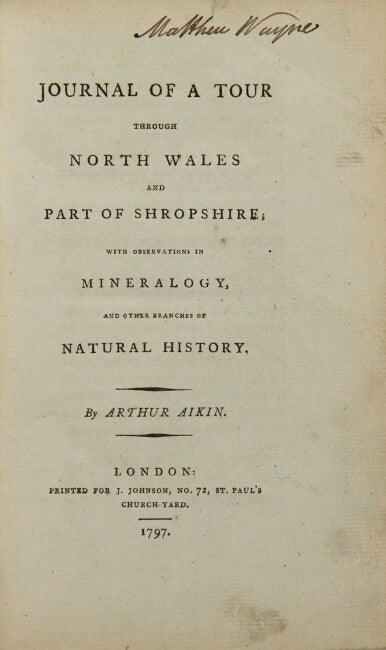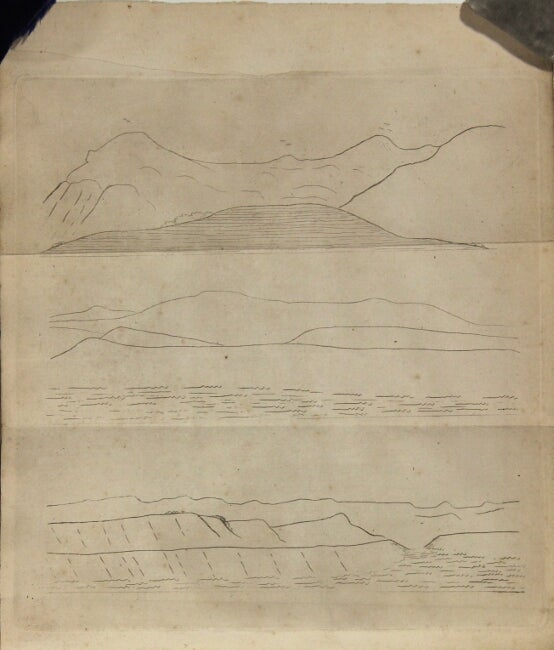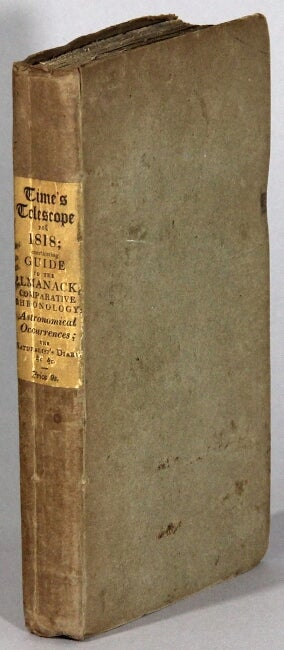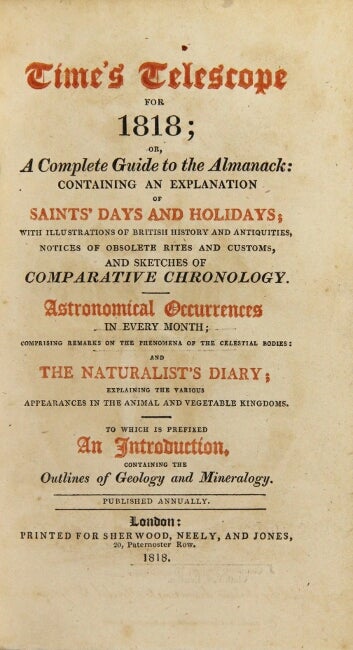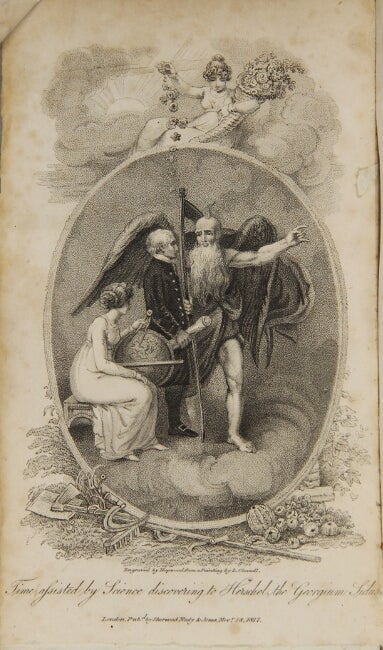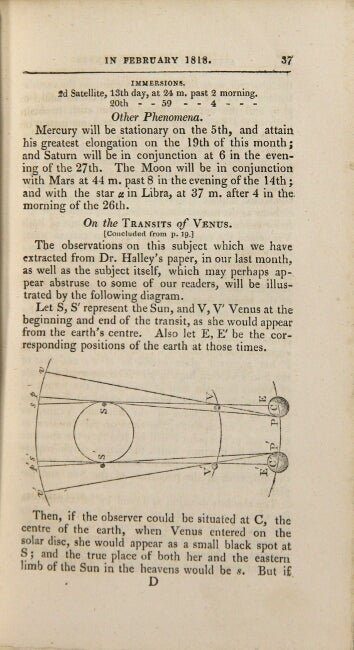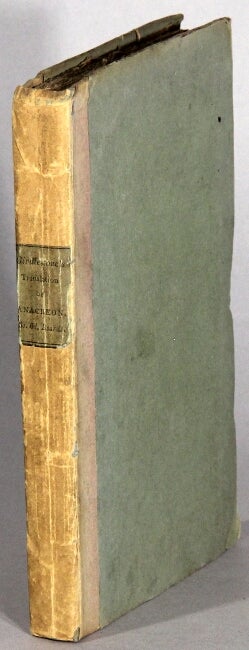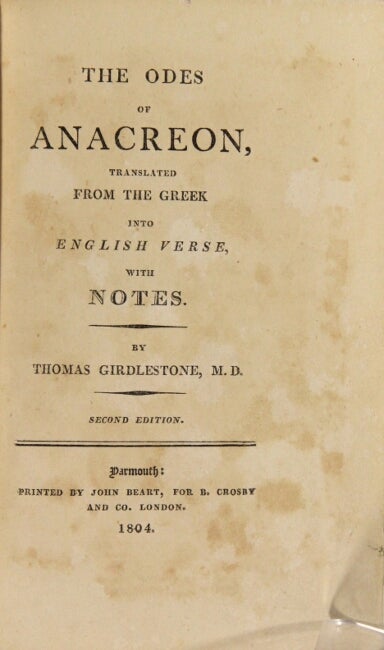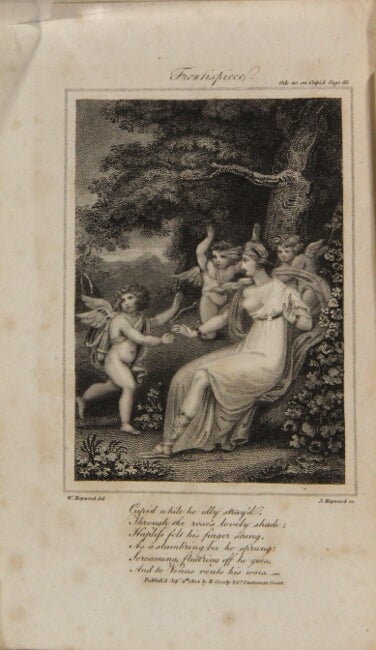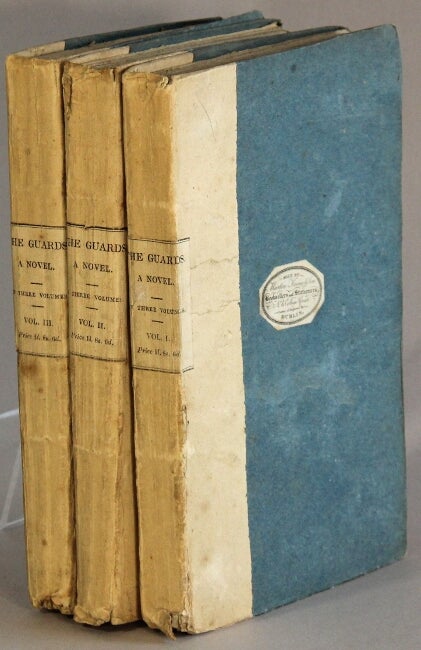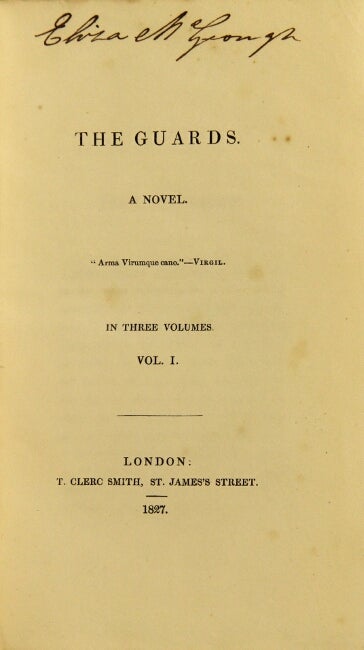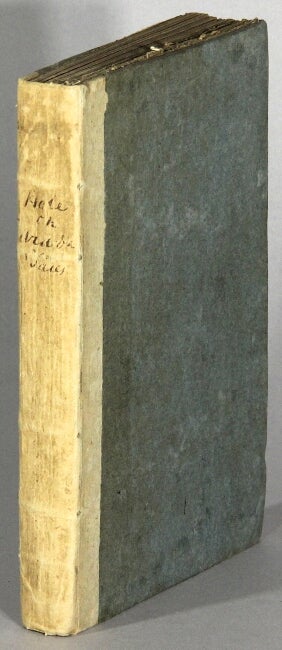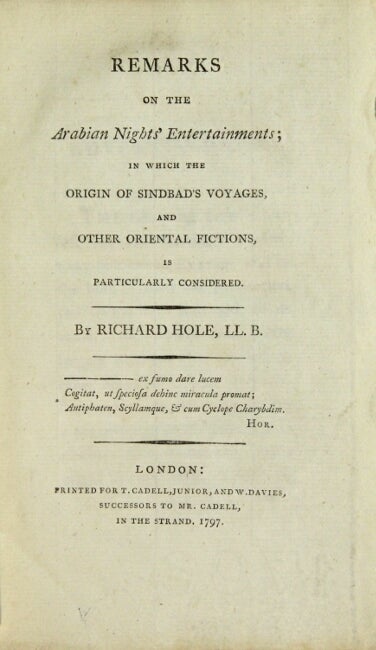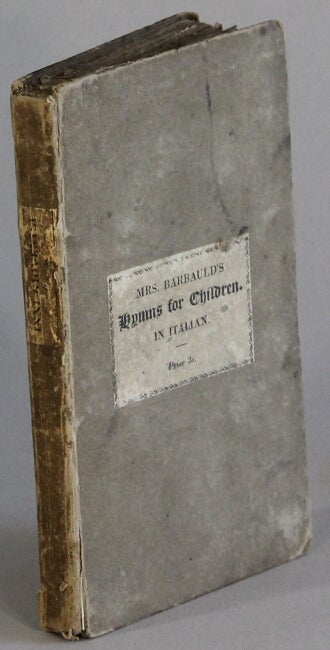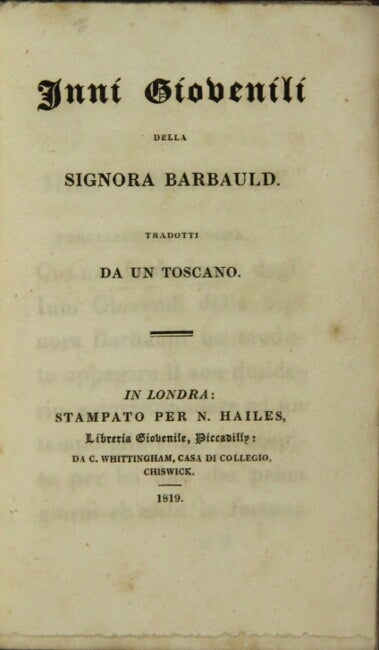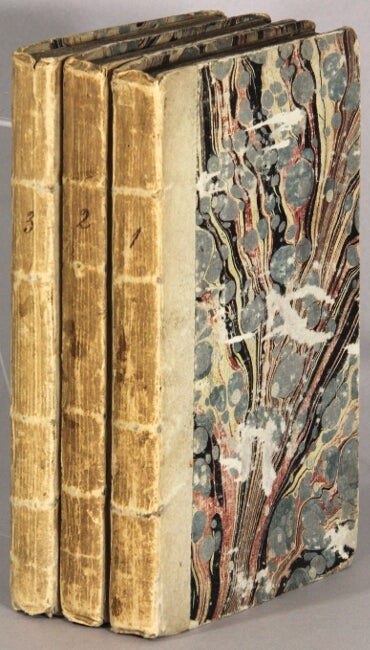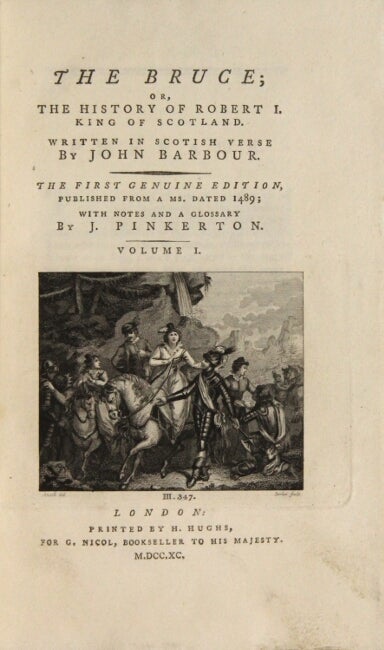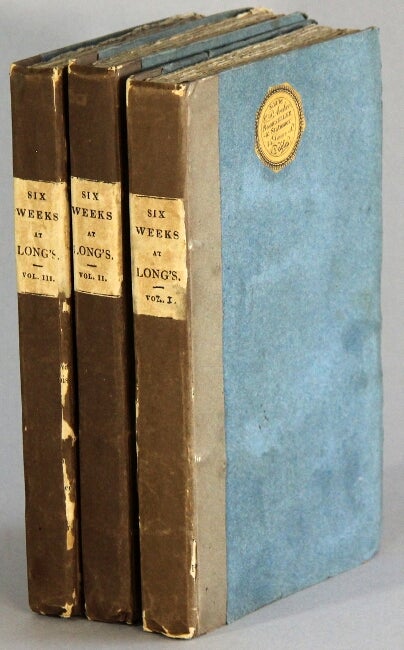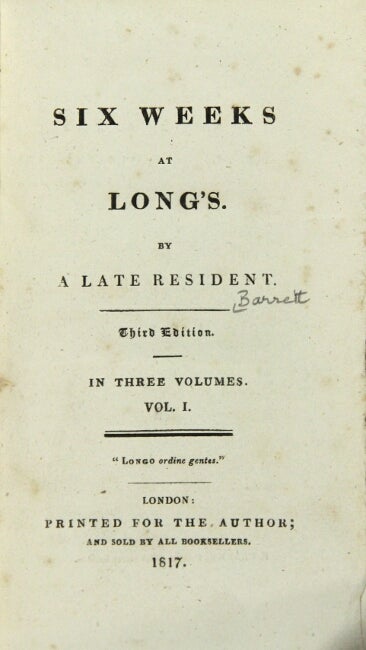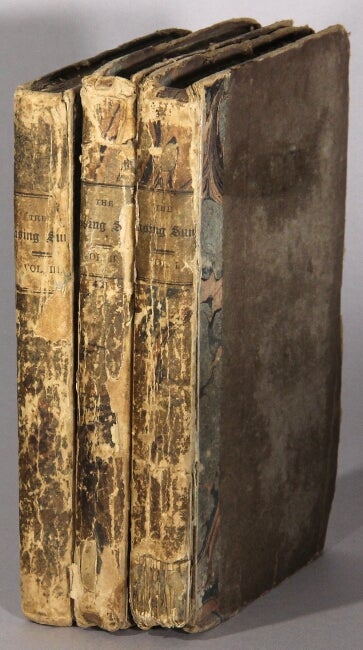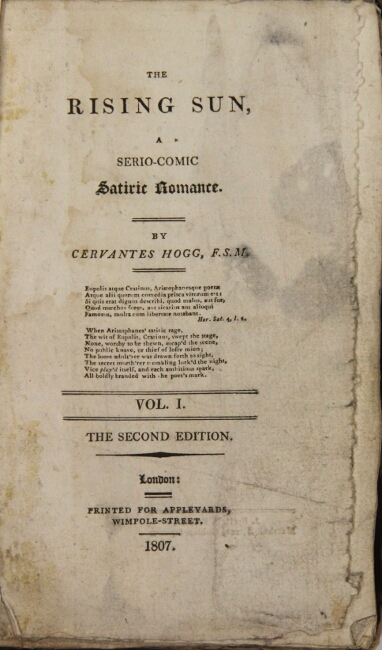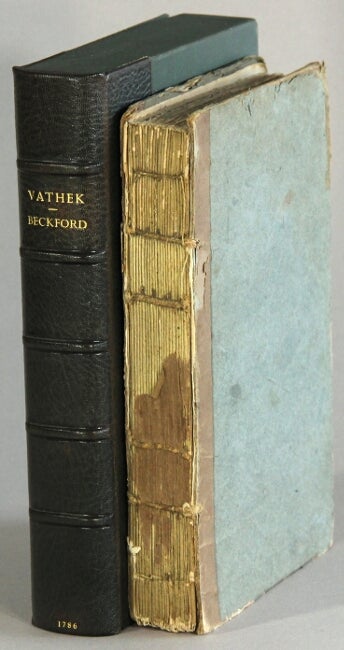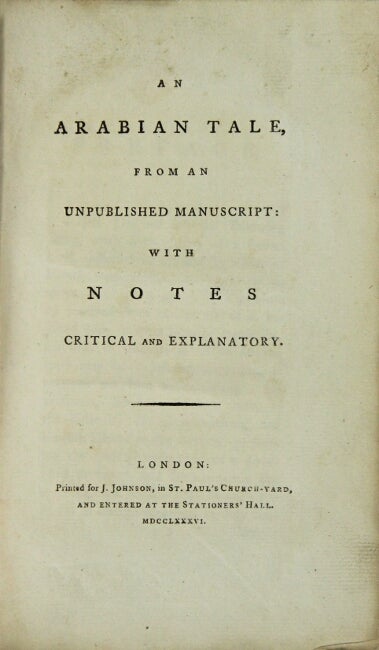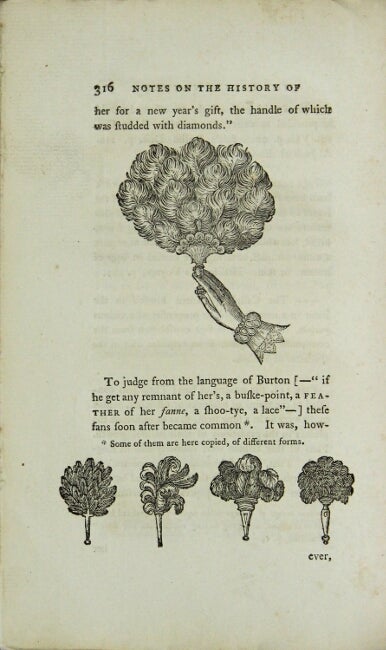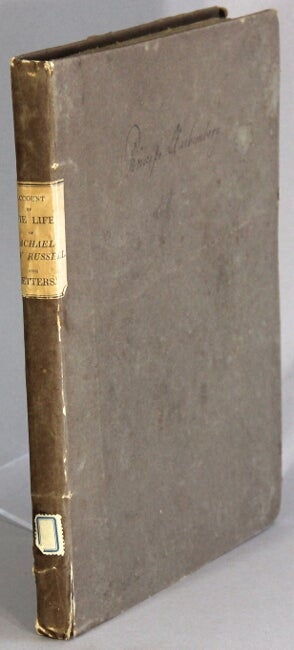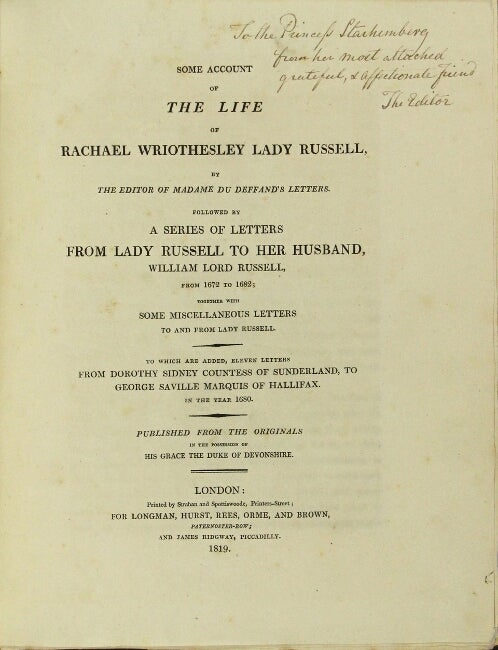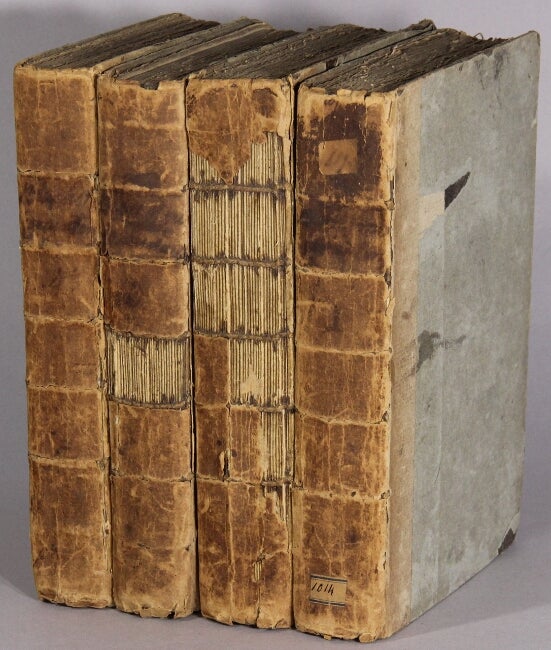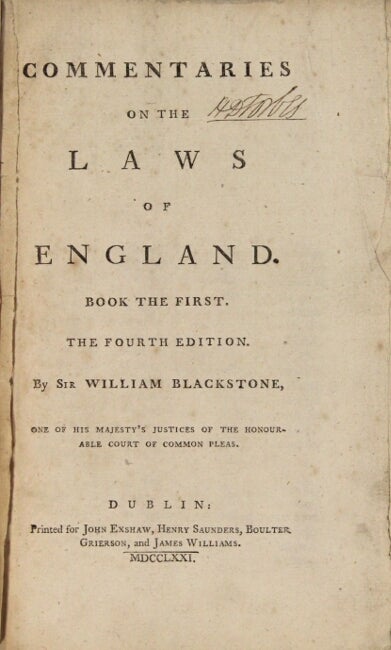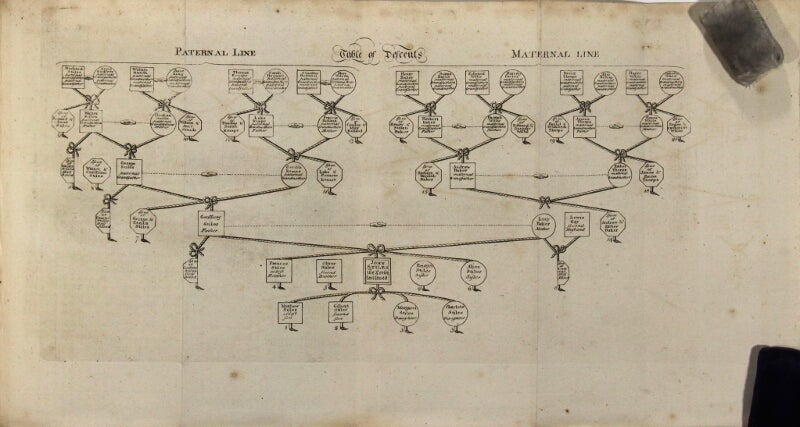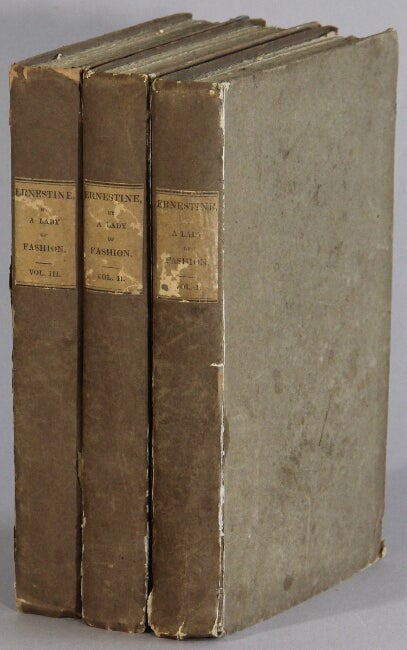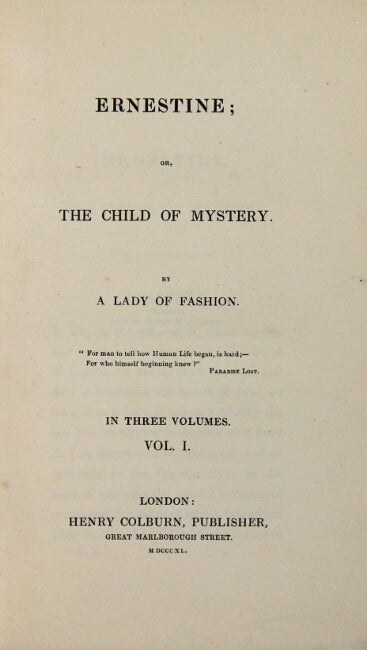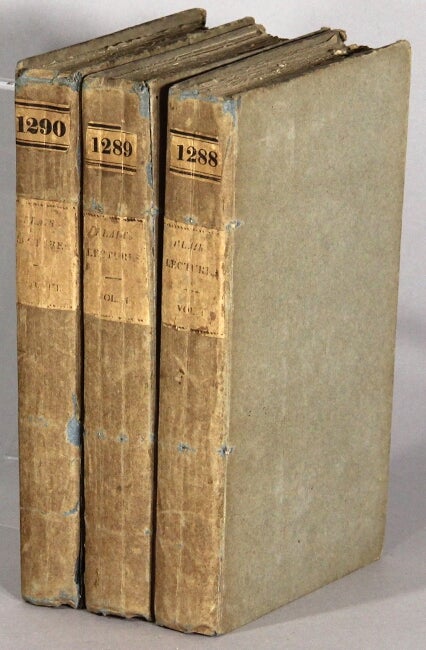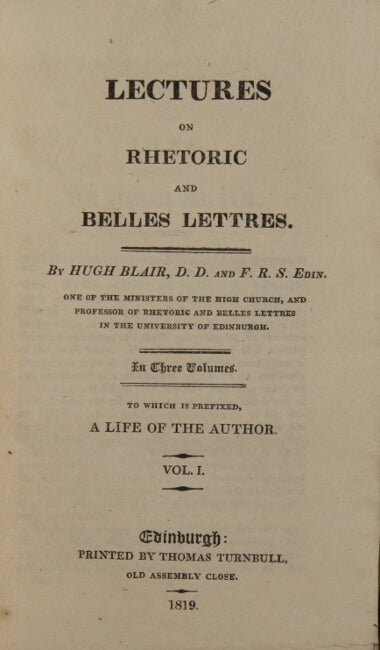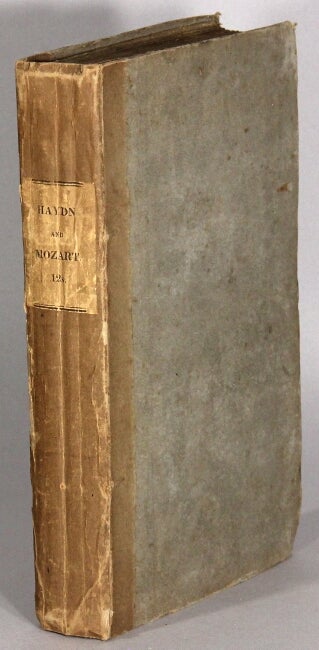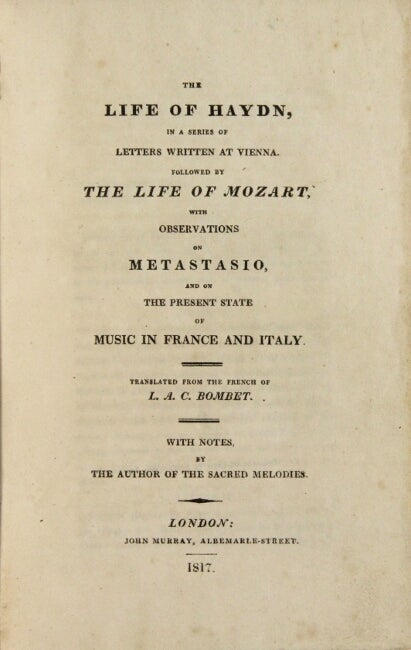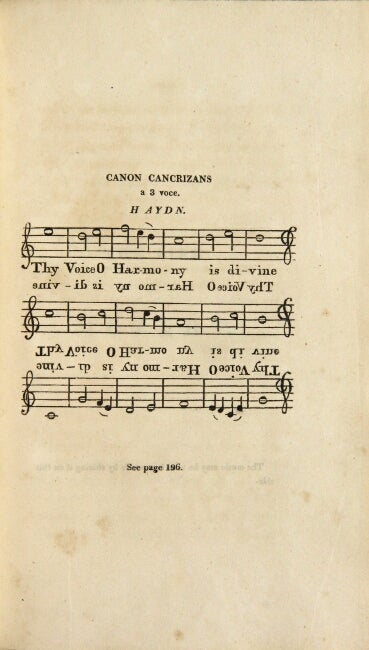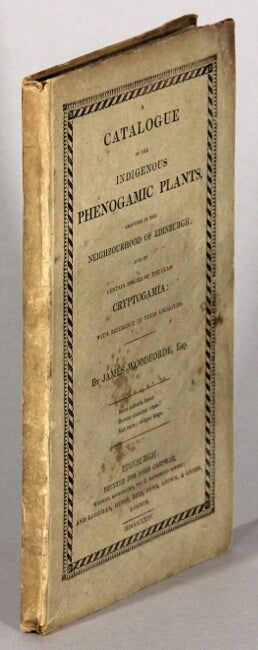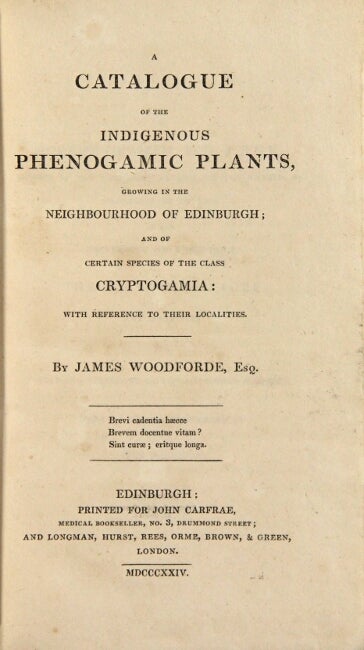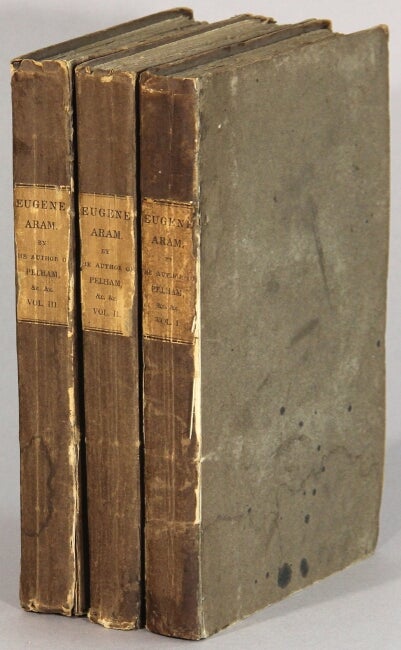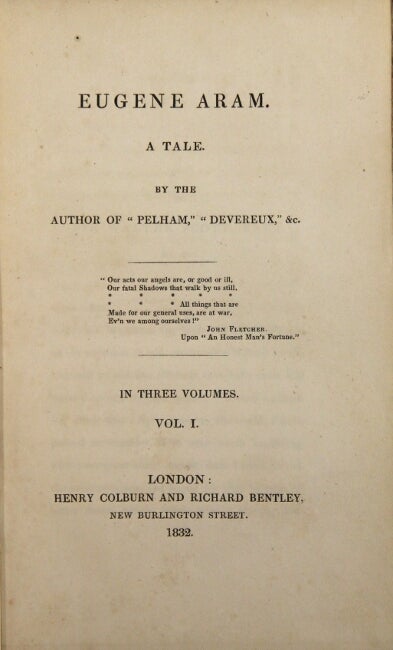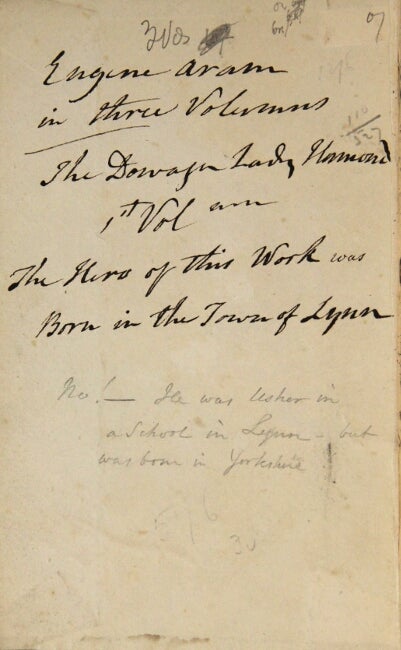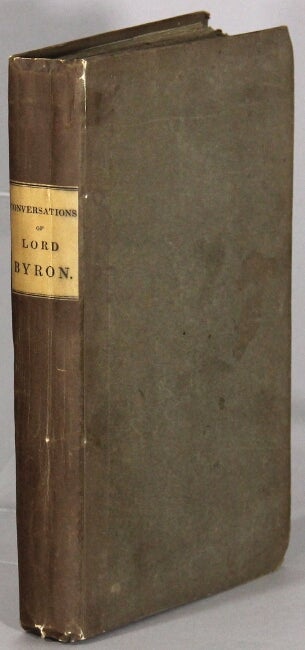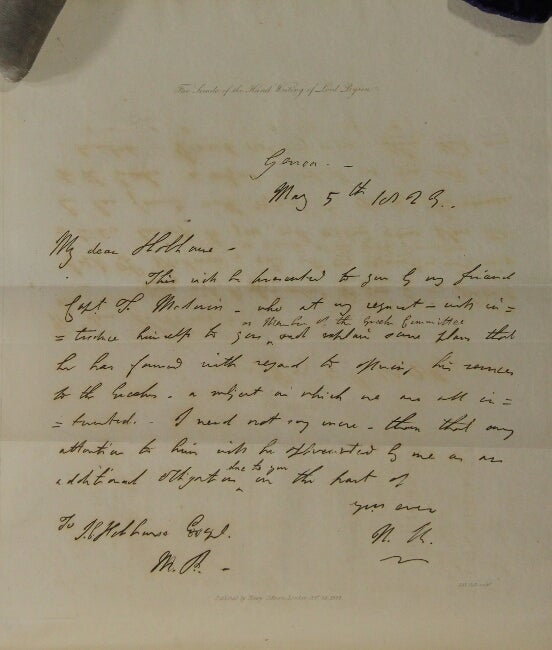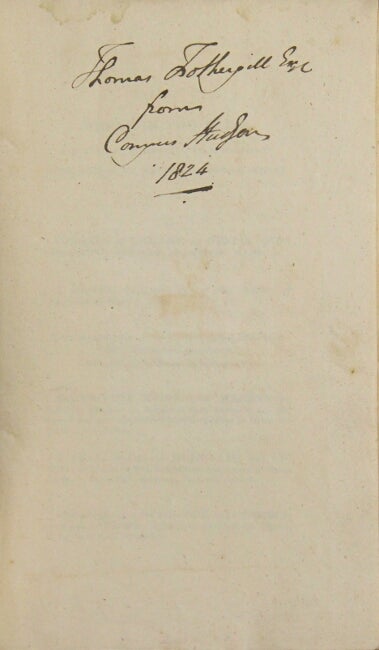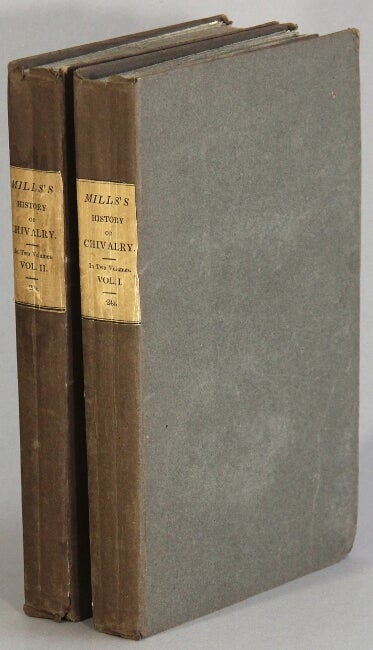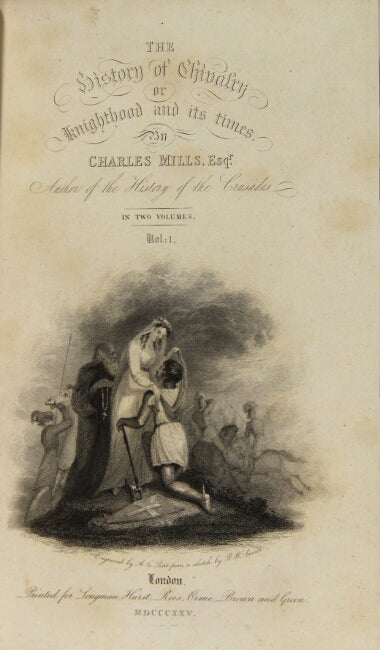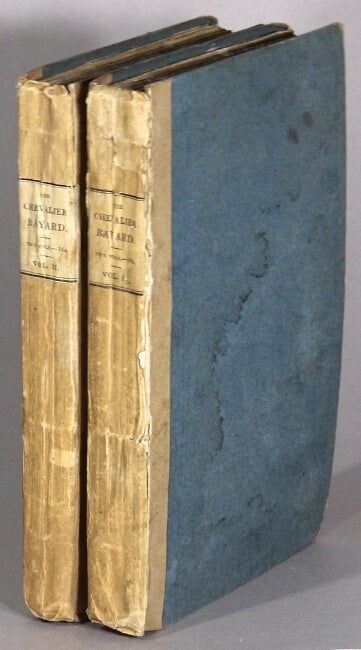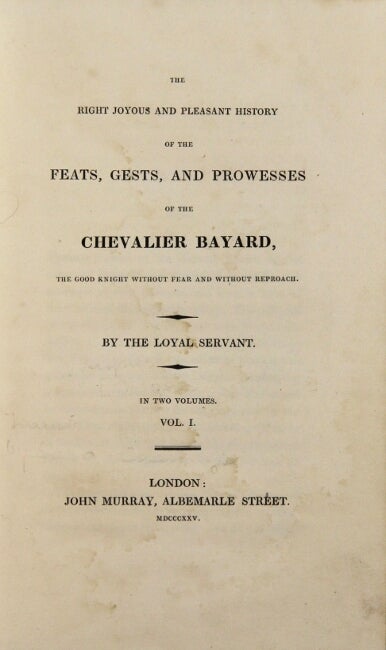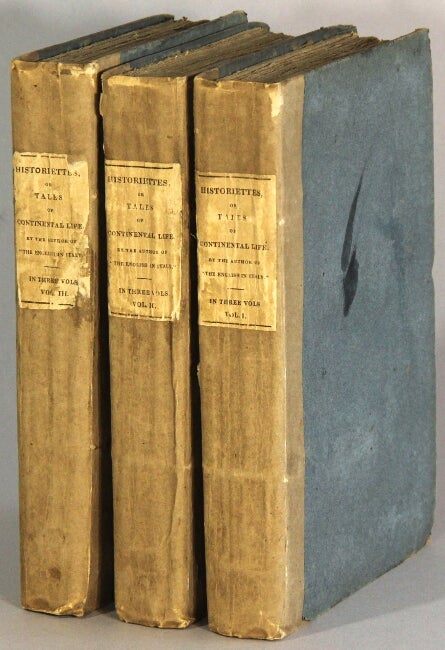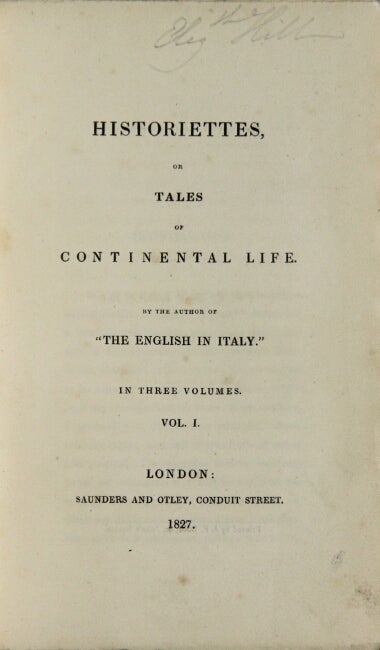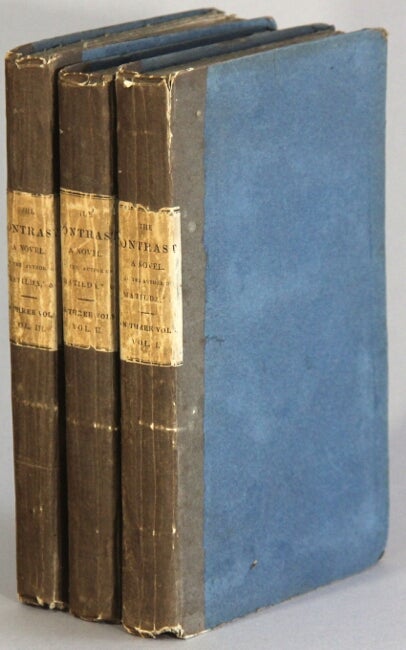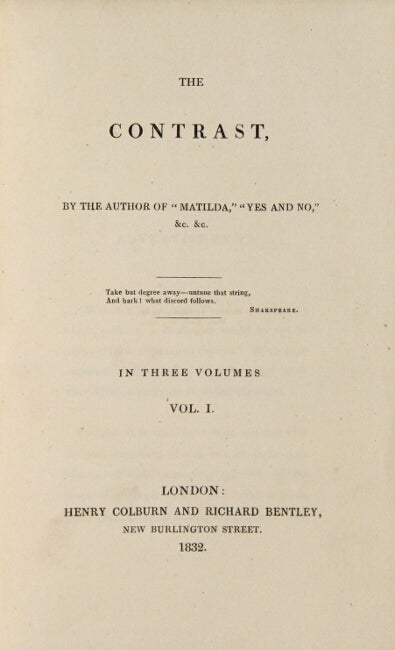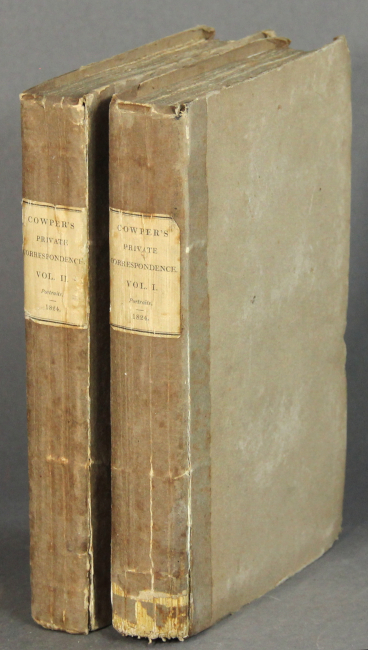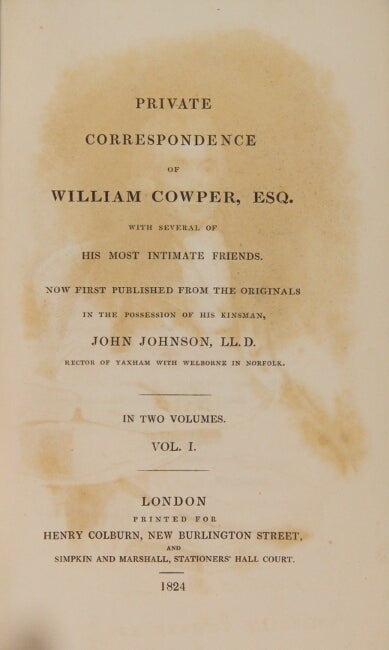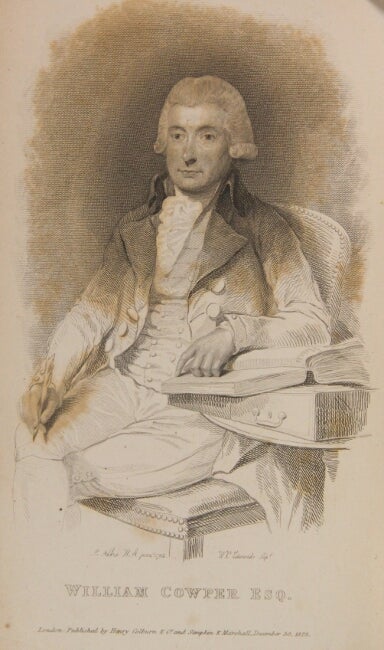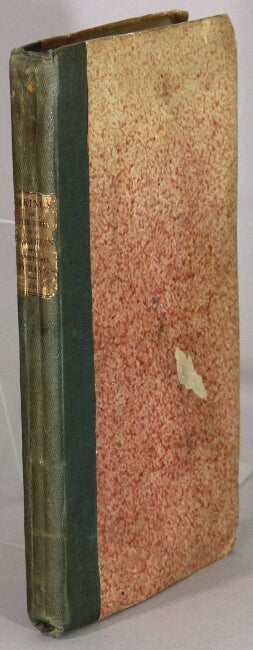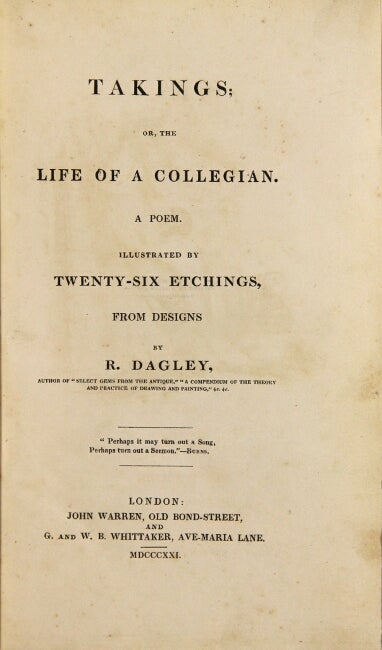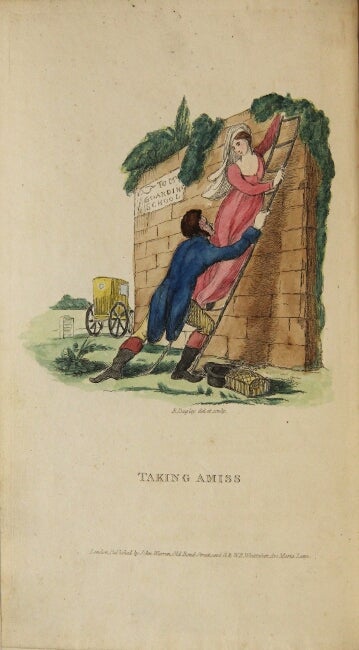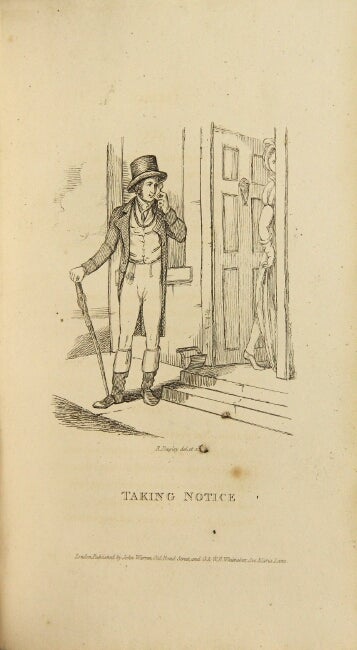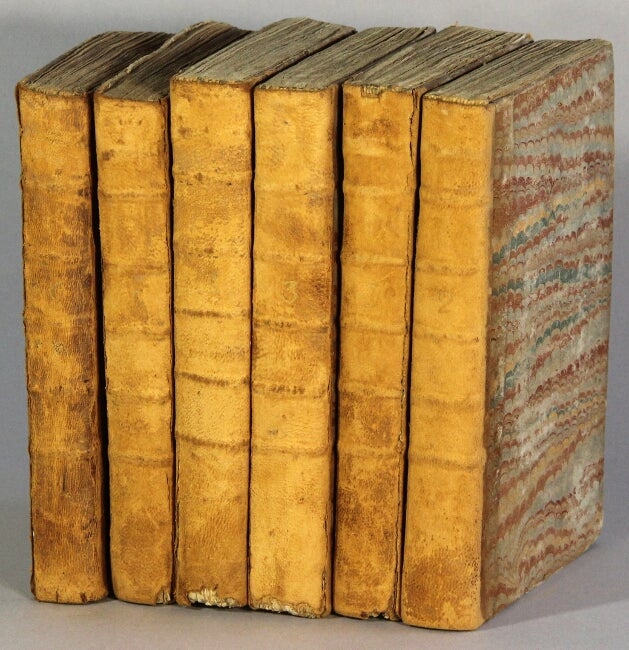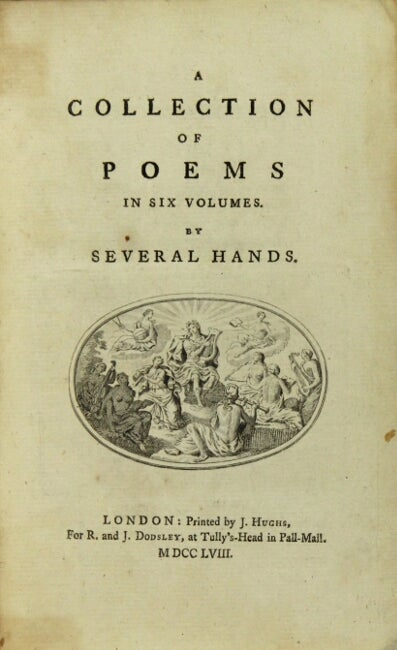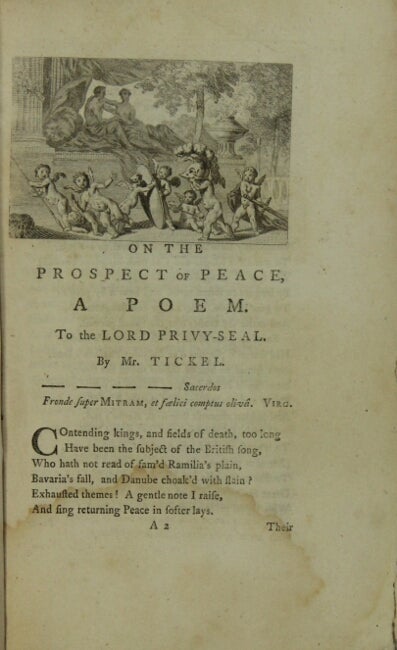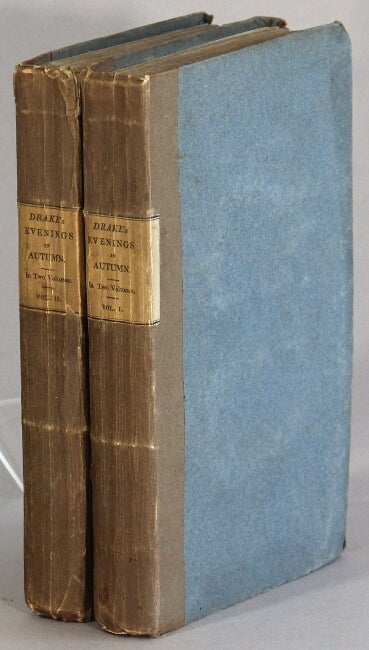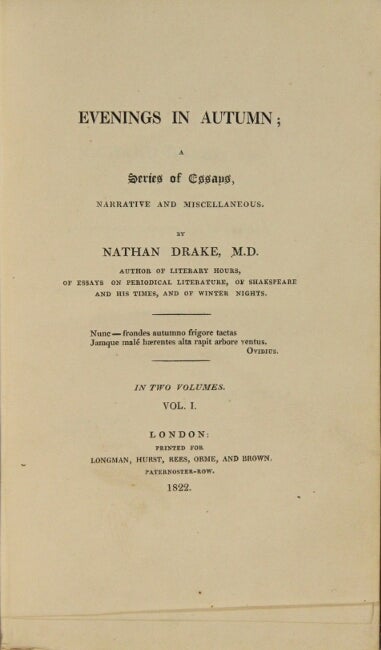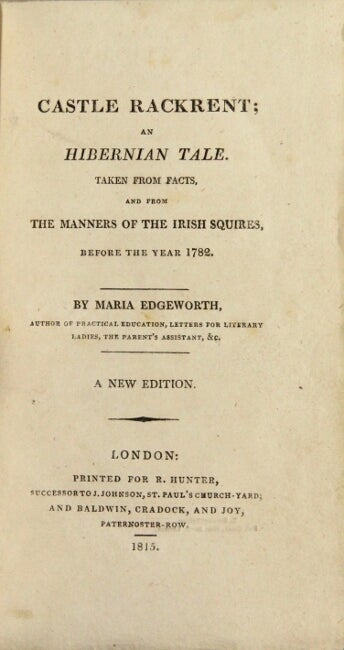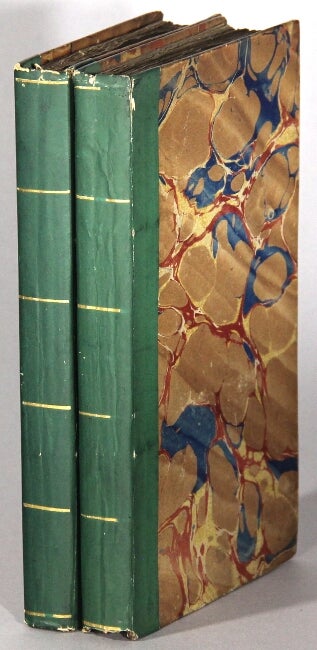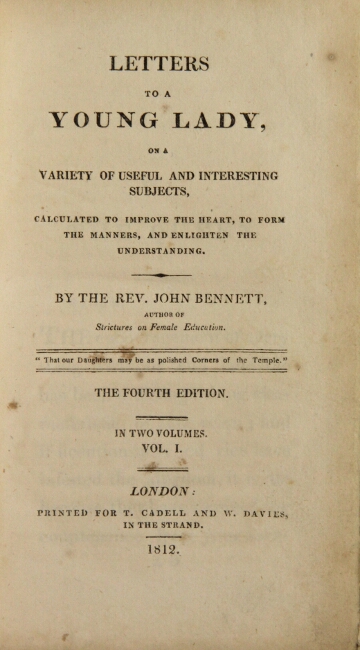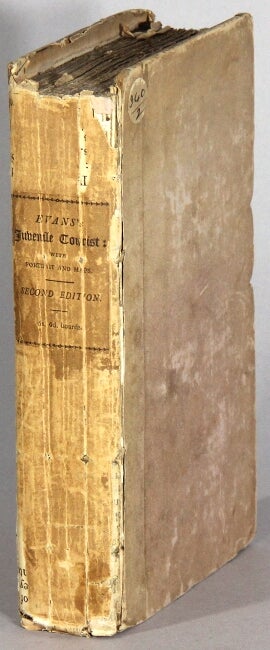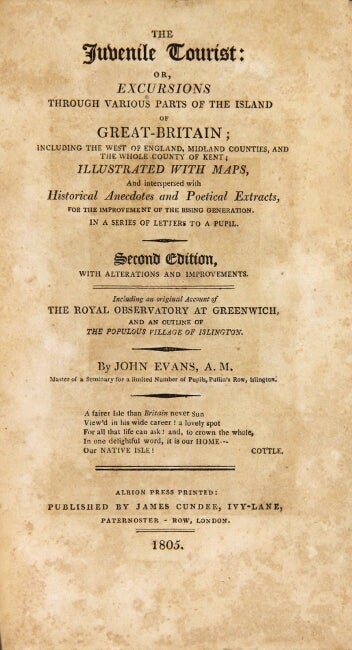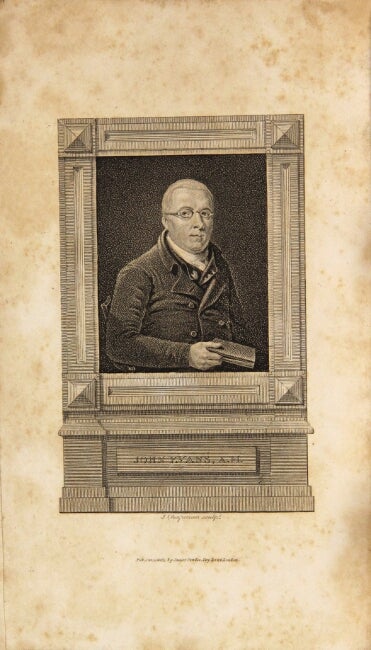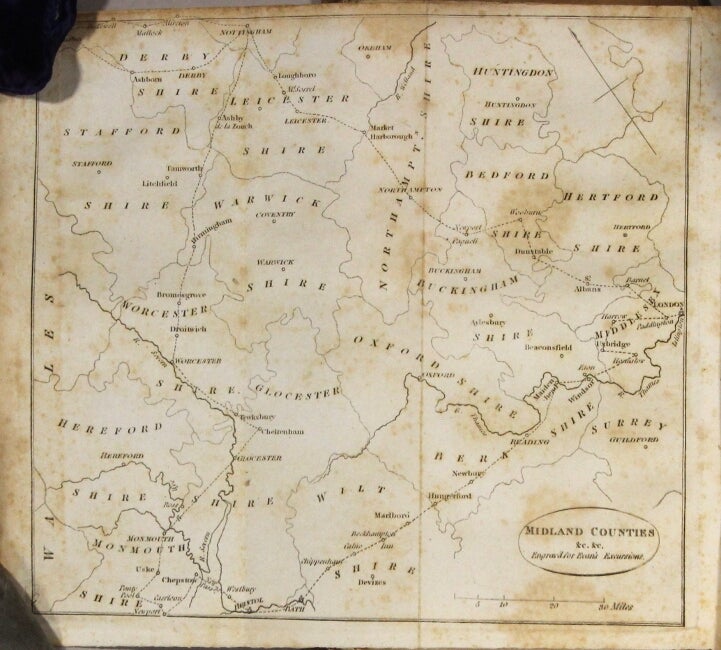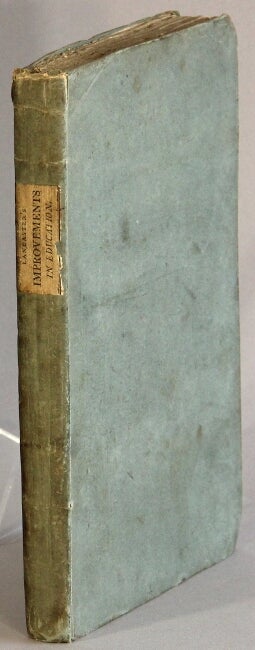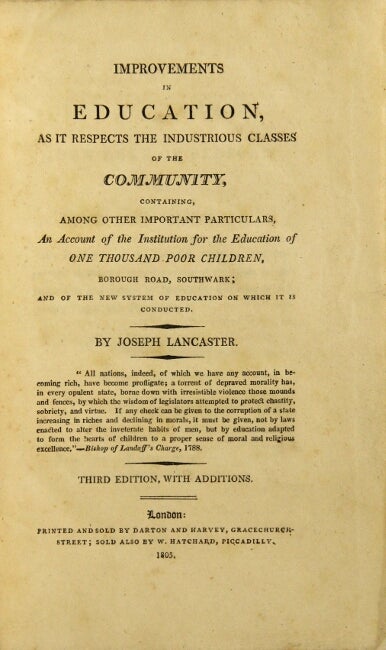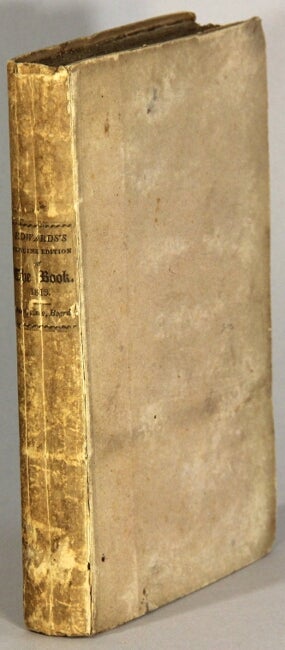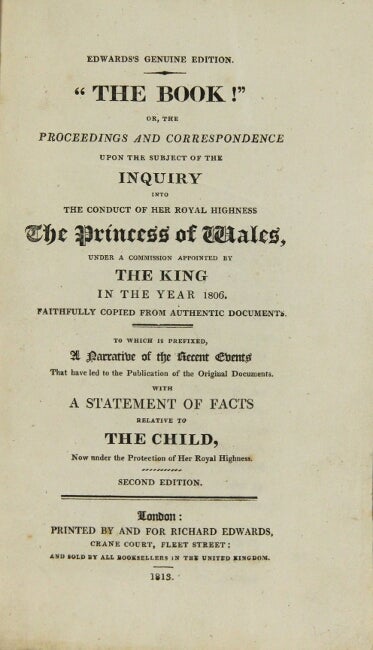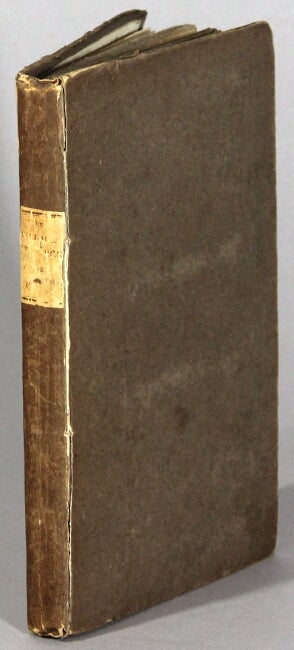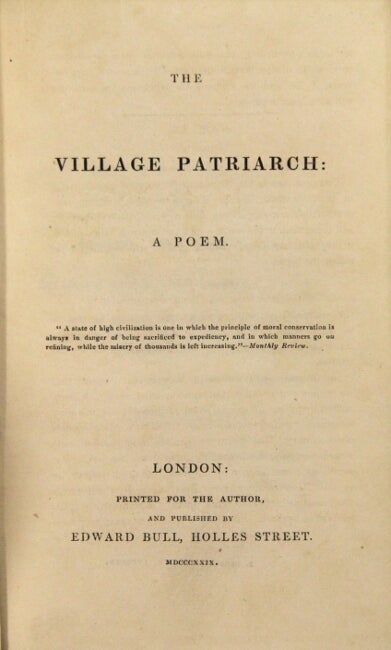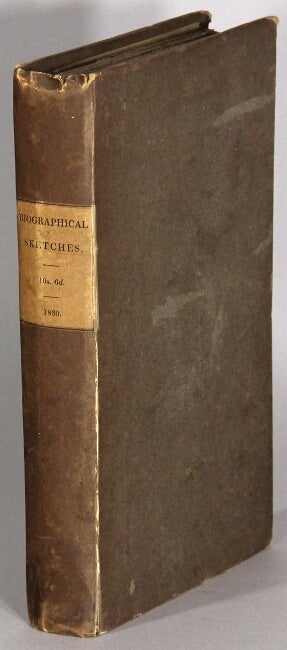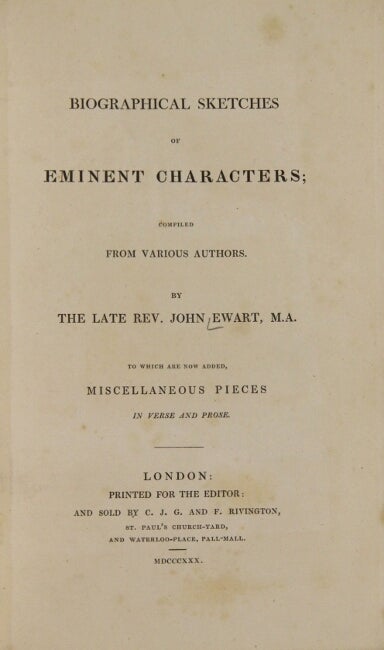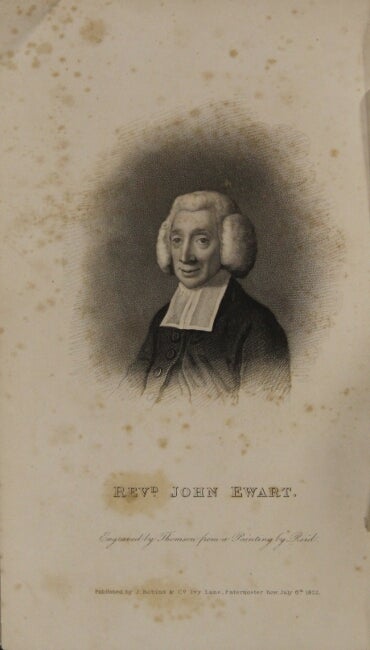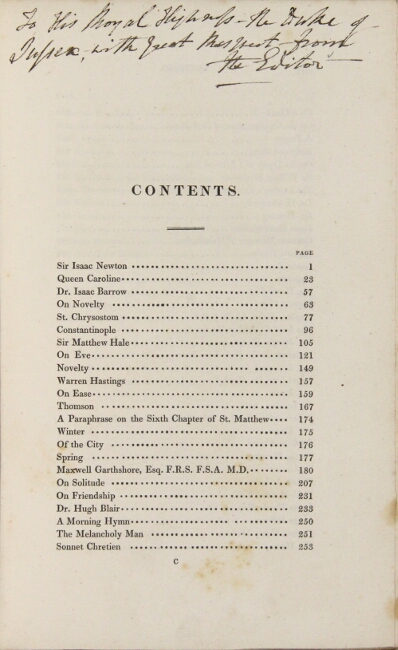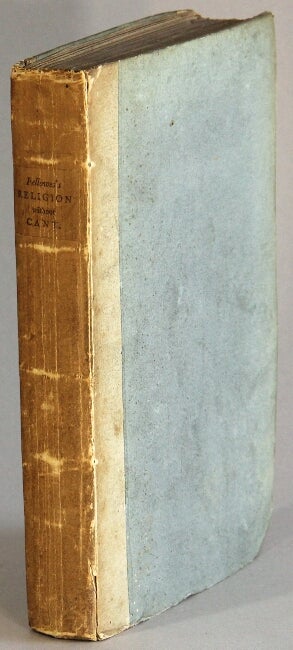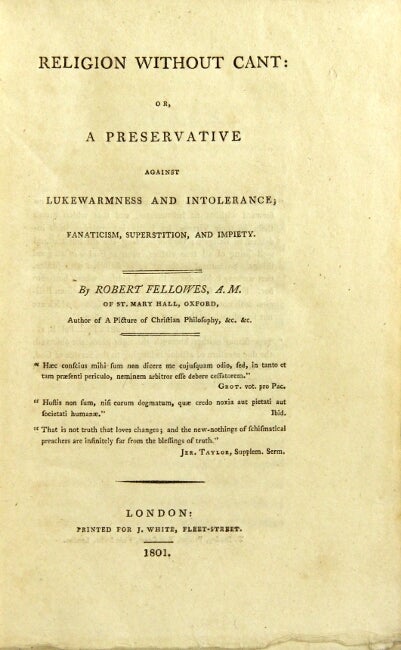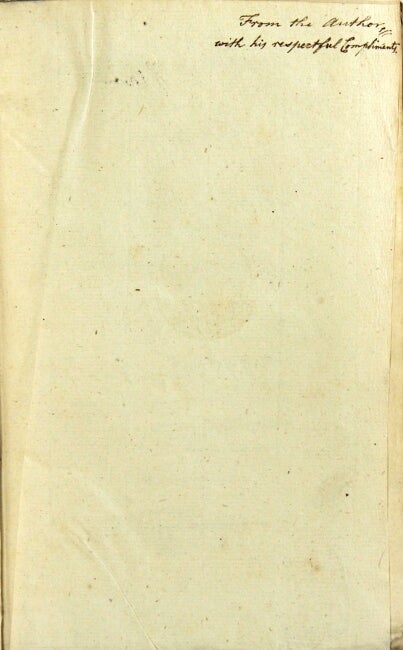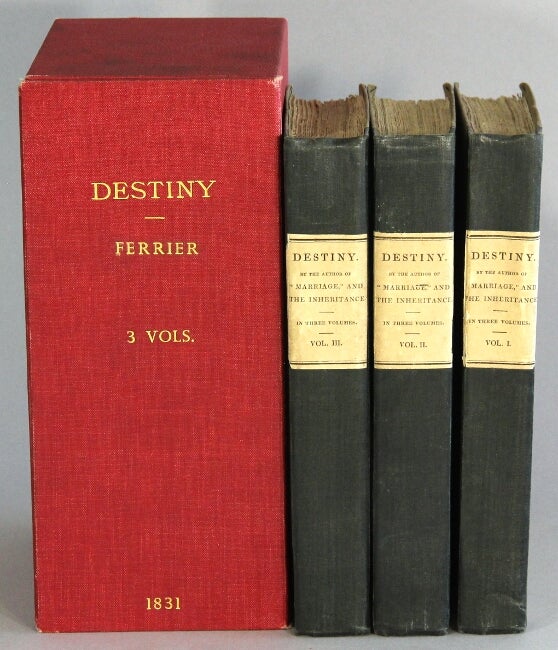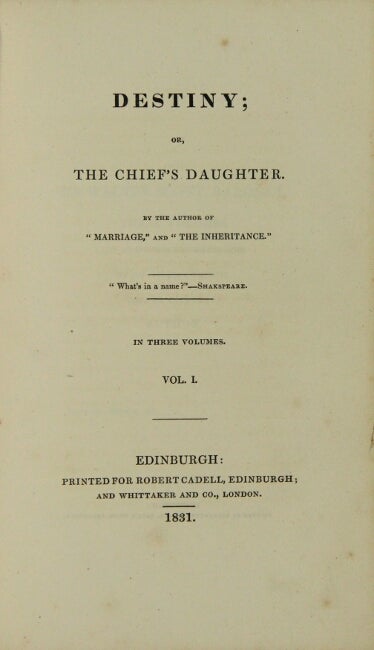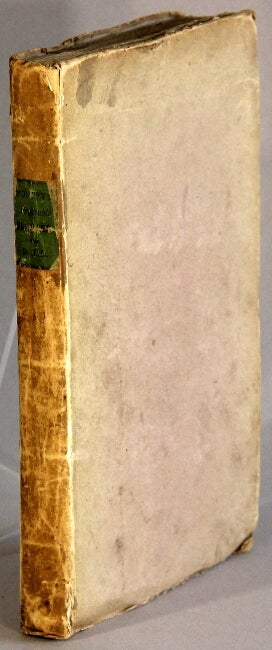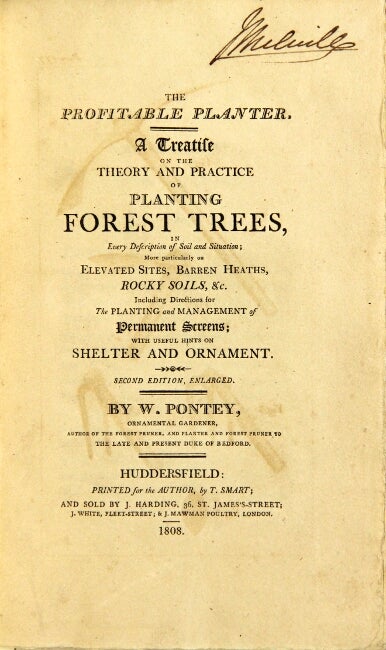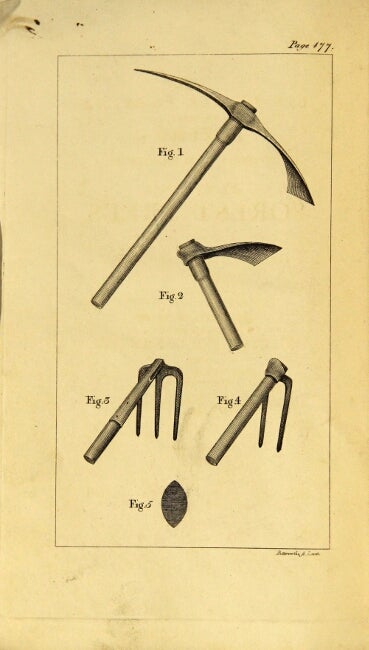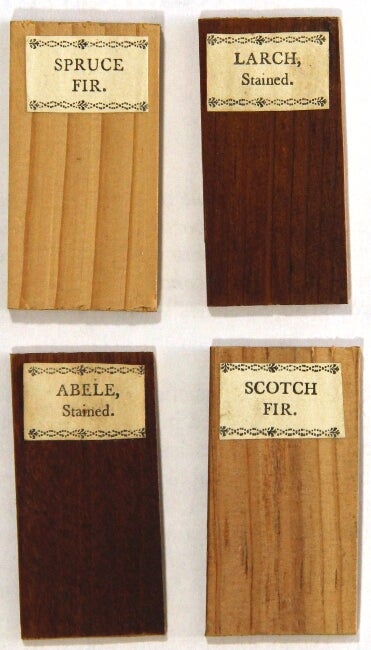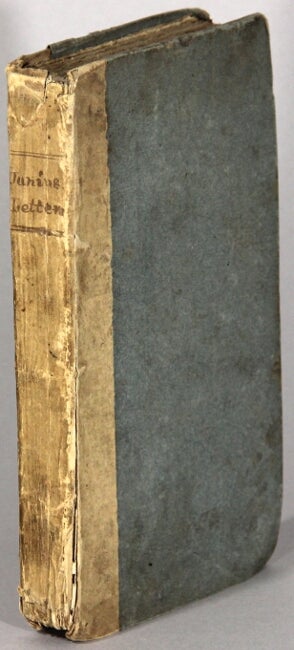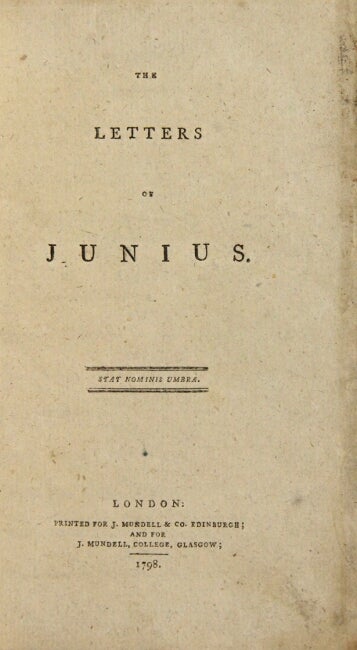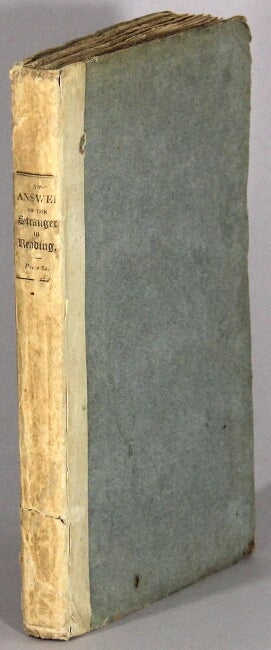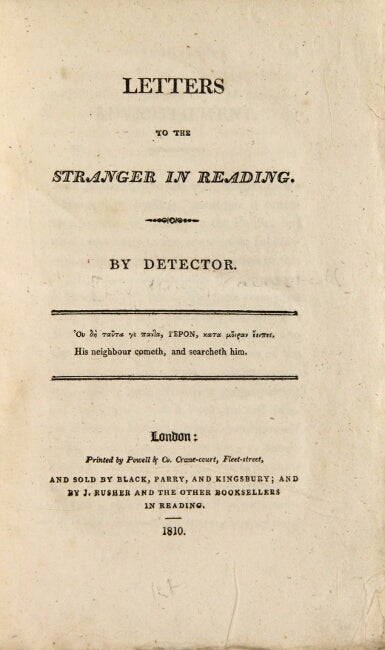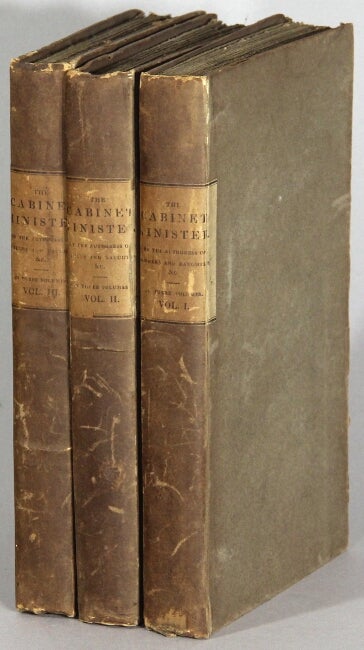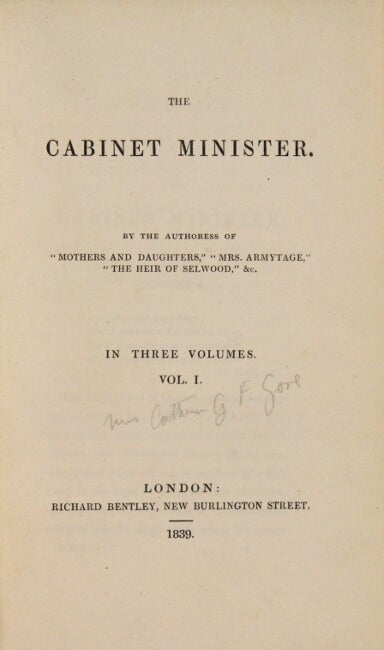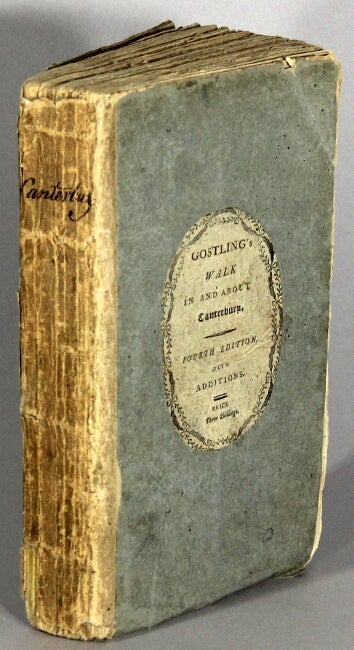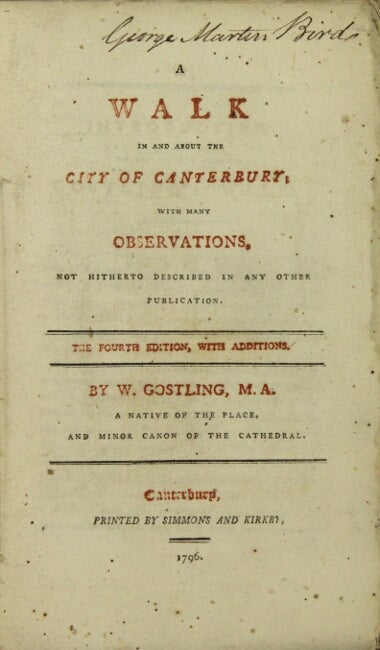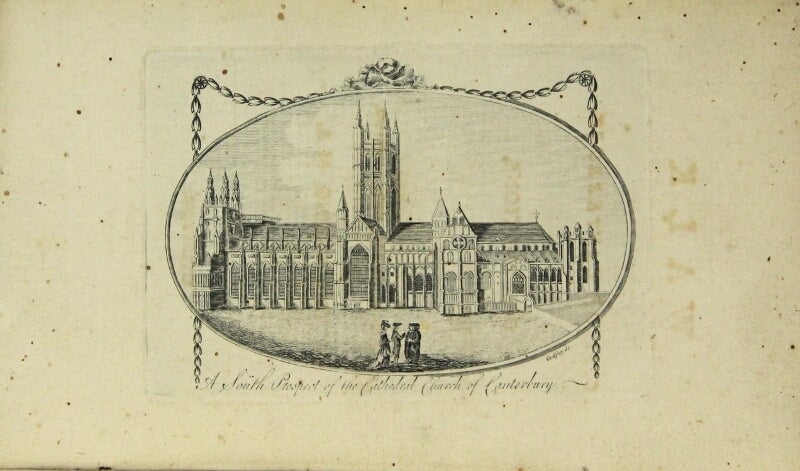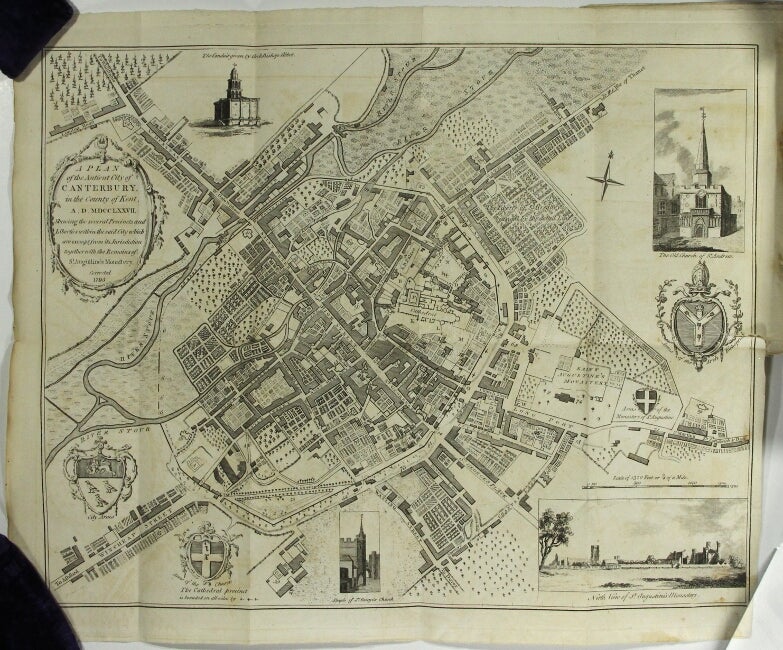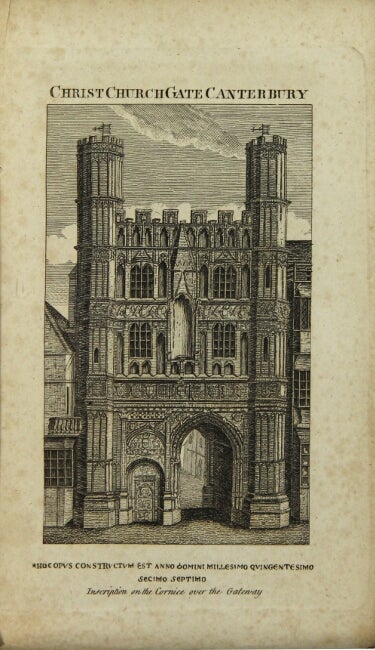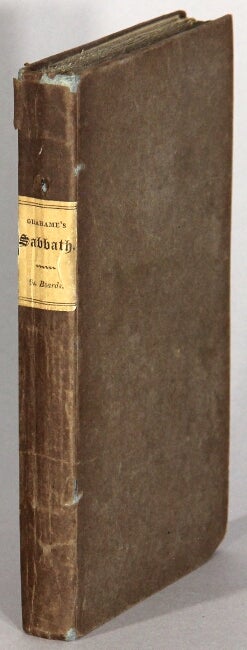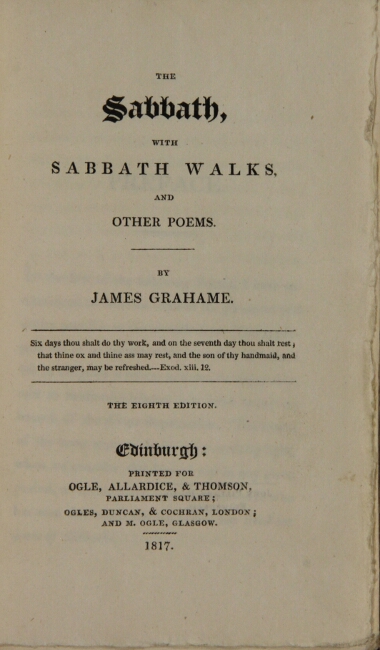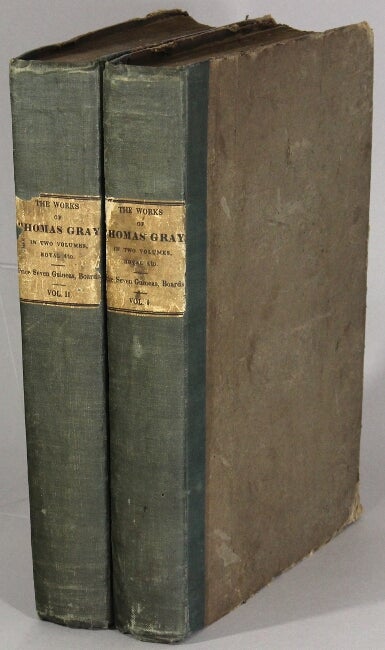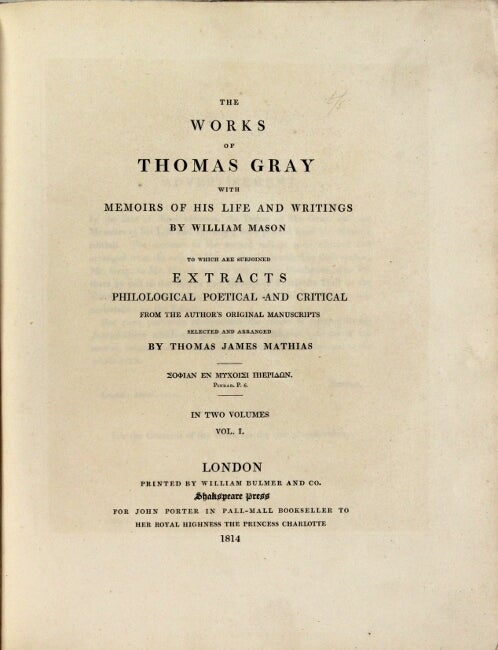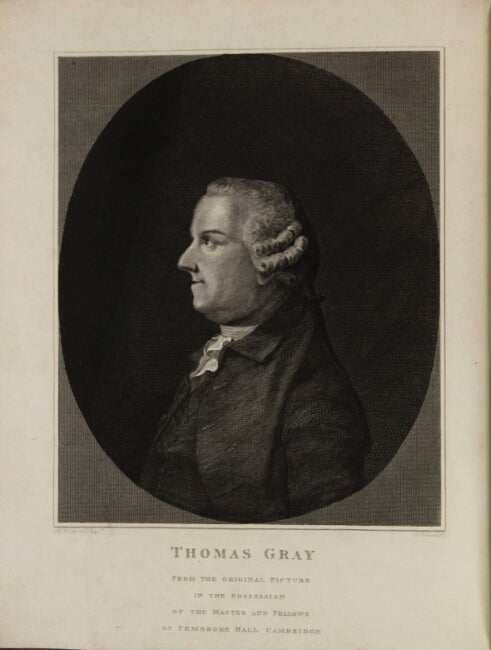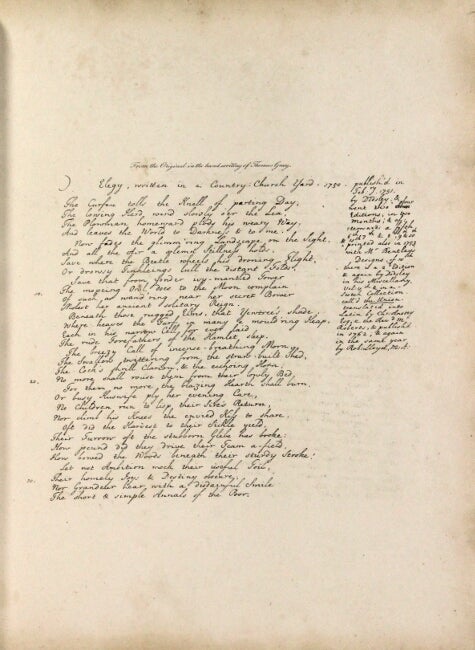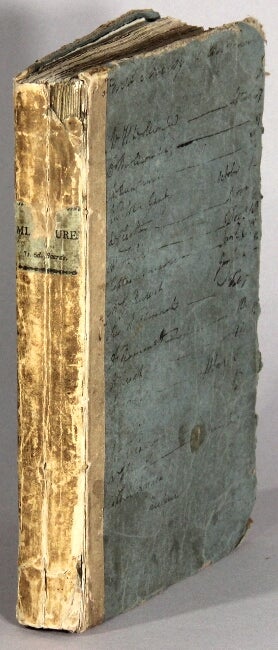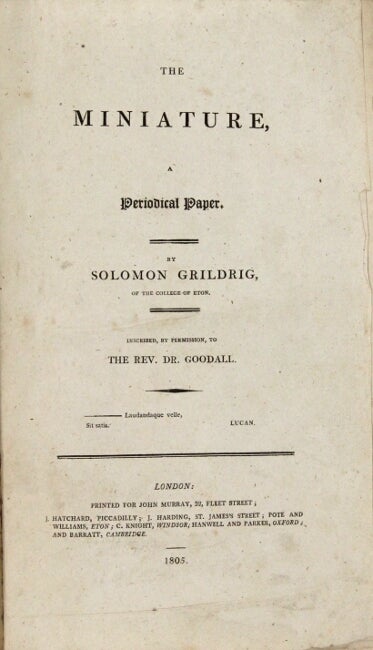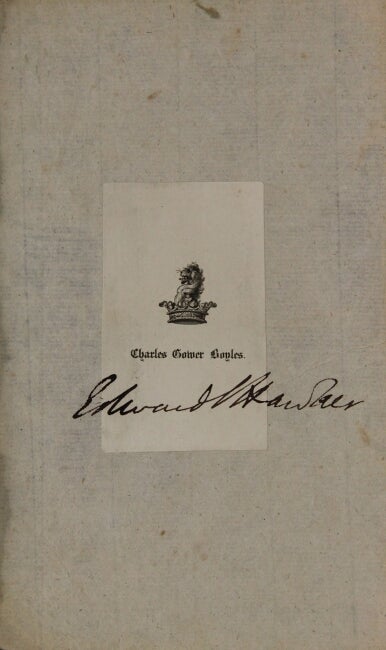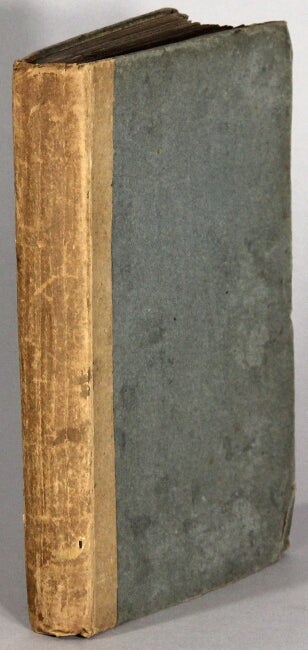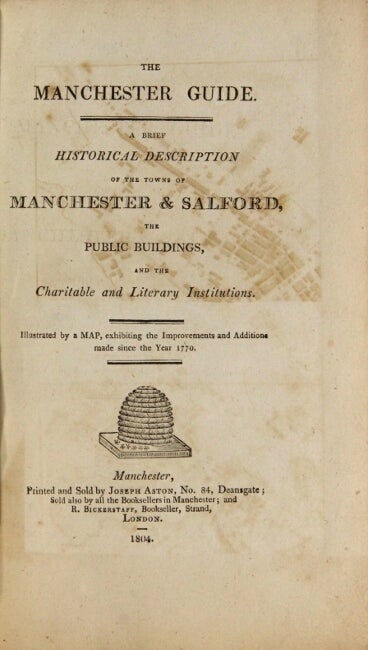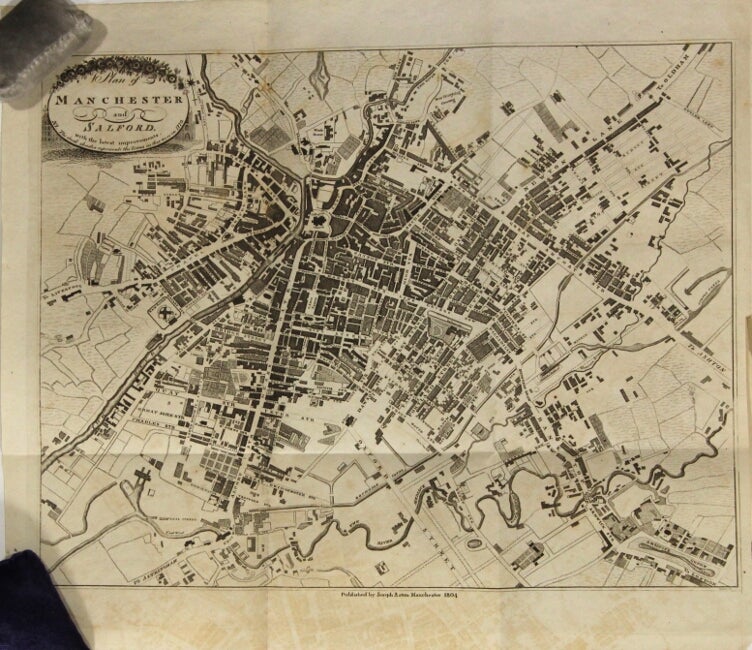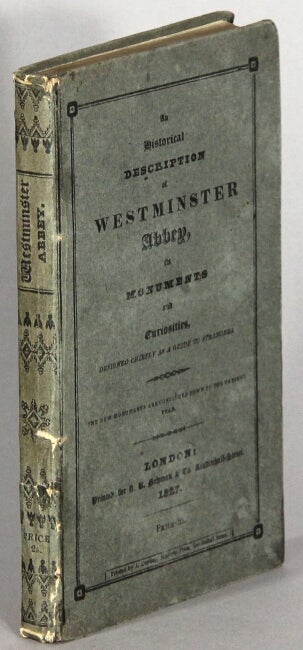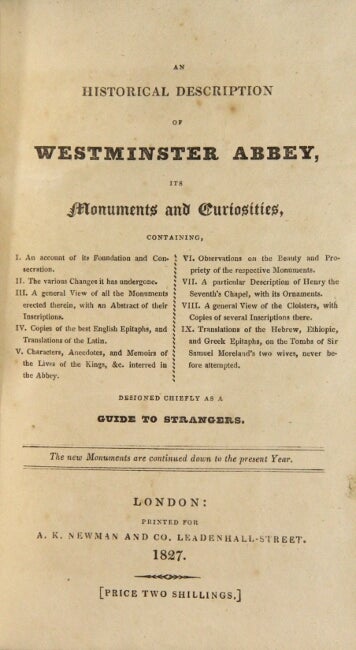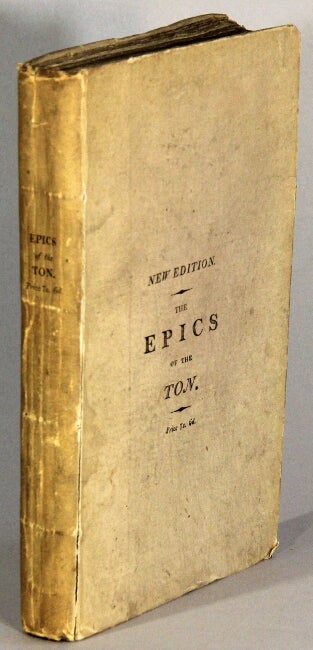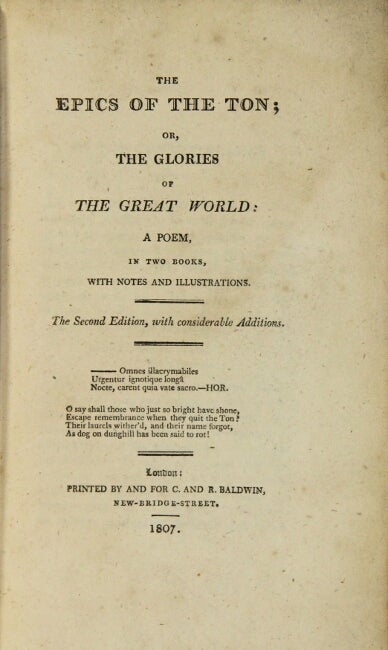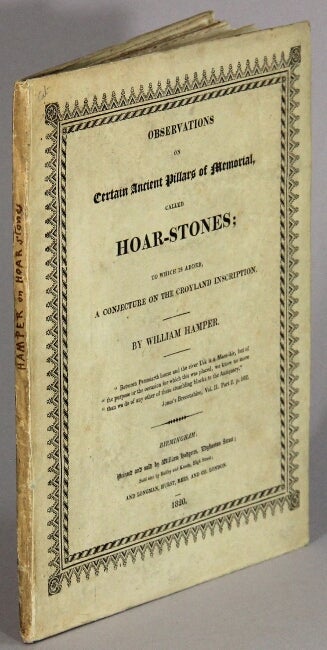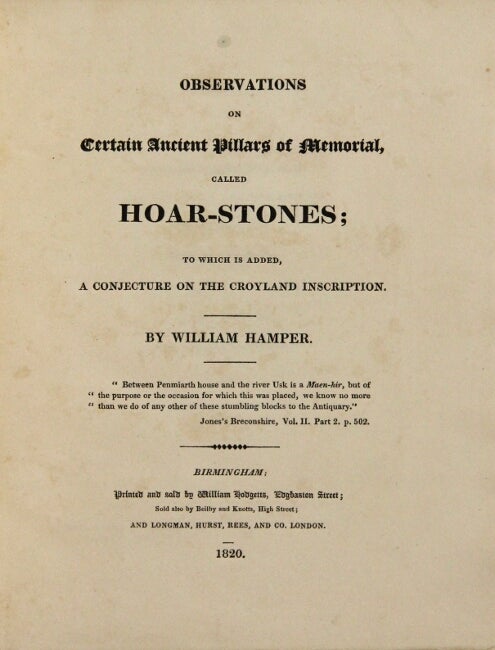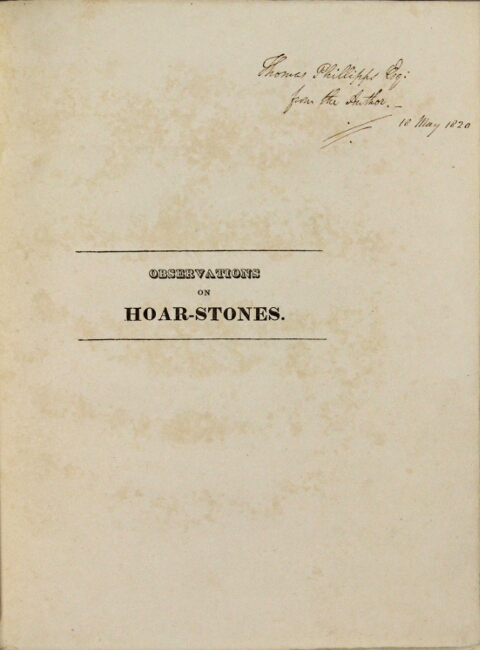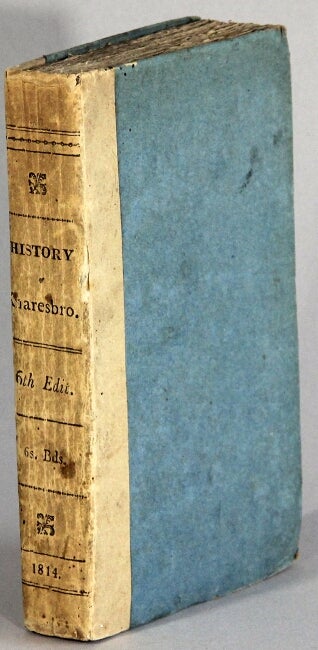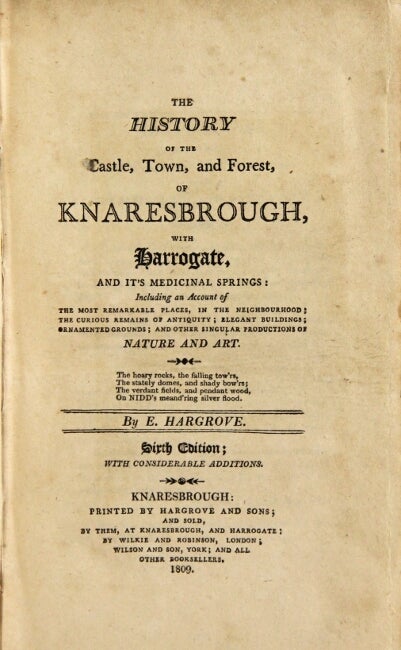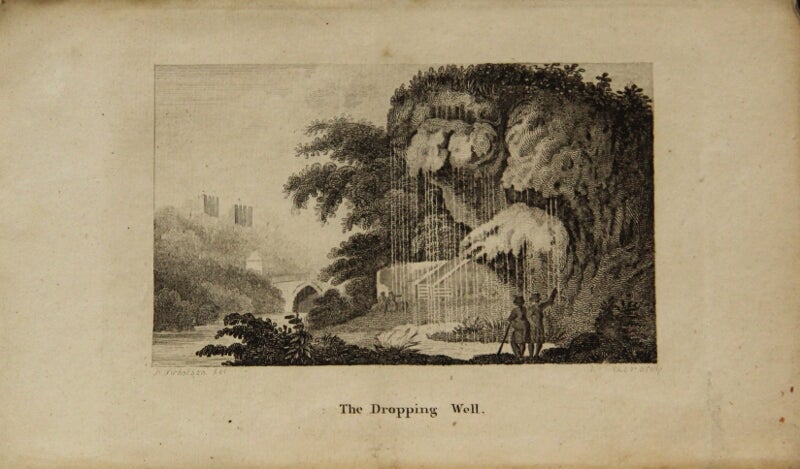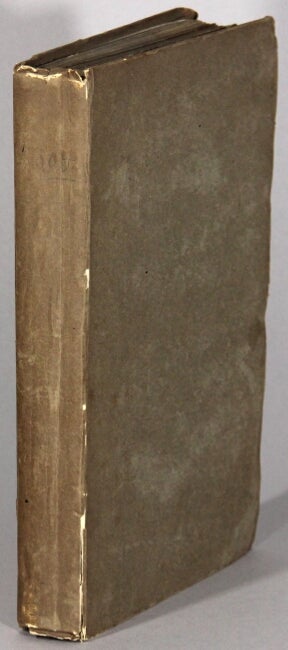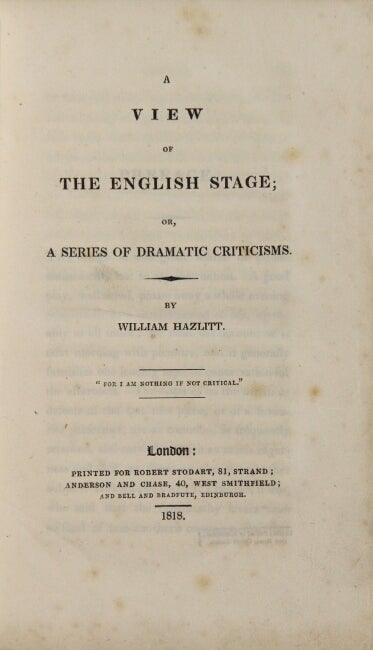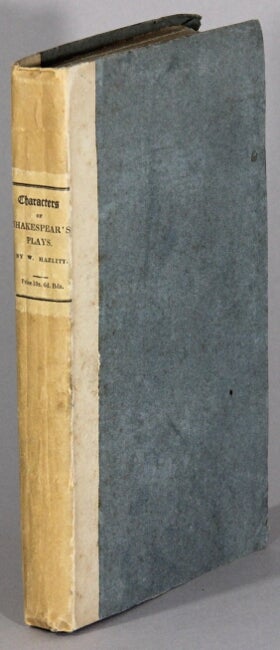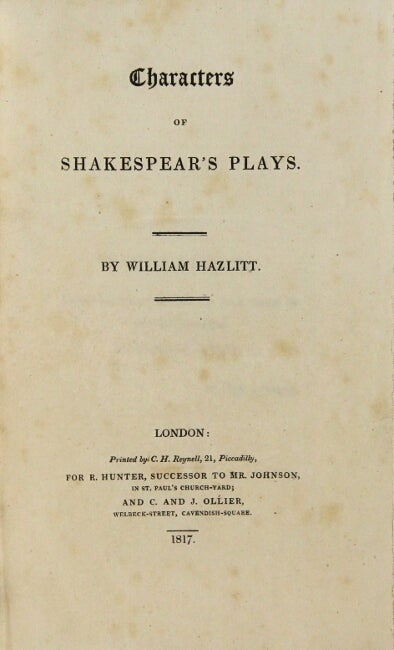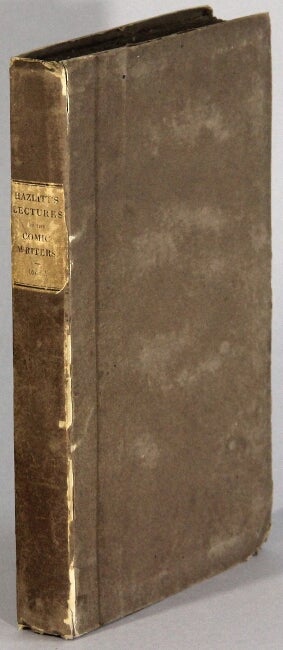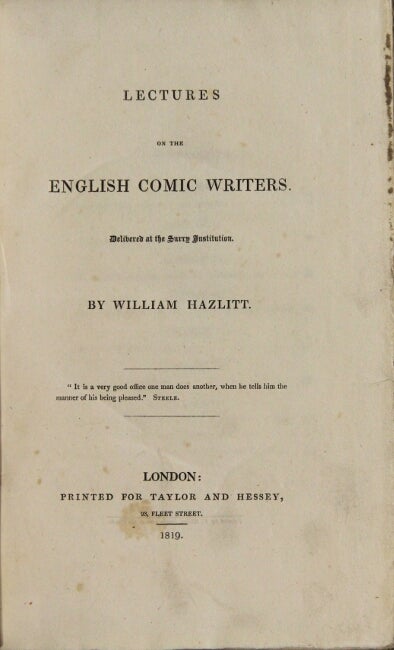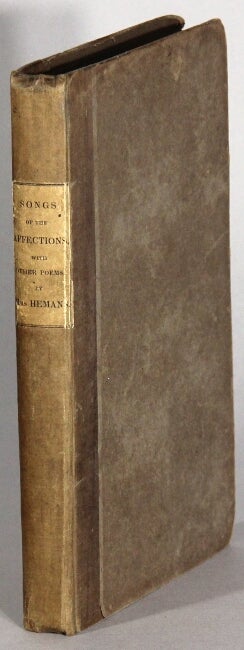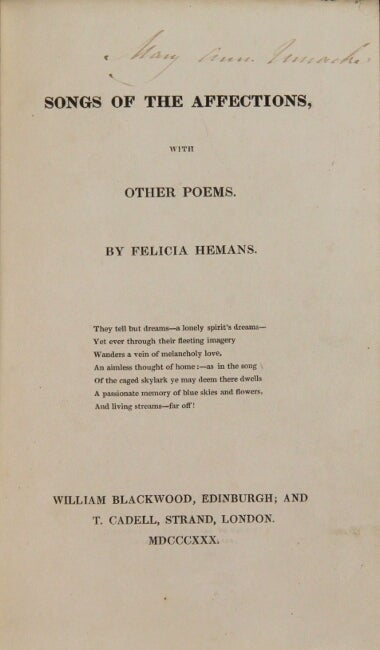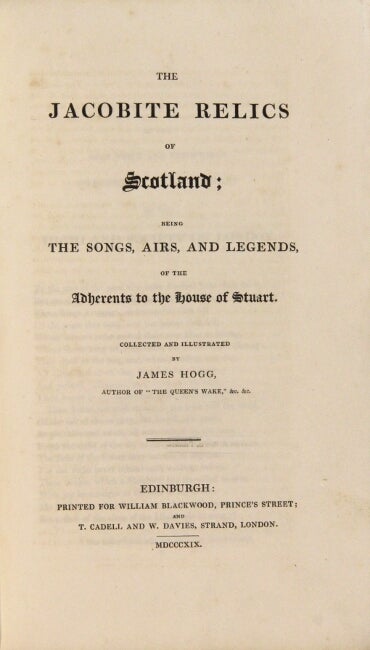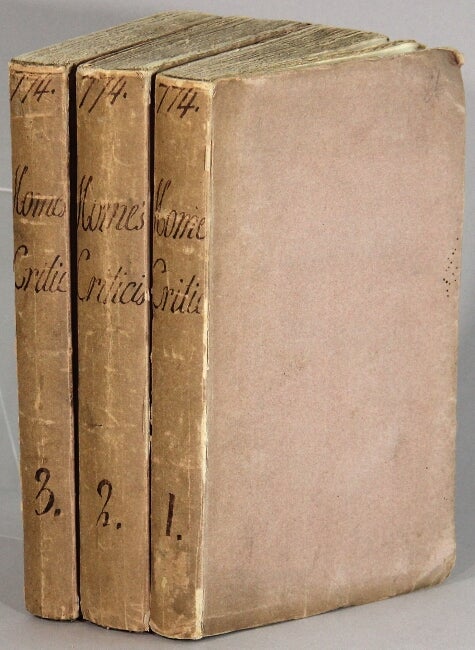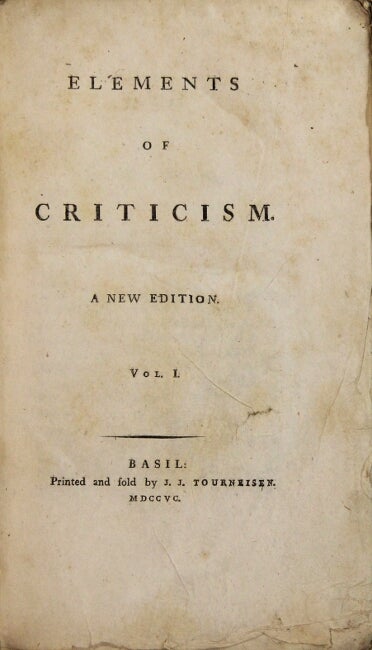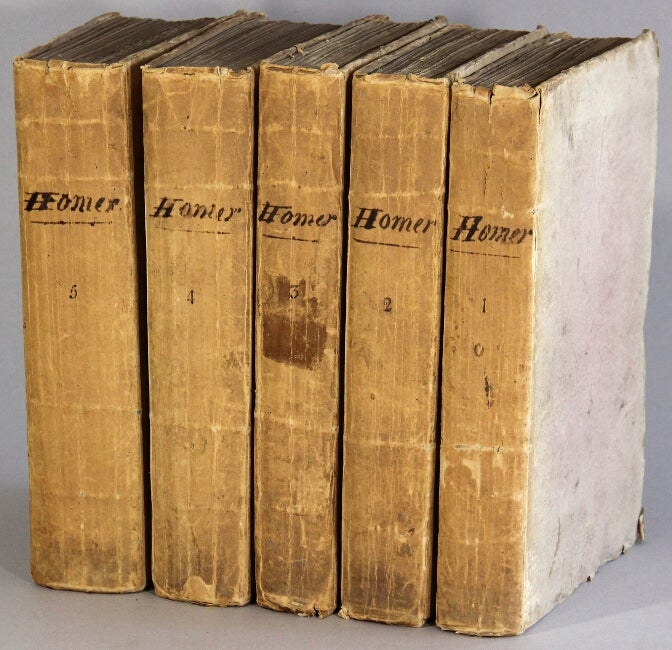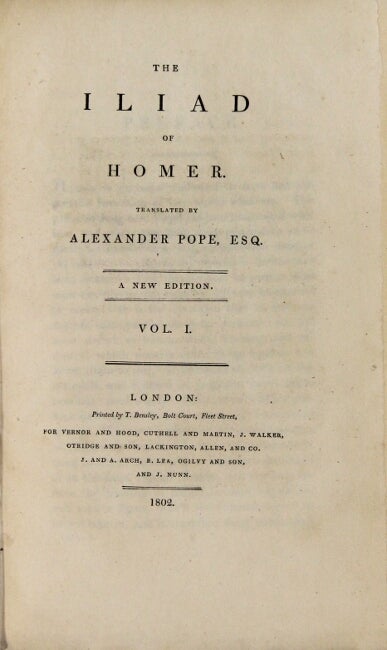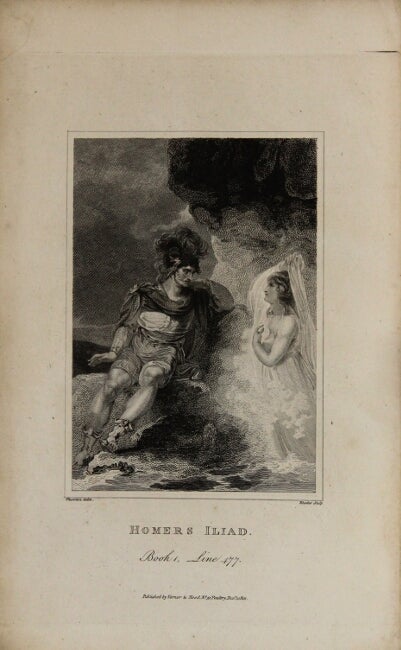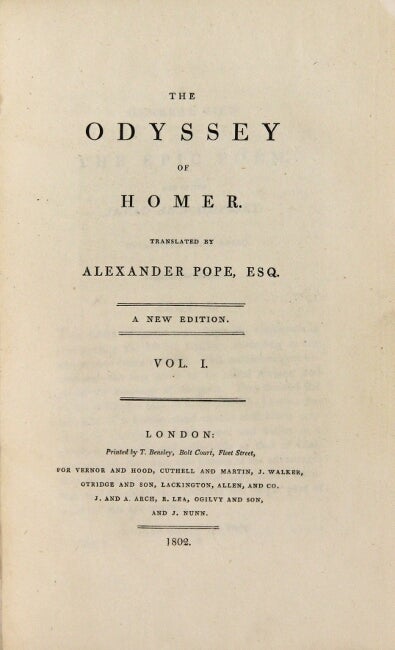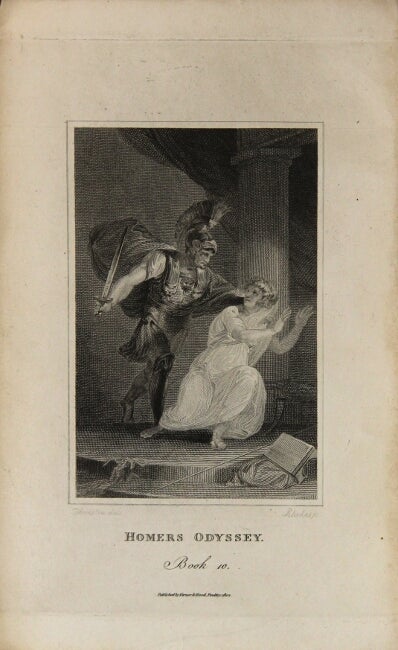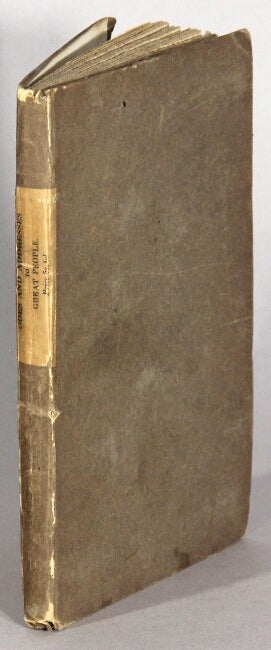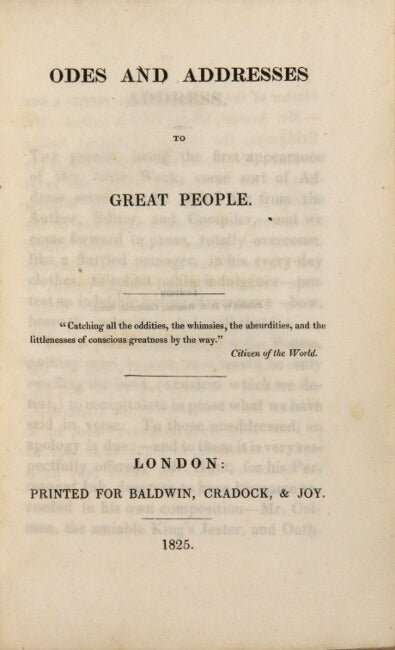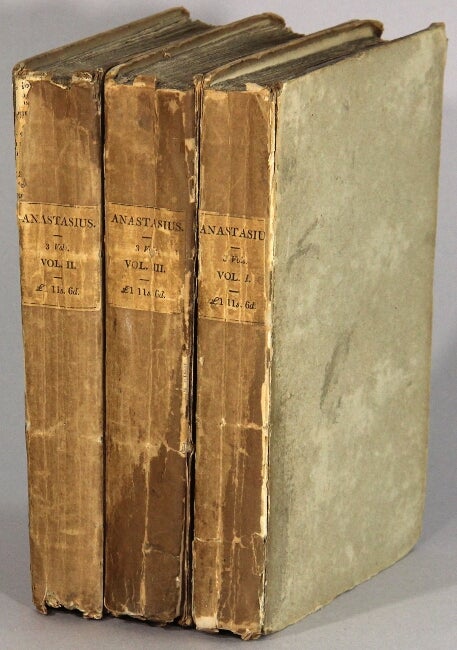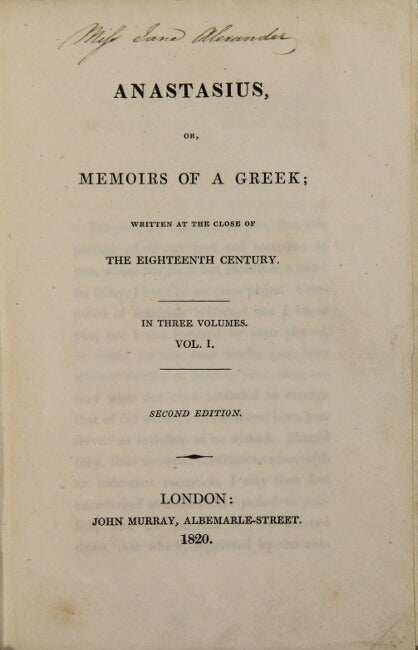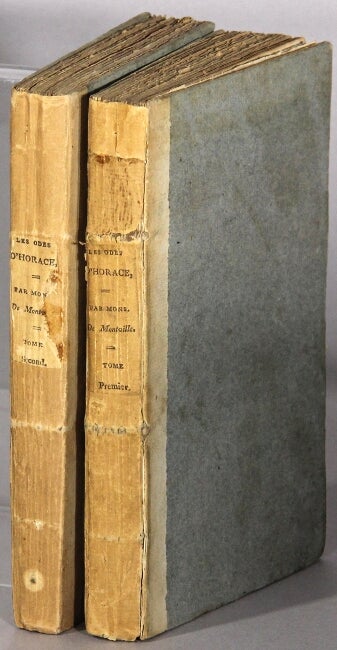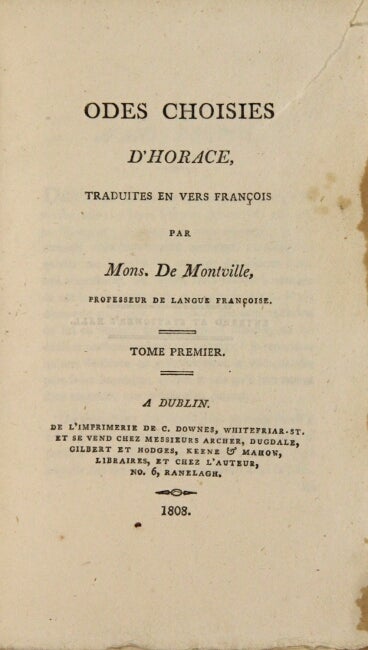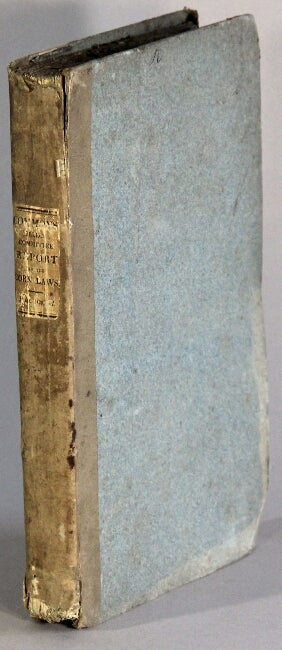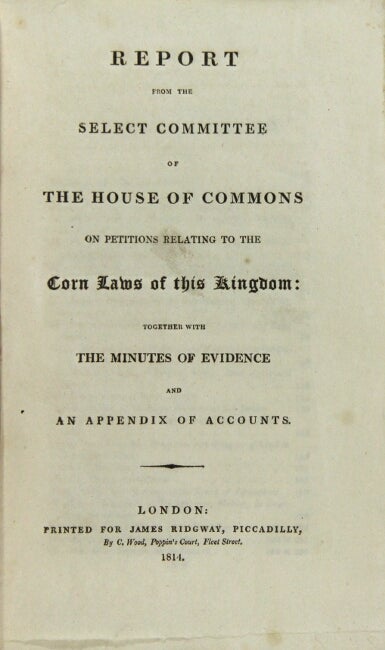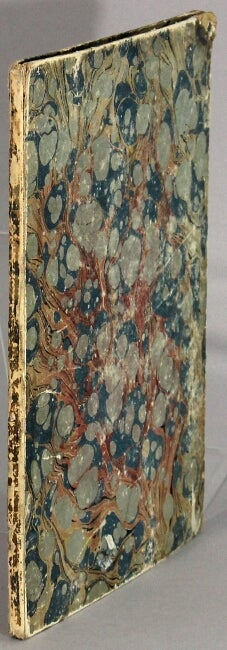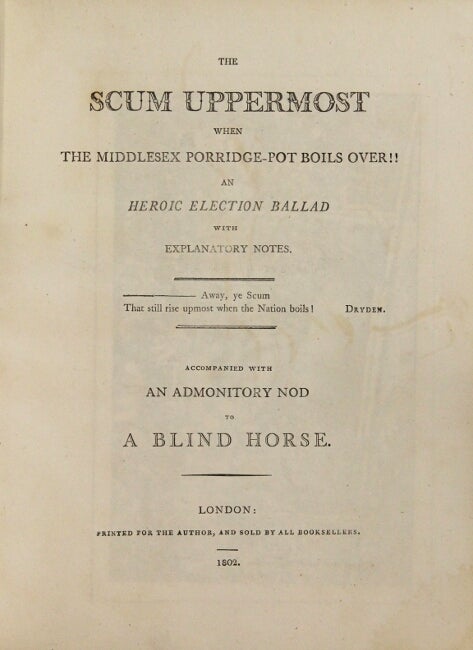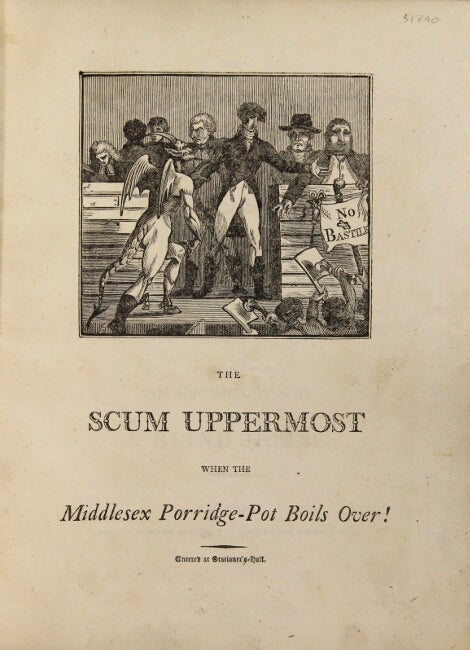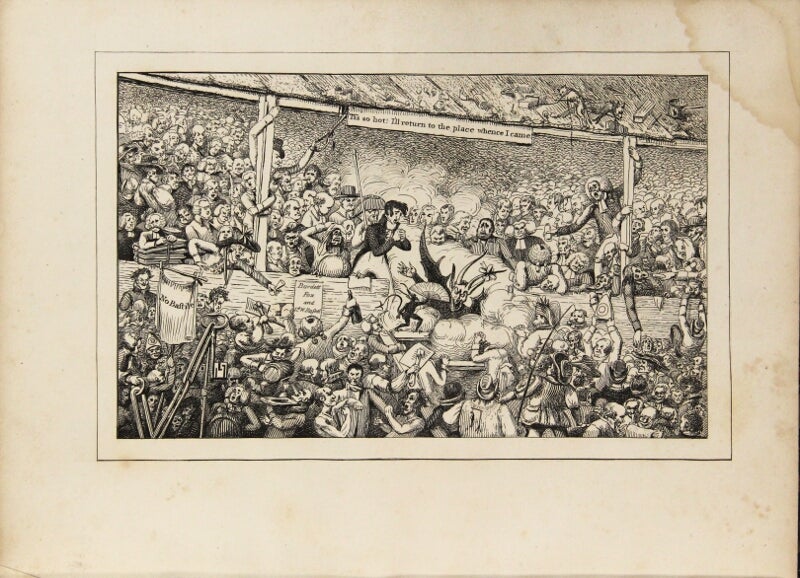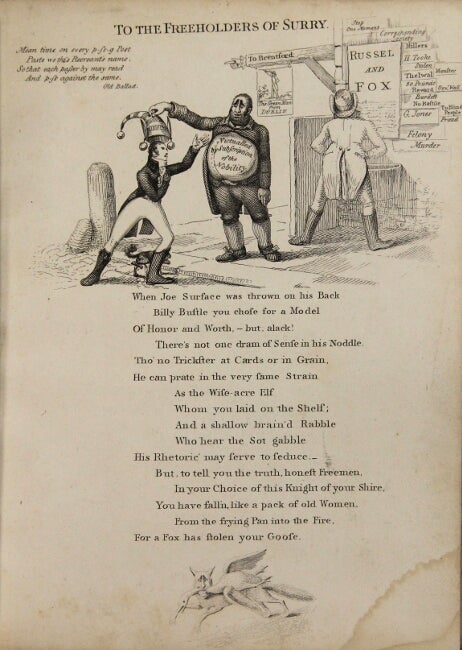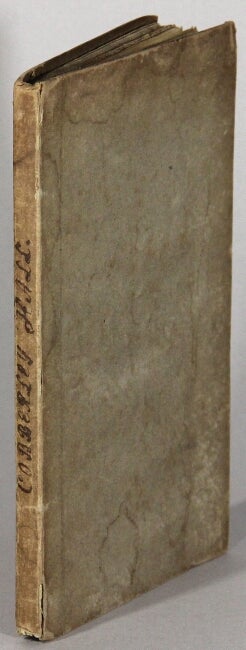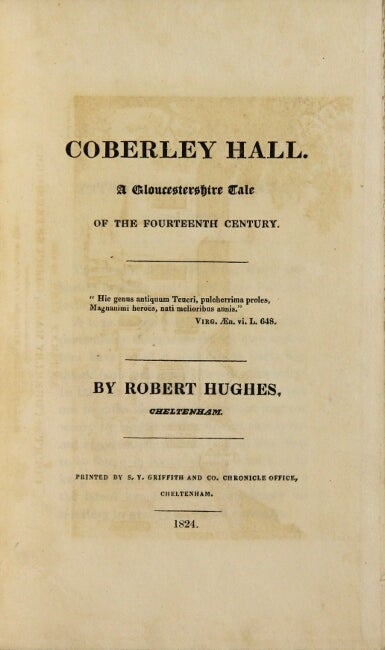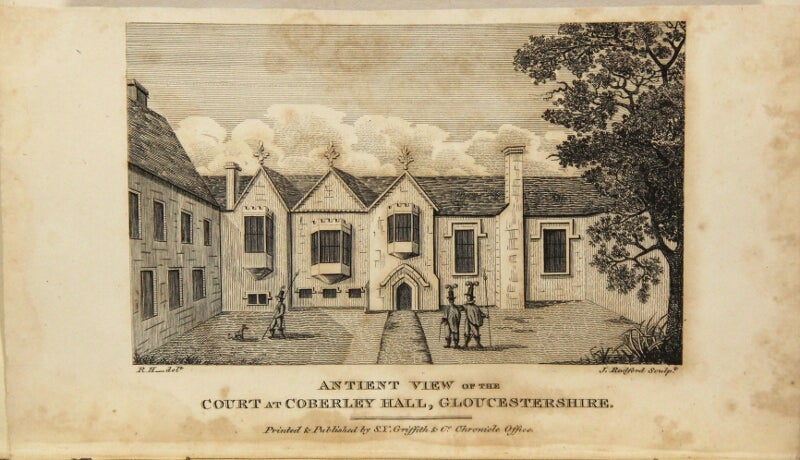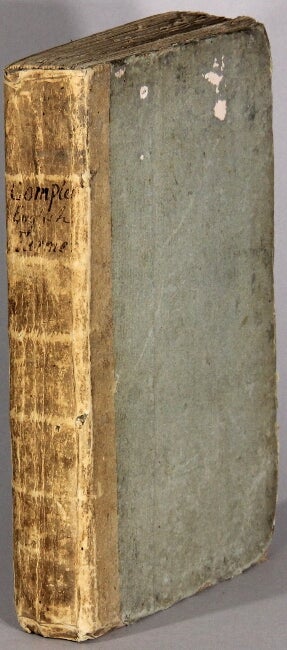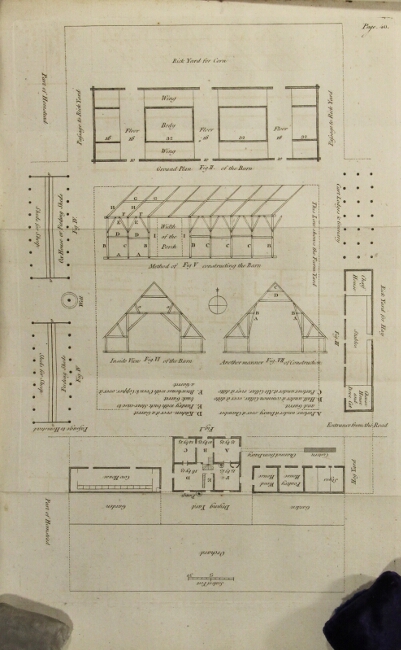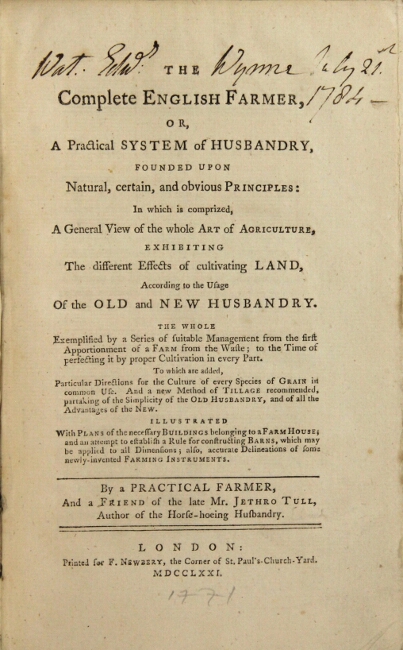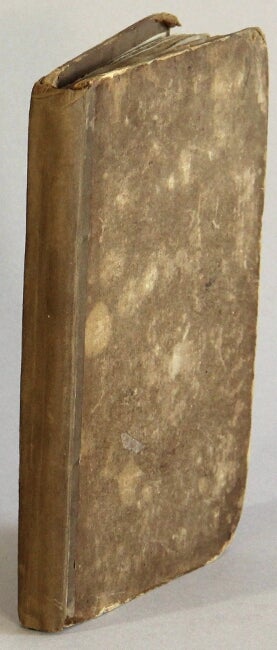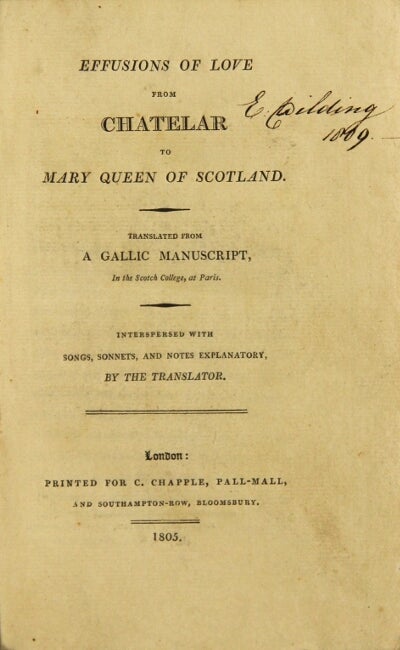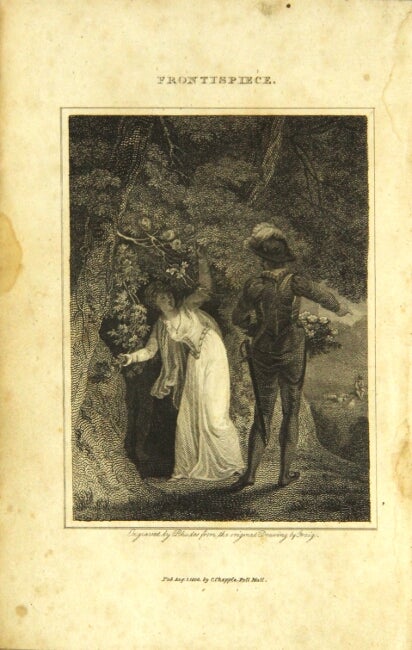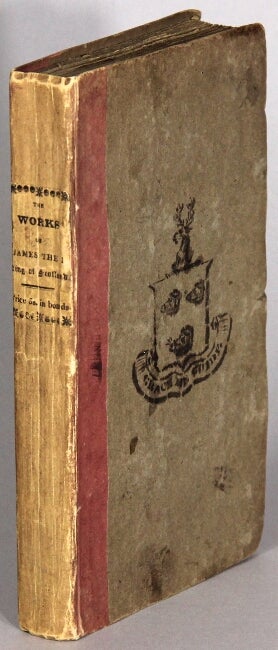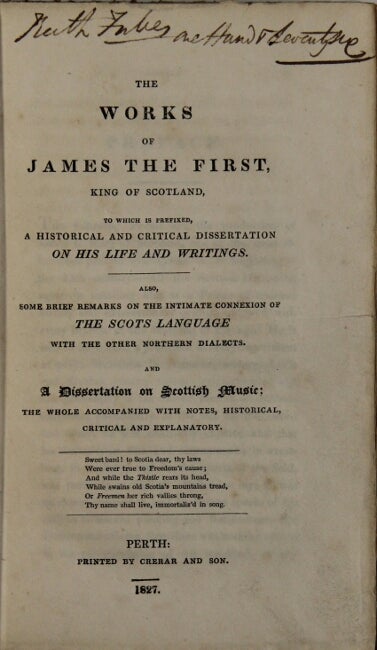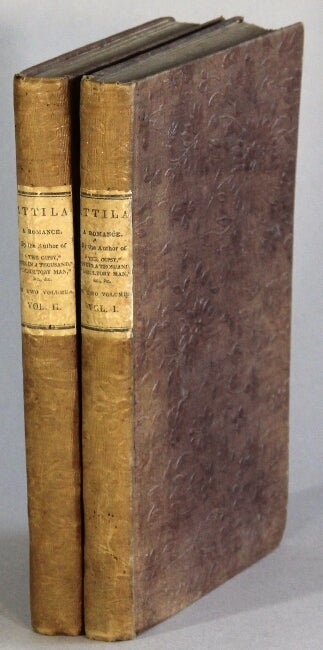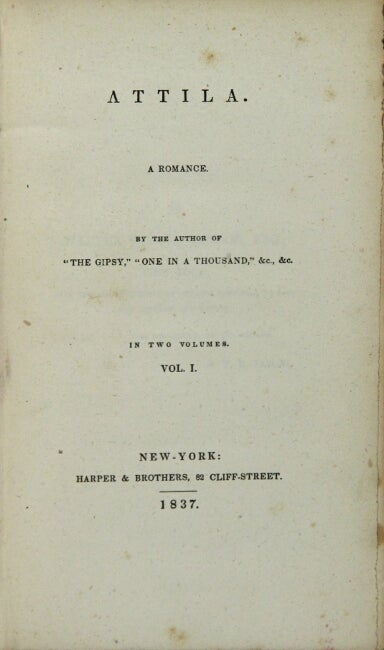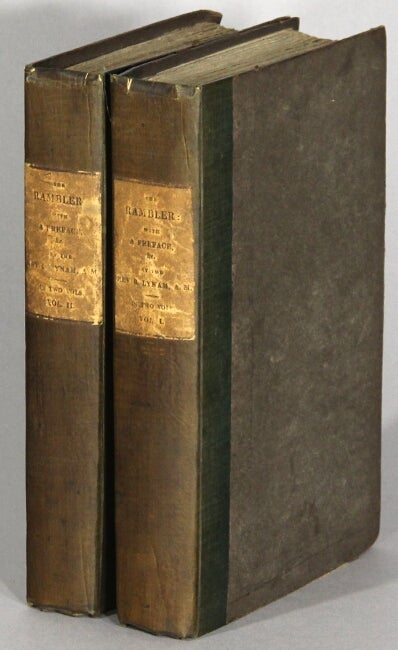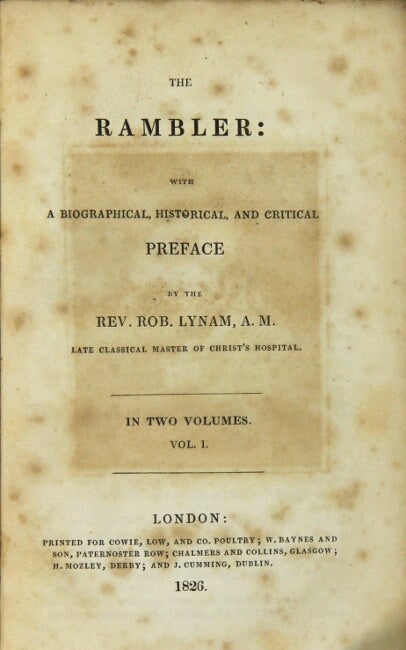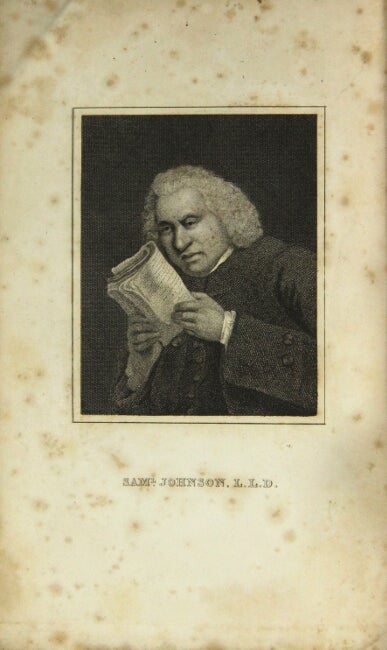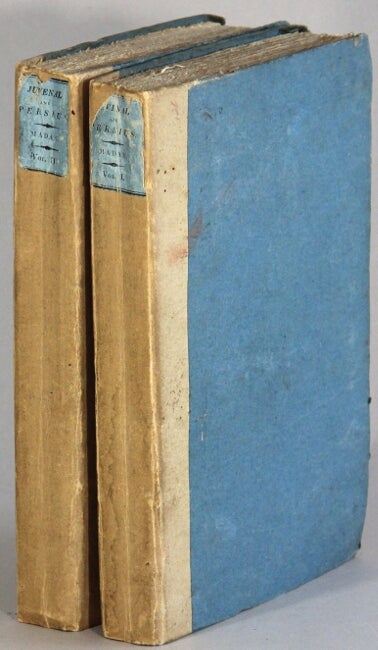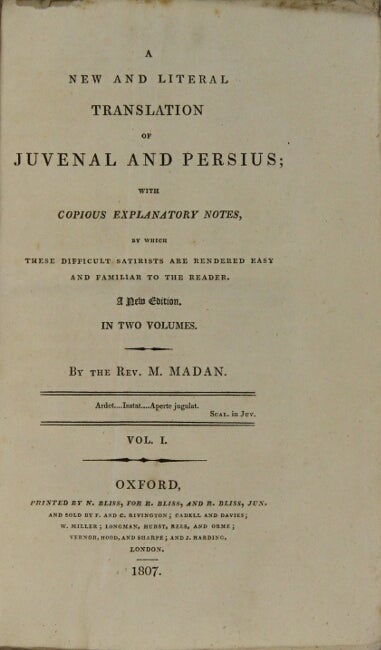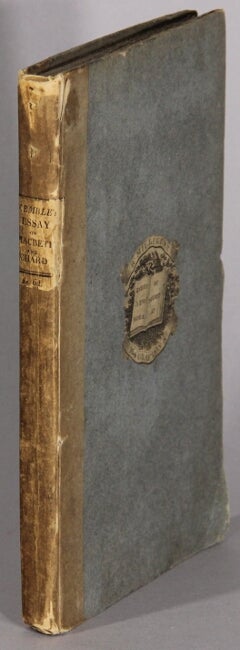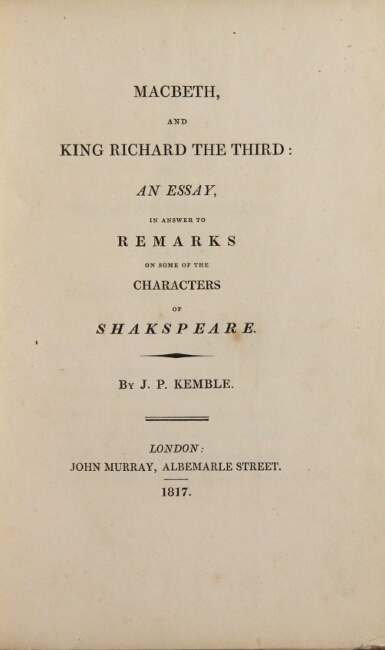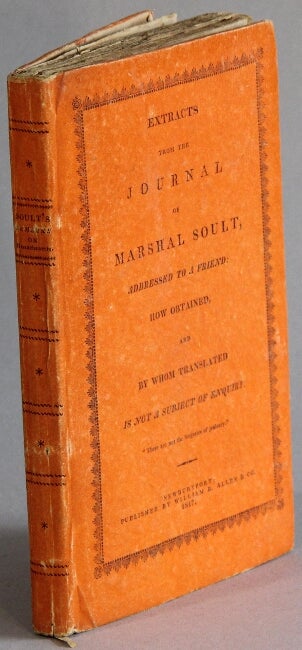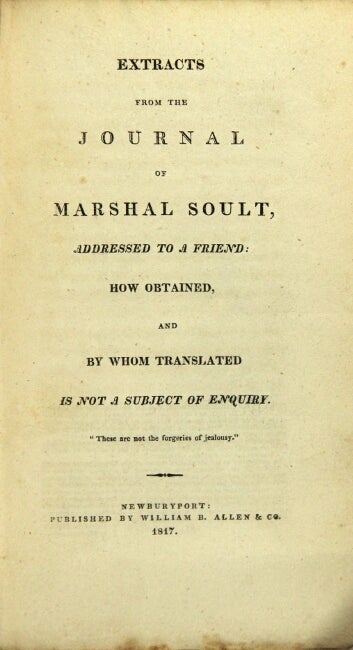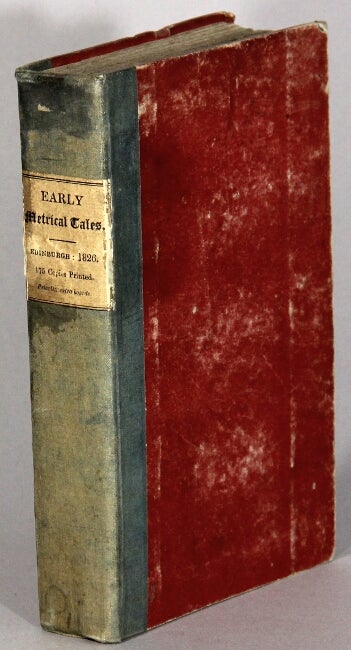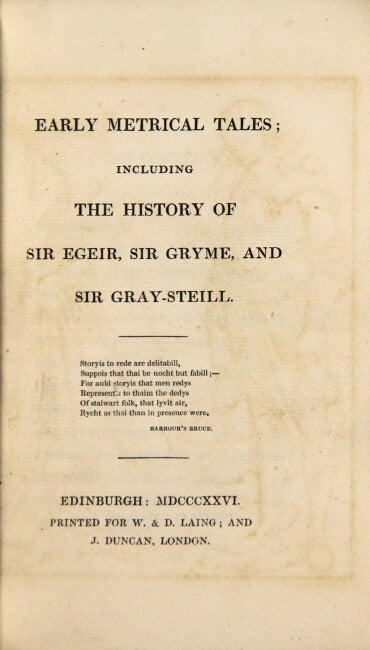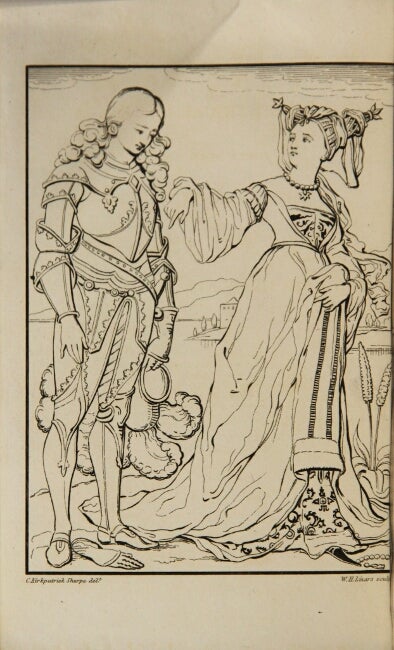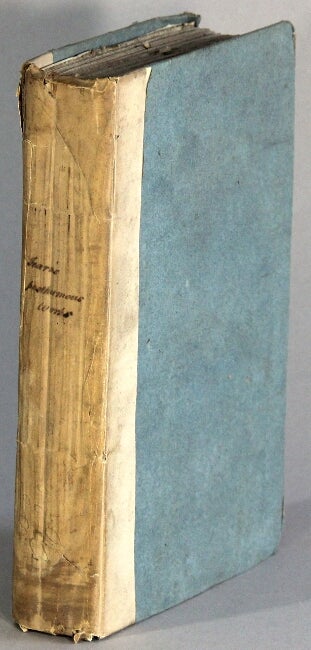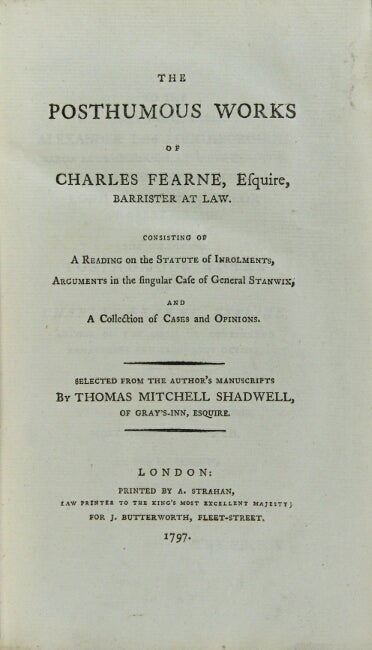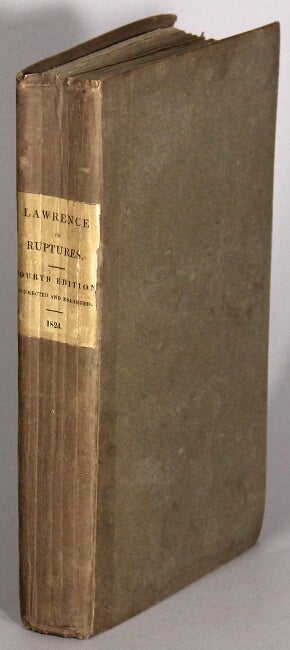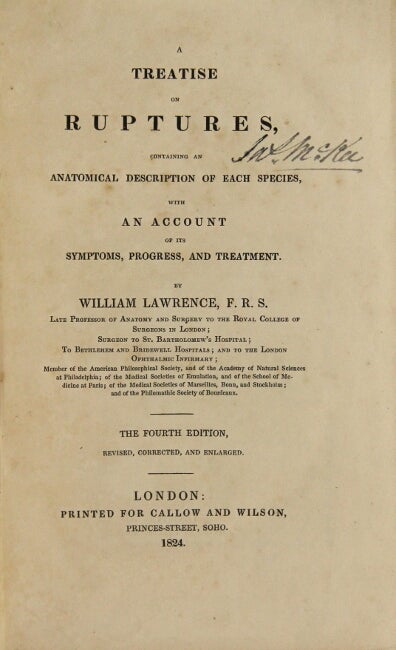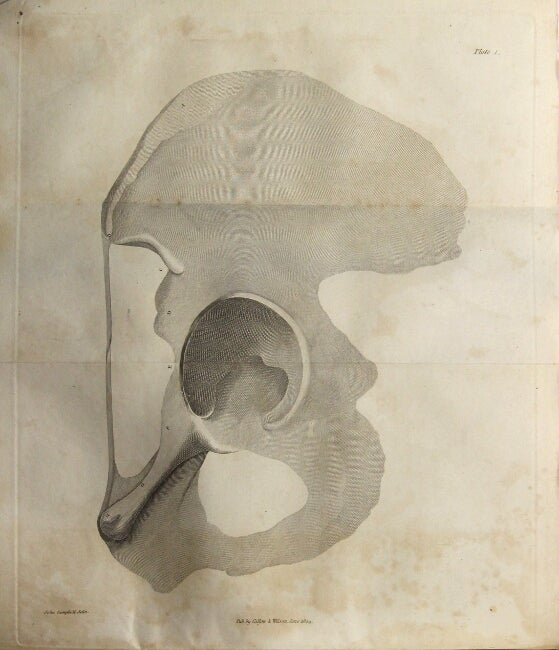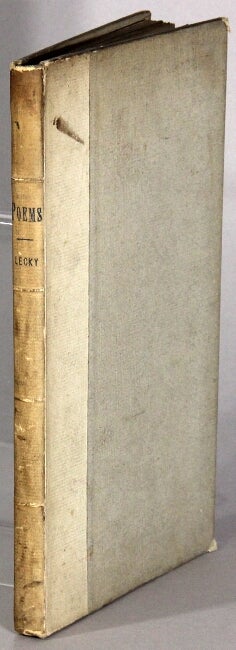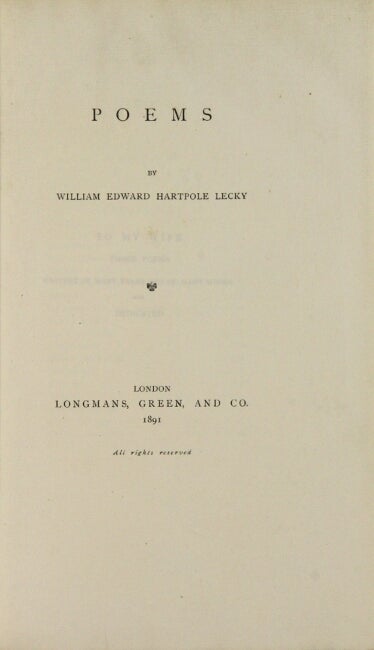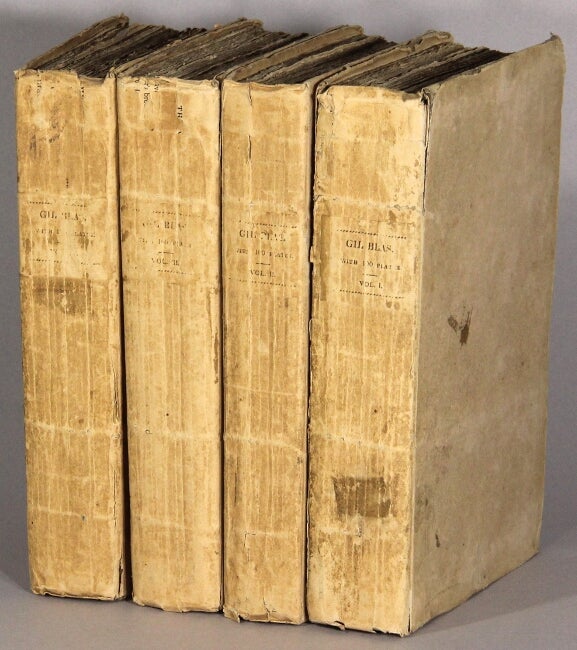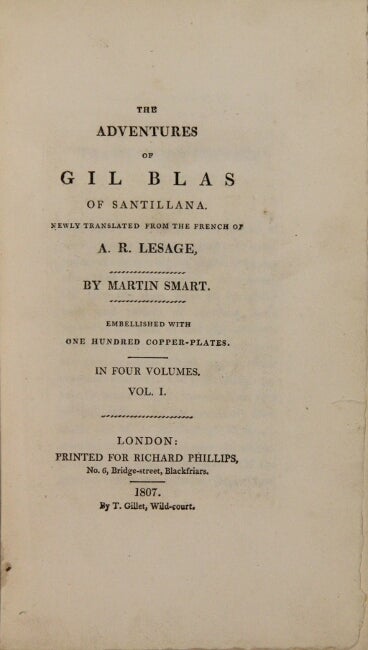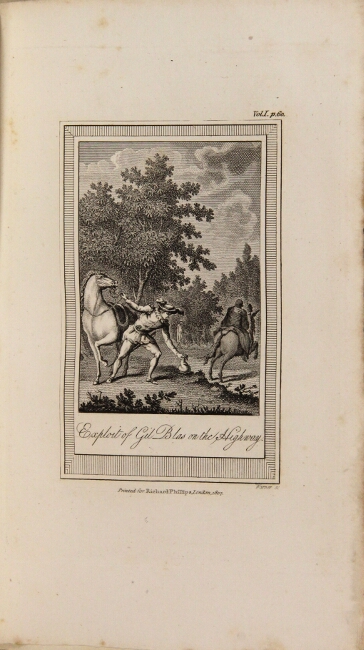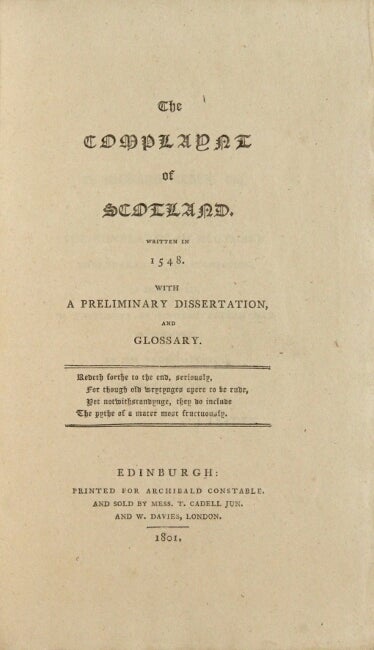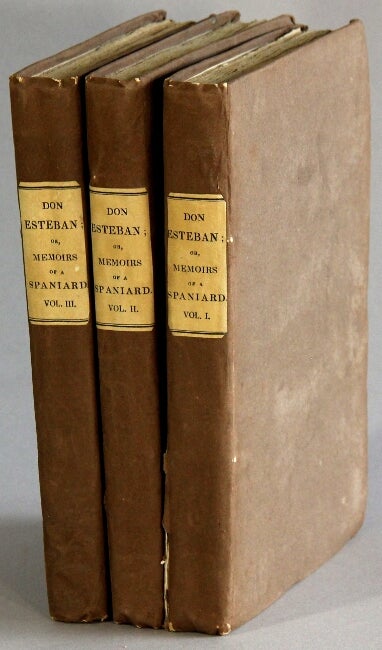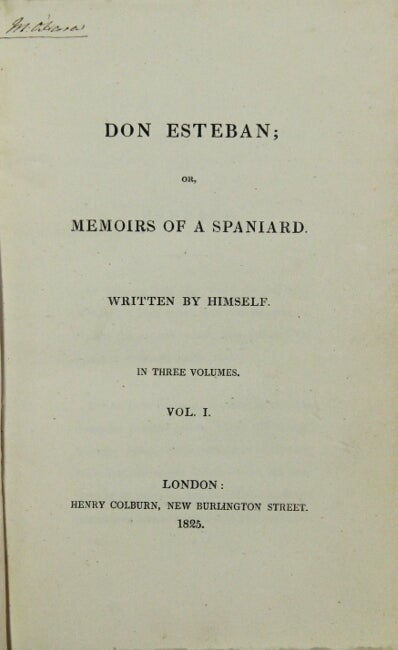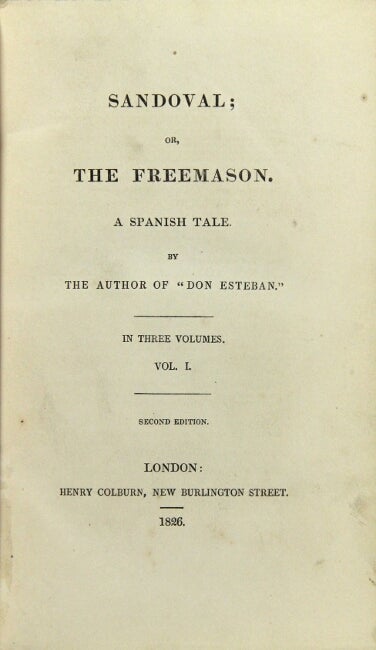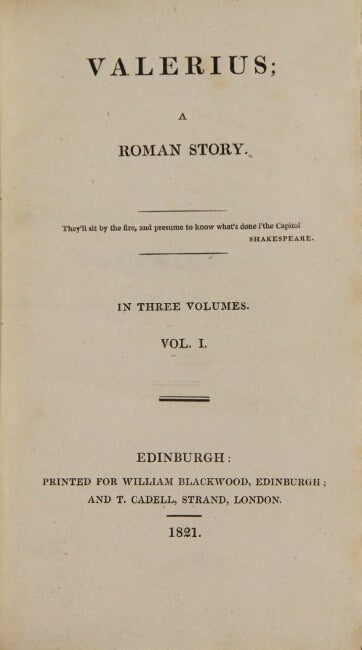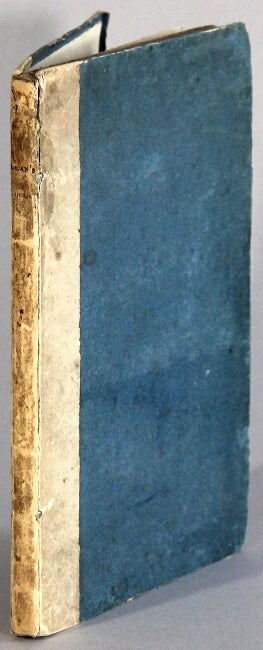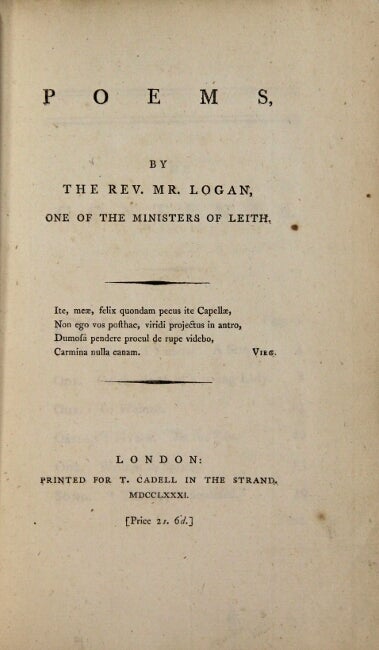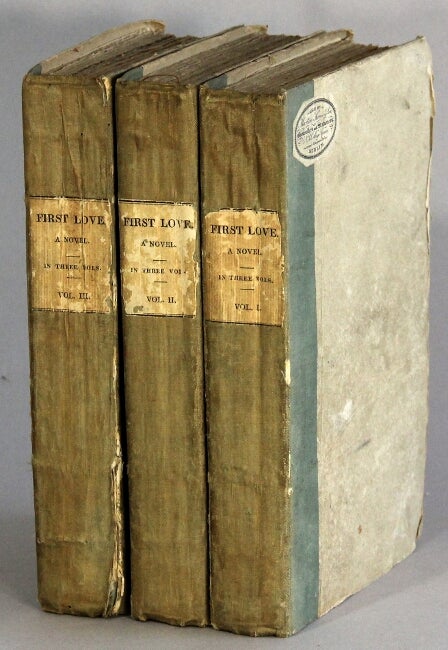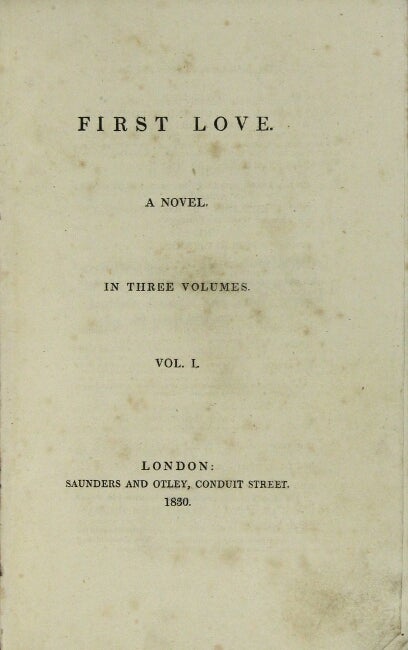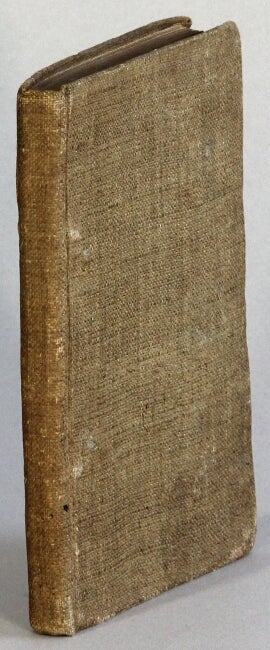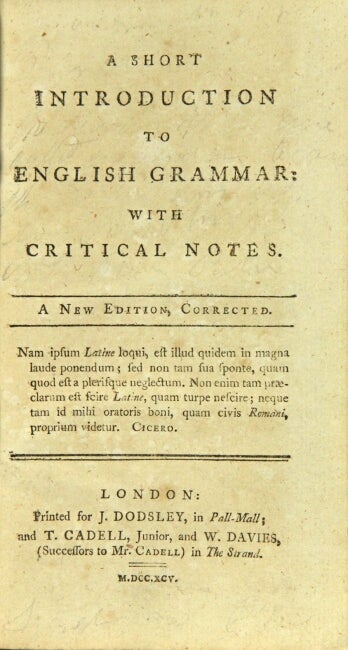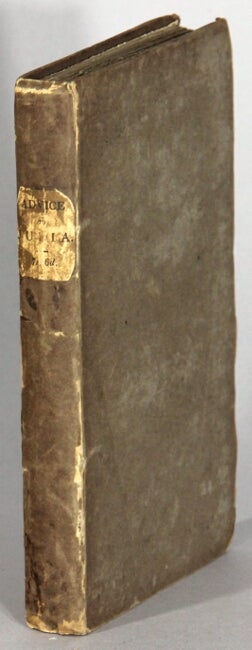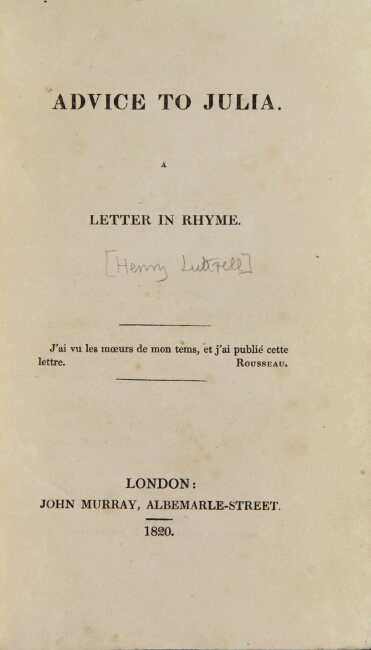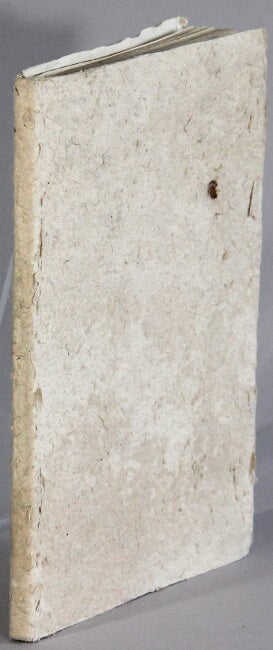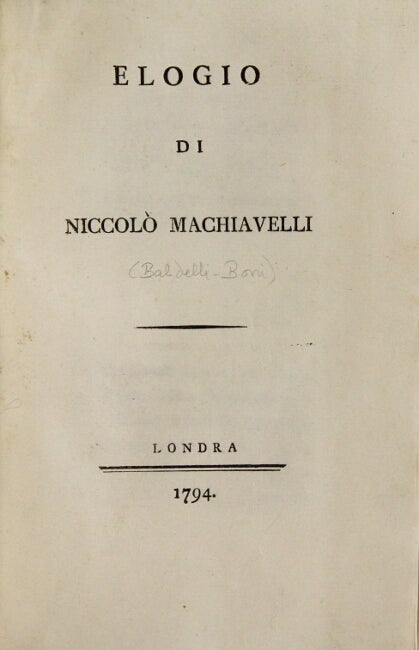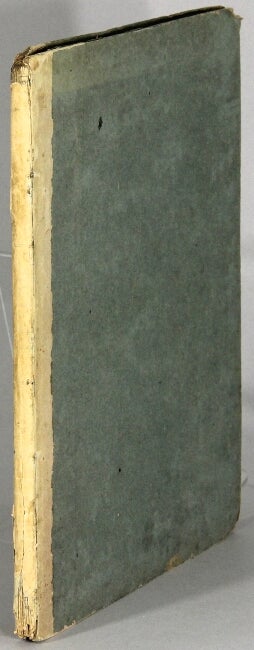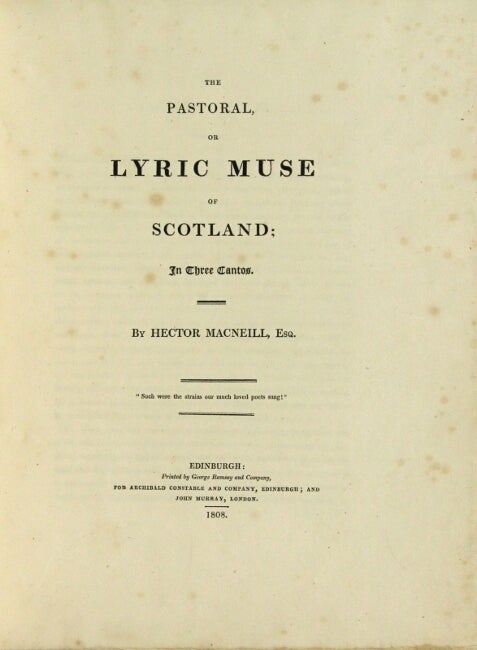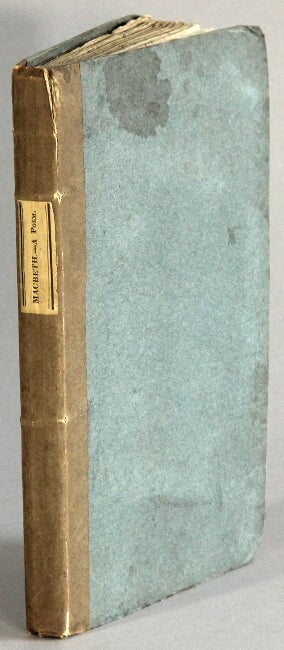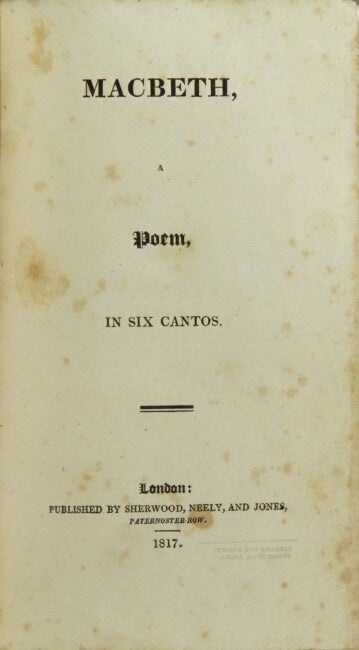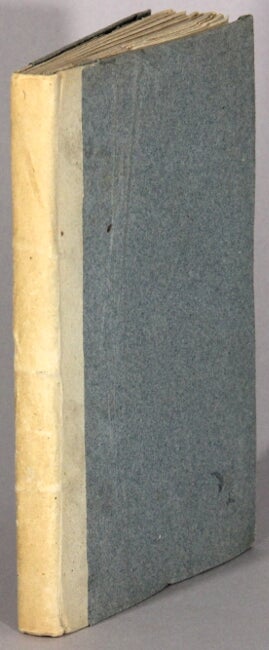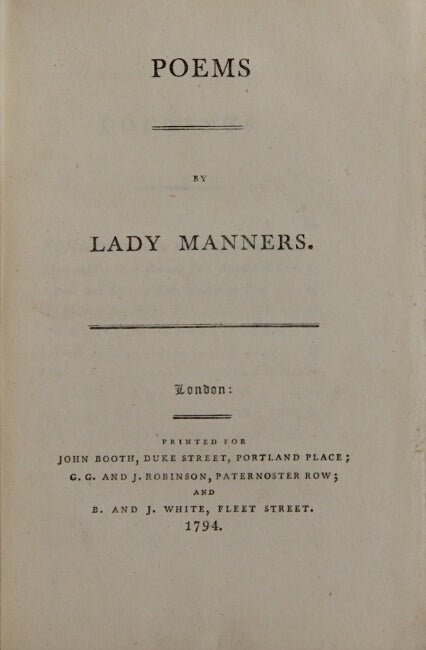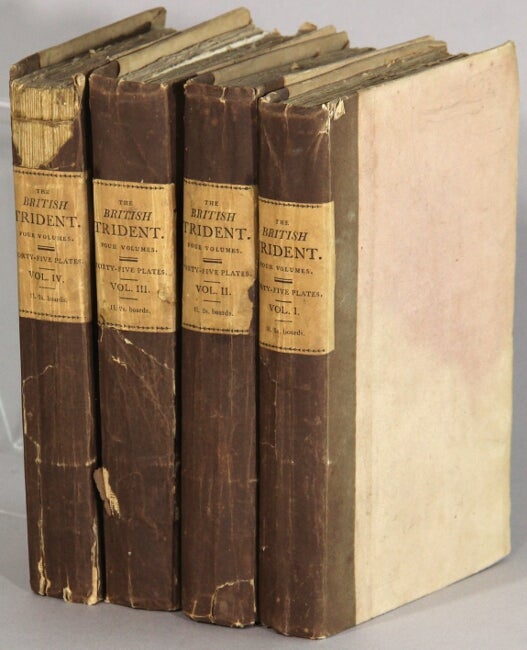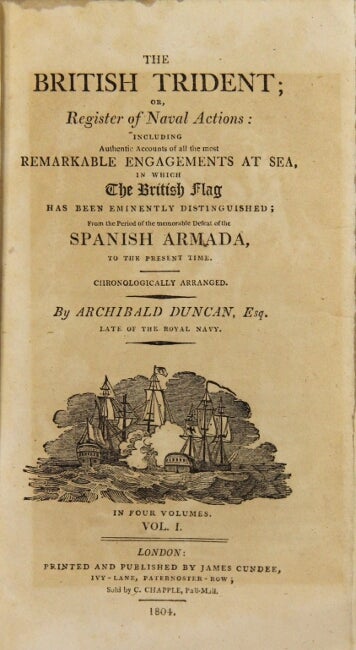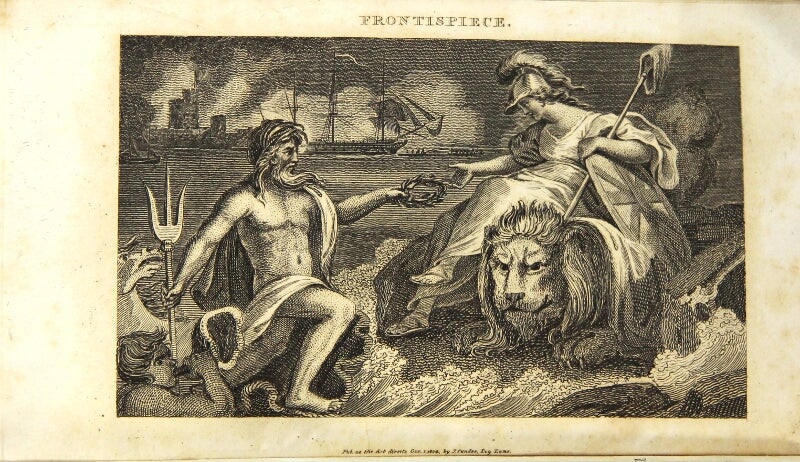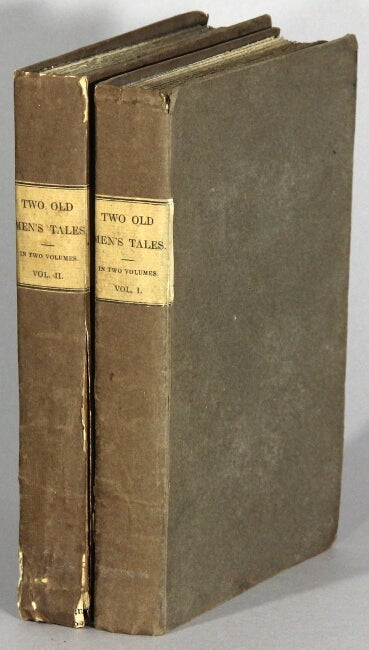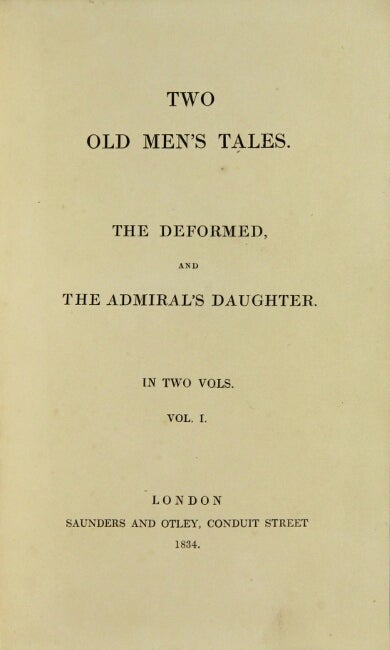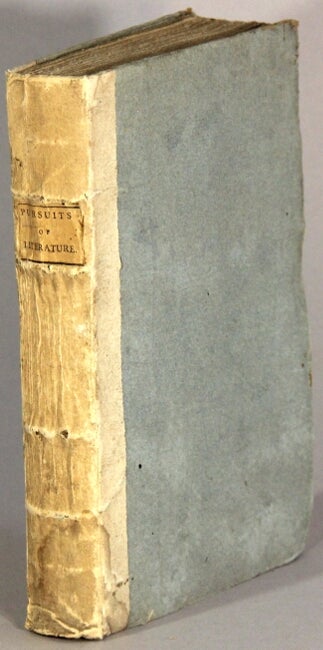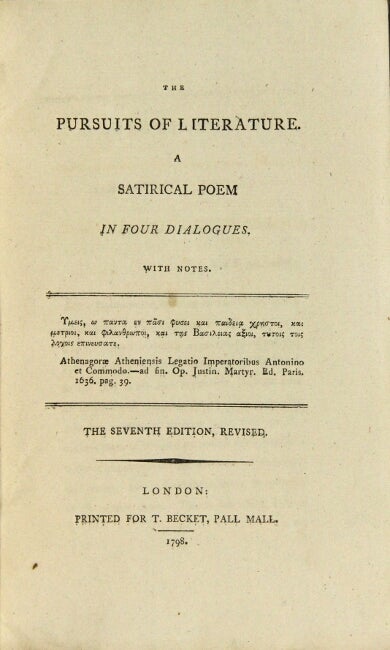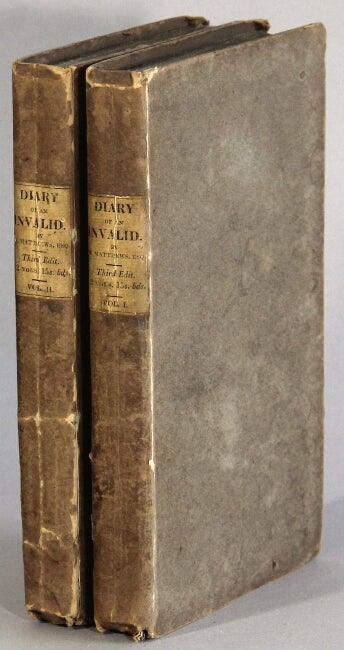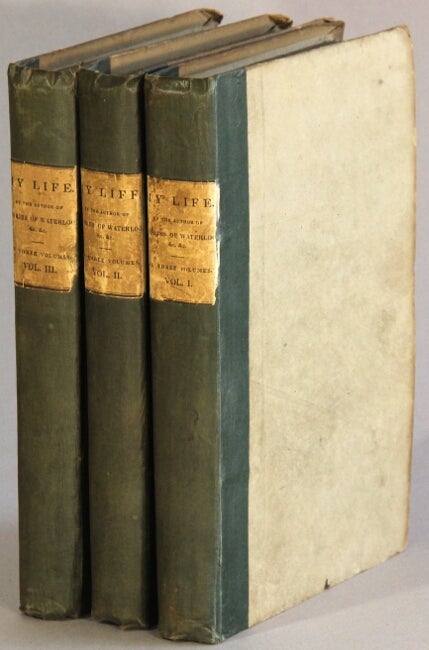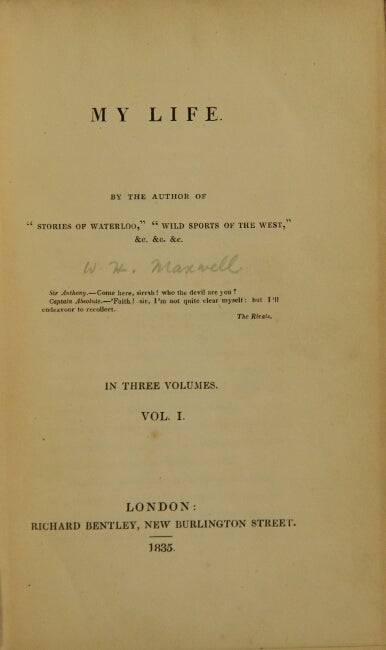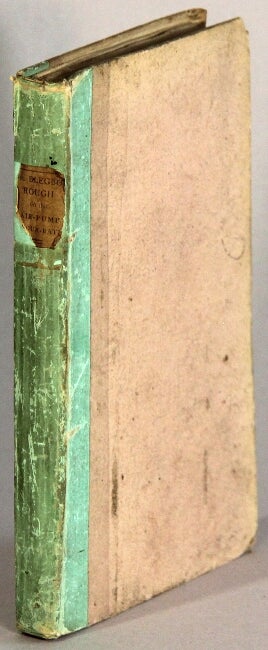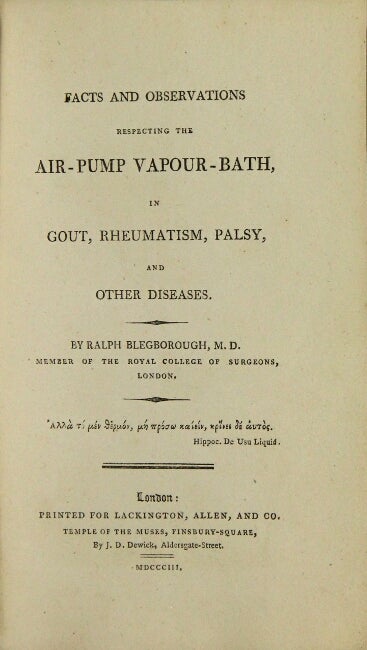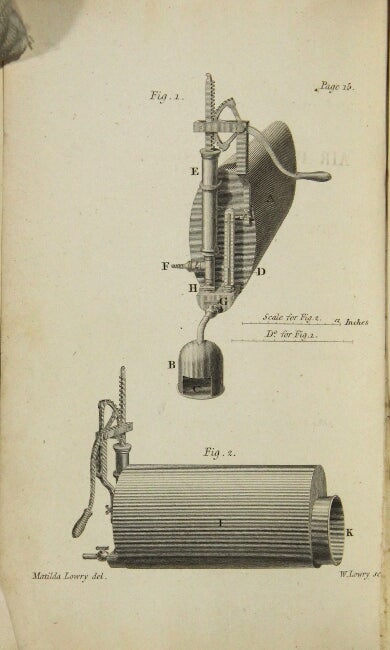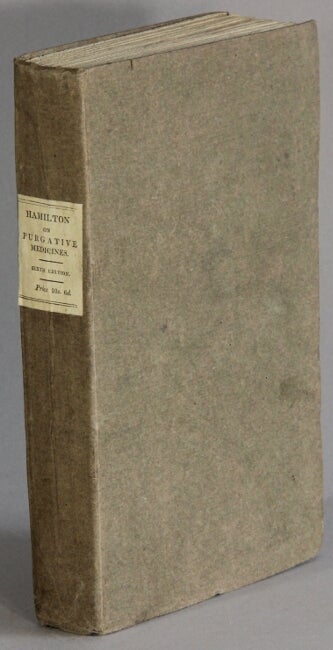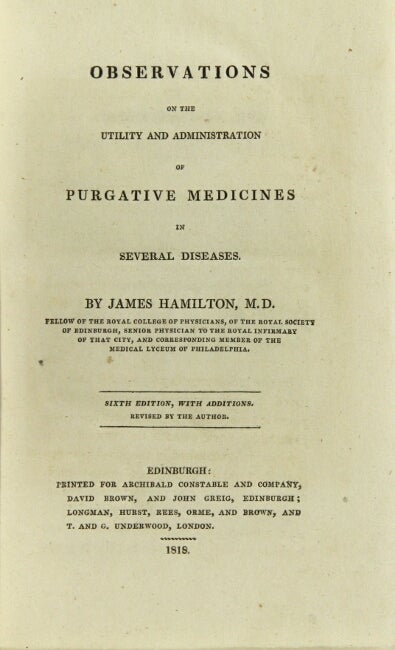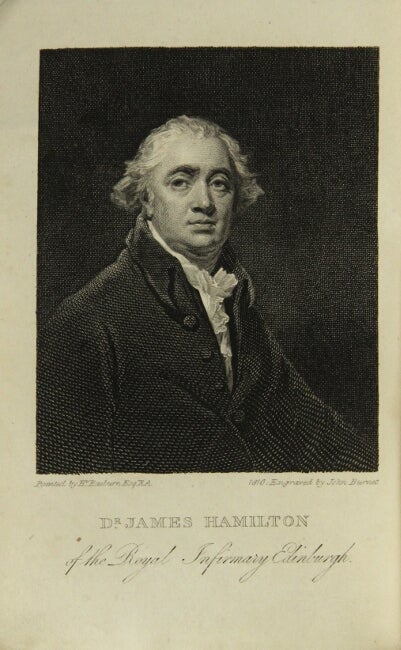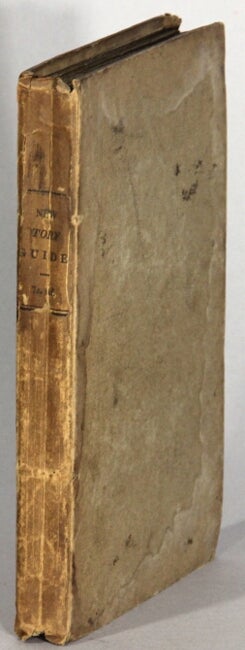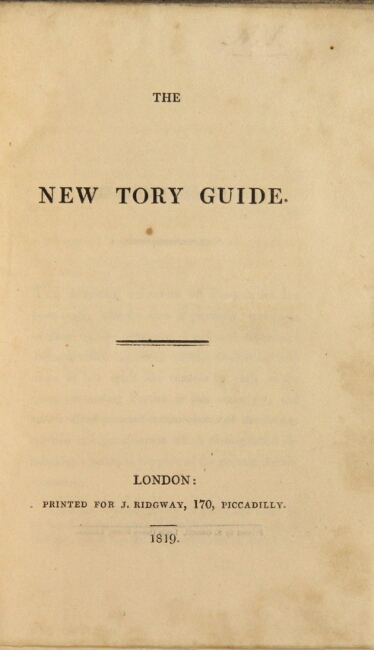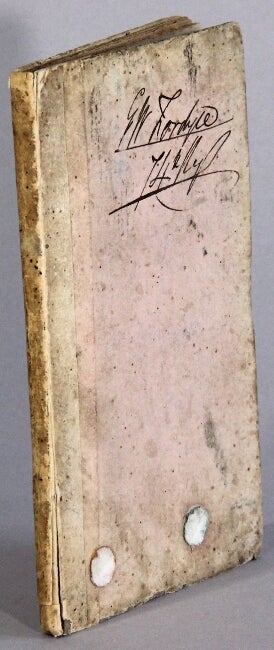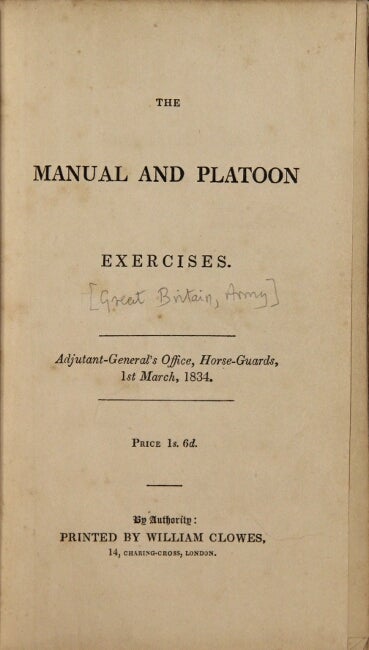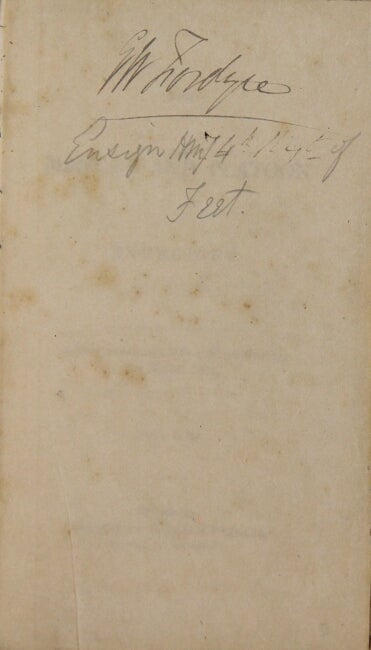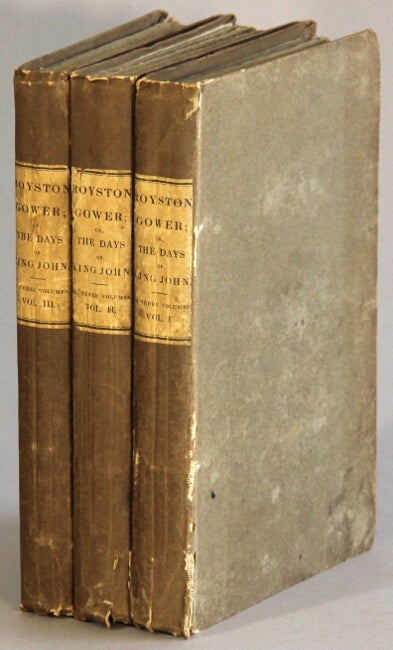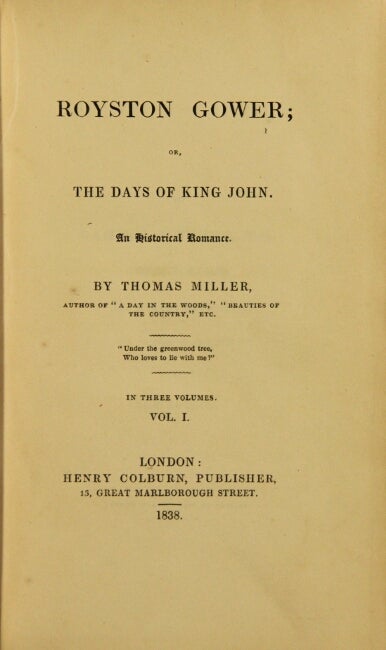In Boards, Uncut (Part 1)
Catalog 170
To order call toll-free at (800) 441-0076 or 651-290-0700
or email rulon@rulon.com
or, click on the "add to cart" link to order through our website. Phone calls and emails are generally quicker.
All books are guaranteed genuine as described, and are returnable for any reason during the first week after receipt. If you are returning an item, please let us know so we can make it available to another customer.
Shipping and handling charges are extra and billed at cost.
For more, see Part Two
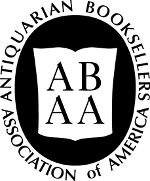
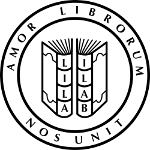
A note on OCLC
As is now the norm, OCLC counts are tentative, at best, as we recognize that searches using different qualifiers will often turn up different results. Searches are now further complicated by the vast numbers of digital, microfilm, and even print-on-demand copies, which have polluted the database considerably, making it difficult, without numerous phone calls or emails, to determine the actual number of tangible copies. Hence, even though the counts herein have been recently checked, most all should be taken as a measure of approximation.

1-1. The spectator. With sketches of the lives of authors, and explanatory notes. In eight volumes. A new edition. London: printed for William Allason, No. 31, New Bond street, and J. Maynard, Panton street, Haymarket, London; and W. Blair, Edinburgh, 1819.
$375
8 volumes, 12mo, pp. xxii, 369, [7]; vi, 383, [1], [7]; iv, 362, [7]; v, [1], 336, [6]; iv, 340, [6]; iv, 342, [10]; v, [1], 372, [7]; viii, 316, [6]; original blue paper-covered boards, cream paper shelfbacks, printed paper labels on spines; spine extremities occasionally chipped, with pieces lost, all with some minor cracking, but in all, a good, sound set of a perennial favorite.

1-2. The pavilion; or, a month in Brighton. A satirical novel. By Humphrey Hedgehog, Esq. Author of “A Month in Town,” General Post Bag,” Rejected Odes,” &c. London: J. Johnston, 98, Cheapside, and 335, Oxford Street, and Sold by all Booksellers., 1817.
$4,500
First edition, 12mo, pp. [4], 239, [1]; [4], 158 [i.e. 244]; [4], 224; near fine copy in original drab paper-covered boards, brown paper shelfback, printed paper labels on spine. Bookplate of John Sparrow in volumes II and III.
An uncommon novel satirizing George IV. Not in Sadleir or Wolff. "Son of John and Ann Agg, he was born in Evesham. He began a colourful career as a writer, printer, bookseller, and publisher in Evesham and Bristol. The Dawn of Liberty (Bristol, 1808) seems to have been his first publication; he subsequently turned his hand to many kinds of hack writing, including fiction. Shoberl (1816) describes him as having been recently imprisoned in London for a libel. In 1818 he emigrated to the US, living first in Philadelphia, where he published The Ocean Harp, and then in Washington DC. He married Elizabeth Blackford (1800-54) in 1820. As an official parliamentary reporter from 1825 to 1837 he recorded the debates in Congress. He died in Washington and is buried there in Rock Creek Cemetery. A collection devoted to him and his works from 1813 onwards was acquired by Duke University in 2017. The attribution of all of the pseudonymous works to Agg is still largely speculative" ("Guide to the Harold Moser Collection," David M. Rubinstein Rare Books & Manuscript Library, Duke University; Shoberl).
OCLC locates only 7 copies worldwide: Harvard, NY Public, Huntington, and the BL. Then three copies in the ever-suspicious British Library Reference Collection.

1-3. [Agriculture.] The rural economy of Yorkshire. Comprizing the management of landed estates, and the present practice of husbandry in the agricultural districts of that county ... In two volumes. London: printed for T. Cadell, in the Strand, 1788.
$1,250
First edition, 2 volumes, 8vo, pp. [8], 413, [1]; [4], 66 [i.e. 366], [6] index; 2 engraved folding maps; original blue paper-covered boards, cream paper shelfbacks, manuscript title on spines; spines with several old discreet repairs, but generally a very good, sound copy.
Includes a 52-page glossary of Yorkshire words, and an 11-page chapter on the Yorkshire provincialisms. The Yorkshire dialect spans many regions (Leeds, Craven, Wakefield, Riding, etc.) each with variations in grammar, pronunciation, and vocabulary. In the case of this glossary, Marshall has confined himself to rural and agricultural terms lest he be overwhelmed with the enormity of the task.
"Modern agricultural historians have generally held that Marshall's works on English farming are superior to those of his rival, Arthur Young, as they are more systematically arranged and based on a more thorough knowledge of a district by personal residence there. Unlike Young, Marshall was cautious about experimentation, preferring rather to advocate the best practices approved by experienced farmers. On the other hand, he lacked Young's pithy and more readable style, and acquired fewer close contacts with the leading farming figures of the time. Marshall's career, indeed, suffered in some degree from his native bluntness and acid tongue, his pride, and his sensibility to slights. Nevertheless, from the independence of his views arose his remarkably early support for agricultural education, and his belief in the necessity of studying agriculture on a regional basis, both of which were ideas well before their time" (ODNB).

1-4. [Agriculture.] General view of the agriculture of the county of Suffolk; drawn up for the the consideration of the board of agriculture and internal improvement. By the secretary to the board. London: printed by B. Macmillan, Printer to His Royal Highness the Prince of Wales; for G. Nicoll, Pall-Mall, bookseller to His Majesty, and the Board of Agriculture; and sold by G. G. and J. Johnson, Paternoster-Row; J. Sewell, Cornhill; Cadell and Davies, Strand; W. Creech, Edinburgh; and John Archer, Dublin, 1797.
$350
First edition, 8vo, pp. x, [11]-314; largely unopened; folding hand-colored frontispiece map of the soil of Suffolk and 2 folding engraved plates; original blue paper wrappers, cream paper shelfback, manuscript title on spine; waste imprint showing through the upper wrapper, spine chipped at the extremities, front hinge starting, and some curling at the edges, but in all a good to very good copy. In ink on the front wrapper: "W 655."
"Young's accounts of his travels are deservedly among the most famous that the century produced. He made three trips to the continent, the first to the Pyrennees in 1787, the second to France in 1788, and the third, which included Italy, in 1789. He is unexcelled in relating personal adventures, in observations of the agricultural situation, and in descriptions of the many friends he met. He was near enough to the outbreak of the French Revolution to perceive that something unusual was astir, and ever experienced some personal contacts with the disordered state of affairs. He was known in England and France as the chief authority on agriculture, yet, as has often been pointed out, his own farming was a failure ... Especially pathetic is the story of his distressful mental aberration which darkened the close of his days" (Cox).

1-5. Journal of a tour through North Wales and part of Shropshire; with observations in mineralogy, and other branches of natural history. London: printed for J. Johnson, No. 72, St. Paul’s Church Yard, 1797.
$450
First edition of the author's first book, 8vo, pp. xvi, 231, [9]; uncut; folding plate; original blue paper-covered boards, cream paper shelfback, manuscript titling on spine; binding soiled, corners bumped and worn, spine chipped at head and tail, manuscript title mostly faded away, joints just starting. Ownership signature of Matthew Wayne on title page and Edward V. R. Powys on pastedown, with manuscript genealogy on free endpaper noting their relationship (Wayne was Powys' grandfather in law). Good.
An account of Aikin's travel with his brother and another friend for botanical and geological investigations. Aikin was an admirer and student of Dr. Joseph Priestley.

1-6. [Almanac.] Time’s telescope for 1818; or, a complete guide to the almanack: containing an explanation of saints’ days and holidays; with illustration of British history and antiquities, notices of obsolete rites and customs, and sketches of comparative chronology. Astronomical occurrences in every month; comprising remarks on the phenomena of the celestial bodies: and the naturalist’s diary; explaining the various appearance in the animal and vegetable kingdoms. To which is prefixed an introduction containing the outlines of geology and mineralogy. Published annually. London: printed for Sherwood, Neely, and Jones, 20, Paternoster Row., 1818.
$275
12mo, pp. liv, [2], 328, 12 (Sherwood, Neely ads); engraved frontispiece, title page printed in red and black; original drab paper-covered boards, printed paper label on spine; light general wear but still a very good copy. Bookseller’s ticket: "Pointer, Bookseller, Wrexham" on the front pastedown.
This Almanack was issued from 1814 to 1834.

1-7. The odes of Anacreon, translated from the Greek into English verse, with notes. By Thomas Girdlestone, M.D. ... Second edition. Yarmouth: printed by John Beart, for B. Crosby and Co. London, 1804.
$250
12mo, pp. 144, 12 (Crosby catalog); engraved frontispiece; original blue paper-covered boards, cream paper shelfback, printed paper label on spine; light spotting to prelims, minor soiling to the boards; in all, very good and sound.
Girdlestone (1758-1822) entered the army as a doctor, and "served for some time under the command of Colonel Sir Charles Stuart, governor of Minorca, to whose friendship he attributed his success in life. After passing some years with the army in India, he settled in Great Yarmouth, Norfolk, where he succeeded Dr. John Aikin [q. v.], and practiced with great success for thirty-seven years ... [He] possessed a good medical library, which was sold by auction soon after his death. He contributed largely under various signatures to the medical journals of the day, and published under his own name (1) ‘Essays on the Hepatitis and Spasmodic Affections in India,’ &c., 8vo, London, 1787; (2) ‘A Case of Diabetes, with an Historical Sketch of that Disease,’ 8vo, Yarmouth, 1799 ... In 1805 Girdlestone published an address to the inhabitants of Great Yarmouth strongly urging vaccination. During his residence in Yarmouth he compared the translation of the ‘Odes of Anacreon,’ by D. H. Urquhart, then residing at Hobland Hall, with the original Greek, and in 1803 he published his own translation, after having ‘kept it from the press nearly eleven years.’ Other editions followed in 1804 and 1809" (DNB).

1-8. The guards. A novel ... In three volumes. London: T. Cleric Smith, St. James’s Street, 1827.
$750
First edition, 3 volumes, 12mo, pp. [4], 261, [1]; [4], 259, [1]; [2], 266, [4] ads; the first leaf of ads is bound in after the title page in volume III; original blue paper-covered boards, cream paper shelfbacks, printed paper labels on spines; very good.
Ownership signature of Eliza M Geough (possibly M'Geough, or McGeough) at the top of each title page. On the upper cover of volume I is the octagonal bookseller's ticket of "Martin Keene & Son, Bookseller & Stationer, No. 6 College Green, Dublin."
Wolff 7478, noting half-titles in just the first two volumes (as here), and also noting one leaf of ads at the back of volume III, where there should be two (as here).

1-9. [Arabian Nights.] Remarks on the Arabian Nights’ Entertainments; in which the origin of Sinbad’s voyages, and other oriental fictions, is particularly considered. London: printed for T. Cadell, Junior, and W. Davies, successor to Mr. Cadell, in the Strand, 1797.
$1,250
First edition, 8vo, pp. iv, 258, [2]; last two-thirds unopened; original blue paper-covered boards, cream paper shelfback, manuscript title on spine; fine copy. Top right corner of recto on front endpaper: "Chris Coates of Helperby 8. May 1934."
Richard Hole (1746-1803) was ordained in the Church of England and was later the Bishop of Exeter. "From an early age Hole wrote poetry and he continued writing during his studies. In 1789 he published his long poem ‘Arthur, or the northern enchantment’, in seven books. He was the first literary critic to dedicate a book-length essay to the Thousand and one nights to assess its merits. It was published in 1797 under the title Remarks on the Arabian nights’ entertainments; in which the origin of Sindbad’s voyages and other Oriental fictions is particularly considered.
"Hole begins with observing that the work is often depreciated as trivial and even obscene, but he subsequently argues that it deserves a place among the great pieces of literature in the world, such as Homer’s Odyssey and Iliad, and the Vedas. To support this evaluation he especially discusses the cycle of ‘Sindbad of the sea,’ to examine the motifs which resemble either similar motifs in Homer’s work (the episode of the Cyclops), or observations recorded by ancient travellers and historians. This verisimilitude in ‘Sindbad’ is used as an argument to state that the Thousand and one nights should be considered a genuine and serious literary work among the other ‘classics’" (University of Kent, Encounters with the Orient).

1-10. Inni giovenili della Signora Barbauld. Tradotti da un Toscano. In Londra: stampato per N. Hailes, Libreria Giovenile, Piccadilly: da C. Whittingham, Casa di Collegio, Chiswick, 1819.
$375
16mo, pp. x, [2], 146,[4] ads for Hailes’ Juvenile Library; original drab paper-covered boards, printed paper label ("Mrs. Barbauld’s / Hymns for Children. / — / Price 3s.") on upper cover, and a second label ("Inni Goivenili. / Price 3s.") on spine; some rubbing but generally very good and sound.

1-11. The Bruce; or, the history of Robert I, King of Scotland. Written in Scottish verse by John Barbour. The first genuine edition, published from a MS. dated 1489; with notes and a glossary by J. Pinkerton. London: printed by H. Hughs for G. Nicol, Bookseller to his Majesty, 1790.
$1,250
First edition, 3 volumes, 8ivo, pp. [3], vi-xxiii, [1], 208; [2], 198; [2], 179, [1], [16] glossary, [6] index, [6] additional notes; handsome engraved vignette title pages by Barlow after Ansell; facsimile of a page of the MS on p. [180] of volume III; original marbled boards, cream paper shelfback, manuscript volume designation number on spine; spines darkened, extremities rubbed; all else very good. Amorian bookplate of Stuart of Torrance.
A Scottish national epic and the first major work of Scottish literature, composed in 1376. Barbour (1325? - 1395) was born in Aberdeen and studied at Oxford and also in France. "The background of The Bruce is the political history of the Scottish struggle for independence, from the death of Alexander III (1286) to the death of Douglas and the burial of Bruce’s heart (1332). The story emphasizes the chivalry and idealism of the Scottish heroes and exhorts their successors to emulate “thair nobill elderis.” But the Battle of Bannockburn (1314) was still within the memory of his contemporaries, and The Bruce remains a harshly realistic story of recent events in the style of the chansons de geste rather than a romance of chivalry. The style of the poem is vigorous, direct, and admirably suited to the matter. Barbour evidently took some trouble to collect firsthand accounts of the Battle of Bannockburn, which is the highlight of the poem. His narrative manner is similar to that of the Scottish border ballads" (Britannica).

1-12. Six weeks at Long’s. By a late resident. Third edition. In three volumes. London: printed for the Author; and sold by all booksellers. [B. Clarke, printer, Well-Street, London], 1817.
$750
3 volumes, 12mo, pp. xii, 230; [2], 228; [2], 222, [2] ads; original blue paper-covered boards, brown paper shelfback, printed paper labels on spines; lightly rubbed and slightly chipped at the joints; very good and sound. Bookplate of Anne and F. G. Renier.
This third edition was published the same year as the first, and here is without half-titles (as issued). On the upper cover of volume I is the octagonal bookseller's ticket of C. P. Archer, Bookseller & Stationer, 34 Dame St., Dublin.
Wolff 319: "Literary figures such as Byron, Wordsworth and Southey were introduced into the story under feigned names."

1-13. The rising sun, a serio-comic satiric romance. By Cervantes Hogg, F.S.M. ... Second edition. London: printed for Appleyards, Wimple Street, 1807.
$225
3 volumes, 12mo, pp. 197, [1]; 171, [1]; 212; 2 (of 3) folding hand-colored frontispieces; original drab paper-covered boards, marbled paper shelfbacks, printed paper labels on spines; volume III in marbled paper-covered boards; aside from the mixed bindings, the condition is marginal all the way around; the front joint of volume I is broken and holding by cords, edges are rubbed and worn, the spines have a number of cracks and chips, labels rubbed with pieces missing (sense remains clear), the front free endpaper has been excised in all three volumes, the half-title in volume I is torn and partially loose due to the frontispiece having been tipped in on the verso, and it's torn at the folds; the frontispiece missing in volume II, plus other defects, etc. With the exception of the front hinge on volume I, the bindings are relatively sound.
Such is the fate of a lending library copy. In ink, elaborately underlined, on front pastedown of each volume: T. Whitehorn’s / Sommers Town / Library. At the top right of the front pastedown is an early price for the book: "3V — 13/[shillings]." Previous owner’s penciled signature top of each half-title: (?) "R F B Marlay." In the first volume is a list of 6 penciled names of the lendees (tough to read as the graphite has blurred). In the second volume there is a large yellow bookseller's ticket: "Wm. Grace, / Stationer & Medical / Bookseller. / 40, West Smithfield. / Periodical Publications regularly serv’d."
Not in Sadleir; Wolff 318 for the first edition published in 2 volumes in 1807.

1-14. An Arabian tale, from unpublished manuscript: with notes critical and explanatory. London: printed for J. Johnson, in St. Paul’s Church-Yard, and entered at the Stationers’ Hall, 1786.
$4,500
First edition, 8vo, pp. vii, [1], 334; woodcut illustrations on p. 316 (X6v), showing ostrich and peacock-feather fans; original blue paper-covered boards, brown paper shelfback; spine mostly perished, exposing cords, joints cracked, cords holding, but barely; a good copy in a quarter green crushed levant folding box.
Beckford's influential gothic tale. "Vathek was translated from Beckford's French original by a friend, the Rev. Samuel Henley, who also contributed the 'Notes'. Its publication in English before the appearance of a French edition was contrary to Beckford's instruction in a letter to Henley dated 9 February 1786" (Rothschild).
Rare in boards. Notes the previous owner: "A fragile, wounded, and rare survivor."
Rothschild 354.

1-15. Some account of the life of Rachael Wriothesley Lady Russell, by the editor of Madame du Deffand’s letters. Followed by a series of letters from Lady Russell to her husband, William Lord Russell, from 1672 to 1682; together with some miscellaneous letters to and from Lady Russell. To which are added, eleven letters from Dorothy Sidney Countess of Sunderland, to George Saville Marquis of Hallifax. In the year 1680. Published from the originals in the possession of His Grace the Duke of Devonshire. London: Longman, Hurst, Rees, Orme, and Brown, Paternoster-Row; and James Ridgway, Piccadilly., 1819.
$850
First edition, 4to, pp. ciii, [1], 150; original brown paper-covered boards, printed paper label on spine; small cracks at the bottom of the spine, small wax spots on lower cover, but otherwise near fine. On the upper cover is the ownership signature of Princess Starhemberg [i.e. Princess Franziska Starhemberg 1787-1864].
Presentation copy from the editor, Mrs. Berry, inscribed "To the Princess Starhemberg from her most attached grateful, & affectionate friend, The Editor." There is one correction in ink in the margin of p. viii, also in her hand. Berry (1763-1852), was the editor of the works of Horace Walpole, two dramatic plays, and A Comparative View of the Social Life of England and France from the Restoration of Charles II to the French Revolution.
"These letters are written with such a neglect of style, and often of grammar, as may disgust the admirers of well-turned periods, and they contain such frequent repetitions of homely tenderness, as may shock the sentimental readers of the present days. But they evince the enjoyment of happiness, built on such rational foundations, and so truly appreciated by its possessors, as too seldom occurs in the history of the human heart. They are impressed too with the marks of a cheerful mind, a social spirit, and every indication of a character prepared, as well to enjoy the sunshine, as to meet the storms of life" (Berry, p. xix).
Lowndes, p. III, 2155.

1-16. Commentaries on the laws of England ... The fourth edition. Dublin: printed for John Exshaw, Henry Saunders, Boulter Grierson, and James Williams; II: + Elizabeth Lynch; III: same as I + John Milliken; IV: Same as I + Elizabeth Lynch, John Milliken, Josiah Sheppard, Charles Ingham, and Thomas Walker, 1771.
$1,500
4 volumes 8vo, pp. [2], iv, [4], 485, [1]; [8], 520, xix, [1]; [8], 455, [1], xxvii, [1]; [6], 436, vii, [1], [46] index; 2 folding tables; original blue paper-covered boards, cream paper shelfbacks; labels perished, spines partially perished, boards scratched and stained, but the sewing structure remains sound and the textblocks are clean. The terminals in volume III are misbound, but all leaves are present.

1-17. Ernestine; or, the child of mystery. By a lady of fashion ... In three volumes. London: Henry Colburn, publisher, Greater Marlborough Street, 1840.
$750
First edition, 3 volumes, 12mo, pp. [4], 258, [2]; [4], 268; [4], 288; original brown paper-covered boards, printed paper labels on spines; bindings a little skewed, labels darkened and rubbed, several small cracks at the joints; a couple of gatherings sprung, evidence of removal on endpapers; all else good and sound.
The hinges have seemingly been reinforced beneath the endpapers, suggesting that the endpapers have been renewed. In any case, a late example of a board binding.
A rare novel: seven locations in OCLC: Huntington, UCLC, Illinois-Urbana, Harvard, Minnesota, Cambridge, and Oxford.

1-18. Letters on rhetoric and belles lettres ... In three volumes. To which is added a life of the author. Edinburgh: printed by Thomas Turnbull, Old Assembly Close, 1819.
$325
3 volumes, 12mo, pp. [2], xv, [1], 325, [1]; [4], 350; [4], 282, [26] index; original drab paper-covered boards, printed paper labels on spines; labels quite rubbed but still legible; cracks along the joints exposing underlying blue paper, spots on the back cover of volume I; all else very good and sound. Bookplates of the Broughton Baptist Library in each volume and their number label at head of each spine - 1288, 1289, 1290.
A late edition of an influential book, first published in 1783. Hugh Blair (1718-1800) the famed Scots divine and professor of rhetoric was very successful with this book which "could boast ten editions in England between 1783 and 1806, not to mention the American reissues and one French (1797), one Italian (1801), and one Spanish (1816) version." (Aarsleff). He was a friend of Hume and Adam Smith, the latter of whose lectures inspired Blair in this endeavor.
Citing the first edition Alston (VI, 239) notes that this is "A comprehensive discussion of rhetoric and style with wide-ranging comments on language in general, and English in particular."

1-19. The life of Haydn, in a series of letters written at Vienna. Followed by the life of Mozart, with observations on Metastasio, and on the present state of music in France and Italy. Translated from the French of L. A. C. Bombet. London: John Murry, Albemarle-Street, 1817.
$850
First edition in English, 8vo, pp. xv, [1], 496; engraved leaf of music, several pages with musical notation; original drab paper-covered boards, brown paper shelfback, printed paper label; corners bumped, spine toned and rubbed, Q3-Q4 with clean tear at the top margin (no loss), light foxing, very good. Small manuscript gift inscription on pastedown, "Mrs. W. Blunt with WB's best wishes."
The first English edition of Stendhal's first book, written under a pseudonym, and also translated by him.

1-20. [Botany.] A catalogue of the indigenous phenogamic plants, growing in the neighborhood of Edinburgh; and of certain species of the class cryptogamia: with reference to their localities. Edinburgh: printed for John Carfrae, Medical Bookseller, No. 3, Drummond Street; and Longman, Hurst, Rees, Orme, Brown, and Green, London, 1824.
$150
First edition, 12mo, pp. xi, [1], 86; original printed tan boards; light soiling but near fine.
Pritzel 10396.

1-21. Eugene Aram. A Tale. By the author of "Pelham," "Devereux," &c. ... In three volumes. London: Henry Colburn and Richard Bentley, New Burlington Street, 1832.
$450
First edition, 3 volumes, 12mo, pp. xxi, [1], 299, [1]; [4], 308; [4], 306, [2] ads dated January 1, 1832; original drab paper-covered boards, printed paper labels on spines; labels darkened, joints starting, the occasional stain, several cracks and small chips, corners bumped; a good, sound copy or better. Dedicated to Sir Walter Scott.
On the front pastedown of volume I, in ink: "Eugene Aram / in three Volumes / The Dowager Lady Hamond / 1st Vol / The Hero of this Work was / Born in the Town of Lynn" And, in a different hand, in pencil, a contradiction of the Dowager Lady's statement. The first part of the inscription is then repeated in volumes II and III, with adjustments for the volume number.
In real life Eugene Aram (1704-1759) was an English philologist, made infamous for the murder of one Daniel Clark, a shoemaker in Knaresborough, and a close friend of Aram's, celebrated by Thomas Hood in his ballad "The Dream of Eugene Aram," and later by Bulwer-Lytton in this 1832 novel.
Sadleir 404 (his copy in half cloth); Wolff 932.

1-22. [Byron, George Gordon, Lord.] Conversations of Lord Byron: noted during a residence with his lordship at Pisa, in the year 1821 and 1822 ... A new edition. London: printed for Henry Colburn, New Burlington Street [by S. and R. Bentley, Dorset Street], 1824.
$350
8vo, pp. [2] ads, [5], viii-xxiii, [1], 351, [1], ciii, [1] ads, 8 (ads); folding facsimile frontispiece (slightly foxed); original brown paper-covered boards, printed paper label on spine; bottom of spine cracked, very short split at the top of the upper joint, boards very slightly stained; very good and sound.
Inscribed on the front free endpaper: "Thomas Fothergill Esq / from / Conyers Hudson / 1824." With the bookplate of Thomas Fothergill Esq. / Kingthorp.
Medwin (1788-1869) was Shelley's second cousin, a party boy and something of a rake. After a stint in India with the 24th Light Dragoons, he returned to Europe where Shelley introduced him to Byron. Shelley's drowning was a pivotal moment for Medwin, and Byron's death in the spring of 1824 sent him to writing Conversations of Lord Byron which was published in short order. The book was panned, notably by Mary Shelley and Lady Caroline Lamb, one of Byron's mistresses, but Leight Hunt and others were more tolerant, and over the course of time the book has been seen as "an essentially true picture of the man" (Djabri & Knight, Horsham's Forgotten Son: Thomas Medwin, Friend of Shelley and Byron, Horsham Museum, 1995).
"The book was published 23 October 1824; it was thoroughly excerpted in the London newspapers so that within a week its contents were familiar to the reading public. A second printing followed almost immediately and a third [this New edition] a few weeks later." Included is a lengthy appendix added by a "London Editor" (likely Thomas Colley Grattan (1791-1864) "who wrote for Colburn and negotiated the contract with Medwin") including "Some Account of Lord Byron's Residence in Greece"; "Mr. Fletcher's Account of Lord Byron's Last Moments"; the "Funeral Oration" by M. Spiridion Tricoupi; the "Last Lines Composed by Lord Byron," and other pertinent documents. (see: lordbyron[dot]org).

1-23. [Chivalry.] The history of chivalry or knighthood and its times. London: printed for Longman, Hurst, Rees, Orme, Brown and Green, 1825.
$500
First edition, 2 volumes, 8vo, pp. [iii]-xxvi, 409, [3]; vi, 383, [1]; engraved title pages by A. Le Petit from sketches by R. W. Sievier; original brown paper-covered boards, printed paper labels on spines; near fine.
A comprehensive history of the origins, and aspects of chivalry in medieval England and Europe. Mills (1788-1826) was a British historian. His History of Chivalry was praised by Sir Walter Scott, who assisted him with notes from Scottish chronicles, and who is acknowledged in Mills' Preface. In turn, Scott used Mills' History of the Crusades as a source when writing his historical novel, The Talisman.

1-24. [Coleridge, Sara, translator.] The right joyous and pleasant history of the feats, gests, and prowesses of the Chevalier Bayard, the good knight without fear and without reproach. By the loyal servant. In two volumes. London: John Murray, Albemarle Street [printed by C. Roworth, Ball Yard, Temple Bar], 1825.
$375
First edition, 2 volumes, pp. xv, [1], 294; [4], 286; original blue paper-covered boards, cream paper shelfback, printed paper labels on spines; volume I dampstained with slight tidemark extending into the first few leaves of text; volume II with front board partially stained red; front joint of volume I cracked and top of spine slightly chipped; staining aside, a good copy. With the pictorial and armorial bookplate of Henry Eustatius Strickland in each volume.
Sara Coleridge (1802-1852) was the only daughter of Samuel Taylor Coleridge. This is her second book, a translation from the medieval French.

1-25. Historiettes, or tales of continental life. By the author of "The English in Italy". London: Saunders and Otley, Conduit Street, 1827.
$500
First edition, 3 volumes, 12mo, pp. xii, [2], 333, [1]; [4], 352; [4], 316, [4] ads; 4 pages of ads are tipped into volume I; original blue paper-covered boards, cream paper shelfback, printed paper labels on spines; occasional staining, small cracks and creases, but generally a very good, sound copy. All 3 volumes with evidence of hand-made coverings removed, with stains and old adhesion marks on the endpapers.
Constantine Henry Phipps, 1st Marquess of Normanby (1797-1863) was a career diplomat and politician, but was also a pamphleteer, a writer of romantic tales, and a novelist.
Sadleir 1832; see Wolfe1656 where he assumes the work is not, in fact, that of Lord Normanby, but rather the work of Eyre Evans Crowe. OCLC universally attributes it to Lord Normanby.

1-26. The contrast, by the author of "Matilda," "Yes and No," &c. &c. London: Henry Colburn and Richard Bentley, New Burlington Street, 1832.
$625
First edition, 3 volumes, 12mo, pp. vii, [1], 288; [4], 257, [1]; [4], 247, [1], [4] ads; leaf of ads on yellow paper tipped in after the last page of text in volume I; s., original blue paper-covered boards, brown paper shelfback, printed paper labels on spines; corners worn, labels darkened, slight cracking at spine extremities; overall a very good copy.
Constantine Henry Phipps, 1st Marquess of Normanby (1797-1863) was a Whig politician and diplomat, but does not appear to have been particularly adroit. The DNB describes his diplomacy as "precipitate, indiscreet, querulous, and blundering."
"Normanby also wrote four romantic novels, Matilda (1825), Yes and No (1828), Clorinda (1829), and The Contrast (1832). These contain some wittily observed scenes, but his ideas were commonplace and his style almost gushing" (DNB).
Sadleir 1830; Wolff 5548.

1-27. Private correspondence … with several of his most intimate friends now first published from the originals in the possession of his kinsman, John Johnson, LL.D.. London: Henry Colburn [and] Simpkin and Marshall, 1824.
$500
First edition, 2 vols., 8vo, pp. 3 (ads), [1], xxxii, 378; x, 349, [1], [2] ads; engraved portrait frontispieces (offset onto title-pp.); orig. paper-covered boards, paper labels on spines; bottom of spine on vol. I with minor loss, slight cracking of the hinges, but all in all a very good, sound set, contained in a quarter maroon morocco slipcase.

1-28. [Dagley, Richard.] Takings; or, the life of a collegian. A poem. Illustrated by twenty-six etchings, from designs by R. Dagley. London: John Warren, Old Bond-Street, and G. and W. B. Whittaker, Ave-Maria Lane, 1821.
$225
First edition, likely a later issue (four plates watermarked 1827); 8vo, pp. xxxix, [9], 184; 26 engravings illustrative of the life of a collegian, each focused on the notion of "taking"; only the frontispiece is hand-colored; contemporary (and possibly original) speckled paper-covered boards, green cloth shelfback, printed paper label on spine; label darkened, spine creased, scuff mark on the front board, binding cracked at the D signature; a good, sound copy, plates clean.
Includes an interesting 30-p. introductory essay, "Miscellaneous observations on the ludicrous in art" by Dagley. Richard Dagley (c. 1761-1841) was a painter and engraver first apprenticed to Cousins, the jeweler and watchmaker. His Gems selected from the Antique (4to, London 1804) first brought him to the public eye. "He was brought up at Christ's Hospital, and at first made designs for jewelry. From 1784 to 1806 he exhibited domestic subjects at the Royal Academy. He then turned his attention to teaching drawing, but again appeared at the Academy from 1815 to 1833. As a medalist he obtained some success, and he published works on gems in 1804 and 1822. His life was a continued struggle against poverty. He died in London in 1841" (Bryan, Dictionary of Painters and Engravers).
Not in Tooley or Abbey. NCBEL, III, 724.

1-29. A collection of poems in six volumes by several hands. London: printed by J. Hughs for R. and J. Dodsley, at Tully’s-Head in Pall-Mall, 1758.
$950
A perfectly matched set of mixed editions, 6 volumes, 8vo, each volume with an engraved vignette title page and an engraved headpiece; engraved tailpieces in volumes I, II, III, V, and VI; engraving in volume III on p. 319; plus, a plate of music in volume IV; original sheep-backed marbled boards, entirely uncut; spines little scuffed, small cracks starting at the joints, but in all a good copy or better, unrestored. Ownership signature of "Dorothy Carter / Jane Carter the gift of my uncle the Rev. Jas. Carter of Worlingham" on the front pastedown of each volume.
Robert Dodsley (1703 -1764), the distinguished poet and dramatist, originally published the work in three volumes in 1748, finally extending it to six volumes by 1758. In this set, Volumes I, II and III are fifth editions; volume IV is a second edition; volumes V and VI are first editions. Originally, volumes I-III were first published in 1748; volume IV in 1755 (another v. 4, with different contents, published in 1749); and, volumes V-VI in 1758.
''Having now by the advice and assistance of my friends, brought this Collection of Poems to a competent size, it has been thought proper that the farther progress of its growth should here be stopped. From the loose and fugitive pieces, some printed, others in manuscript, which for forty or fifty years past have been thrown into the world, and carelessly left to perish; I have here, according to the most judicious opinions I could obtain in distinguishing their merits, endeavoured to select and preserve the best..." (postscript of Vol. 6).
Volume I contains Johnson's London, his first published work which originally appeared in 1738; contributors other than Johnson include Alexander Pope, Joseph Wharton, Henry Fielding, Thomas Gray, Horace Walpole, among others.
See Case, English Poetical Miscellanies, 458. Also see Rothschild 804 for the complicated explanation of volumes and editions. "An interesting study of this Collection, including material from Horace Walpole's annotated copy, is "Dodsley's Collection of Poetry, Its Contents and Contributors," by William Prideaux Courtney, was privately printed in London in 1910" (Rothschild).

1-30. Evenings in autumn; a series of essays, narrative and miscellaneous. ... In two volumes. London: printed for Longman, Hurst, Rees, Orme, and Brown, Paternoster-Row, 1822.
$650
First edition, 2 volumes, 8vo, pp. [8], 334; [6], 345, [1]; original light orange silk page-markers, apparently as issued; original blue paper-covered boards, brown paper shelfback, printed paper labels on spines; light wear, small cracks, very good and sound.
The silk page markers are an unusual feature of books in boards.
Drake (1766-1836) was a physician from York wrote several volumes of literary essays and was a frequent contributor to medical journals, his "On the Use of Digitalis in Consumption" (1798) was perhaps his most important. He is also remembered as a Shakespeare scholar, Shaksperiana: or, Sketches of Shakespeare's character and genius... Now first collected... by Nathan Drake (1817) being his most famous book.

1-31. Castle Rackrent; an Hibernian tale. Taken from facts, and from the manners of the Irish squires, before the year 1782 ... A new edition. London: printed for R. Hunter, successor to J. Johnson, St. Paul’s Church-Yard and Baldwin, Cradock, and Joy, Paternoster-Row [by T. Bensley, Printer, Bolt Court, Fleet Street], 1815.
$250
12mo, pp. xii, 216; original blue paper-covered boards, brown paper shelfback, printed paper label on spine; some chipping of the paper at the joints and along the spine, small chip from the label affecting one letter; all else very good, sound, and clean. Owner's blindstamp name in tiny letters at the top of the front pastedown: "J: Brett."

1-32. [Education for Women.] Letters to a young lady, on a variety of useful and interesting subjects, calculated to improve the heart, to form the manners, and enlighten the understanding ... The fourth edition. In two volumes. London: printed for T. Cadell and W. Davies, in the Strand [by W. Flint, Old Bailey, London]., 1812.
$350
2 volumes, 12mo, pp. xvii, [1], 240; [4], 264; original brown paper-covered boards recovered with marbled paper and glazed green paper shelfback with gilt fillets; very good and sound. An attractive sophistication, and a solution to the drabness of the original binding.
Bennett's book went through many editions in both England and American and gave discourse to the question of women's education.

1-33. [Education.] The juvenile tourist: or, excursions through various parts of the island of Great-Britain; including the west of England, midland counties, and the whole county of Kent; illustrated with maps, and interspersed with historical anecdotes and poetical extracts, for the improvement of the rising generation. In a series of letters to a pupil. Second edition, with alterations and improvements. London: James Dundee, Ivy-Lane, Paternoster-row, 1805.
$250
Thick 12mo, pp. [4], [ix]-xi, [5], 475, [6], [7] ads; portrait frontispiece, 3 engraved maps (1 folding); original pink paper-covered boards (faded), paper label on spine; spine ends chipped and worn, joints cracked, but generally a good, sound copy. Early ownership signature of G. S. Hayter on the front free endpaper..
Education for the children in geography. Osborne I, 181, citing the imperfect TPL copy of the third edition of 1810: "The letters first appeared in the Monthly Visitor and were first published in book form in 1804 … Evans was a Baptist minister who traced his descent through an unbroken line of Baptist ministers back to the days of the Commonwealth. He also conducted a school for thirty years. In 1819, he received an LL.D. from Brown University, Rhode Island."

1-34. [Education.] Improvements in education, as it respects the industrial classes of the community, containing, among other important particulars, an account of the institution for the education of one thousand poor children, Borough Road, Southwark; and of the new system of education on which it is conducted. Third edition, with additions. London: printed and sold by Darton and Harvey, Gracechurch-Street; sold also by W. Hatchard, Piccadilly, 1805.
$600
8vo, pp. xvi, 211, [1], [16] subscriber list, [4] ads; original blue paper-covered boards, printed paper label on spine; some soiling, small chip from the label not affecting any lettering; generally very good and sound.
First published in 1803. Joseph Lancaster (1778-1838) was an English Quaker and public education innovator. The book includes an account of Lancaster's Free School for 1000 children in Southwark, and its many editions, translations, abridgements and adaptations, plus a lengthy list of subscribers is testimony to its enduring value and popularity. The method of instruction and delivery is recursive. As one student learns the material he or she is rewarded for successfully passing on that information to the next pupil. This method is now commonly known as peer tutoring. The use of monitors was prompted partly by a need to avoid the cost of assistant teachers.

1-35. Edward's genuine edition. “The Book!” or, the proceedings and correspondence upon the subject of the inquiry into the conduct of Her Royal Highness the Princess of Wales, under a commission appointed by the King in the year 1806, faithfully copied from authentic documents. To which is prefixed, a narrative of the recent events that have led to the publication of the original documents. With a statement of facts relevant to the child, now under the protection of Her Royal Highness. Second edition. London: printed by and for Richard Edwards, Crane Court, Fleet street; and sold by all booksellers in the United Kingdom, 1813.
$250
8vo, 2 parts in 1; pp. xxxii, 248; 133 (appendices); original pink paper-covered boards, printed paper label on spine; binding soiled, spine rubbed and darkened; but all else generally good and sound. At the top of the front pastedown in ink: "Hopps Nov 1819 4/6."
Published anonymously. "A genuine and unmutilated copy of the suppressed book, as it was printed ... in the year 1807, under the direction of the late Mr. Perceval" (Advertisement, p. [iii]).

1-36. The village patriarch: a poem. London: printed for the author and published by Edward Bull, Holles Street, 1829.
$500
12mo, pp. viii, [2], 198, [4] (ads); uncut; original drab paper-covered boards; paper label on spine; joints starting, label worn, text clean; a couple of neat manuscript corrections; very good. Small book label of John Sparrow on upper pastedown. Contemporary obituary of Elliott laid in, together with a wood-engraved portrait.
A collection of poems which protested tariffs on grain that led to undue hardship to the poor. Elliott himself had experienced poverty and homelessness, and was an ardent, lifelong reformer, earning himself the moniker The Poet for the Poor.
Elliott (1781-1849) "became a master-founder in Sheffield, and is remembered as the ‘Corn Law Rhymer’. He published The Village Patriarch (1829) and Corn Law Rhymes (1830), a collection of simple poems which employ both satire and pathos in fiercely condemning the Bread Tax. Some of Elliott's poems are of genuine quality, and his themes of poverty and oppression are deeply felt. His collected works were published in 1846" (oxfordreference[dot]com).
Not common: OCLC locates 13 copies worldwide, and only 5 in the US: Cambridge, Edinburgh, Glasgow, Leeds, Sheffield, St. Andrews, Manchester, BL, Colorado, Yale, Northwestern, Michigan, and Wisconsin.

1-37. Biographical sketches of eminent characters; compiled from various authors. to which are now added, miscellaneous pieces in verse and prose. London: printed for the Editor: and sold by C. J. G. and F. Rivington, St. Paul’s Church-Yard, and Waterloo-Place, Pall-Mall, 1830.
$425
First edition, 8vo, pp. [6], 448, [2] ads; engraved frontispiece portrait; original brown paper-covered boards, printed paper label on spine; small crack starting at the bottom of the front joint; overall, very good. Two old library shelfmarks at the top of the front pastedown. Steel-engraved armorial bookplate and the bookplate of Anne & F. G. Renier.
This copy with a presentation from the author at the top of the table of contents: "To His Royal Highness the Duke of Sussex, with great respect from the Editor." The title of Duke of Sussex was first conferred on 24 November 1801 upon Prince Augustus Frederick, the sixth son of King George III. He was made Baron Arklow and Earl of Inverness at the same time, also in the Peerage of the United Kingdom.
The title became extinct upon the Prince's death in 1843, but was recreated by Queen Elizabeth II and granted to Prince Harry, her grandson and great-great-great-great-great-grandnephew of the previous duke, to mark the occasion of his wedding to Meghan Markle on 19 May 2018, who thereby became the first ever Duchess of Sussex. (See Wikipedia).

1-38. Religion without cant: or, a preservative against lukewarmness and intolerance; fanaticism, superstition, and impiety. London: printed for J. White, Fleet-Street, 1801.
$450
First edition, 8vo, pp. lix, [1], 404; largely unopened; original blue paper-covered boards, cream paper shelfback, printed paper label on spine; spine a bit soiled else a very good, sound copy. With the armorial bookplate of John Scott, first Lord Eldon (1751-1838), Lord High Chancellor, 1801-1806 and 1807-1827, with the motto "Sit Sine Labe Decus" on the front pastedown.
This copy with an undated presentation on the front free endpaper from Fellowes: "From the author with his respectful compliments." On the verso of this is the ownership signature of "Eldon."
Fellowes (1771-1847) was editor of The Critical Review for six years. Bequeathed 200,000 pounds in 1824, he spent much of his money on benevolent causes and sponsored programs at London University and Edinburgh University. In 1828 he acquired The Examiner, a London weekly. His religious publications, such as the present title, advocated practical philanthropy.

1-39. Destiny; or, the chief’s daughter. By the author of “Marriage,” and “The Inheritance”. Edinburgh: Robert Cadell, Edinburgh; and Whittaker and Co., London, 1831.
$3,750
First edition, 8vo, 3 volumes, pp. [2] ads, [4], 337, [1]; [4], 407, [1]; [4], 399, [1]; original blue cloth-backed drab paper-covered boards, printed paper labels on spines; an uncommonly fine set in a variant binding. Bookplate of Douglas C. Ewing. Red cloth dropback box lettered in gilt.
Ferrier (1782-1854) a friend of Scott and the author of three good novels of Scottish life, Marriage (1818), Inheritance, and Destiny (1831), all marked by a sense of humor and high comedy. In fact, Destiny is dedicated to Sir Walter Scott.
Wolff 2234.

1-40. [Forest Trees.] The profitable planter. A treatise on the theory and practice of planting forest trees, in every description of soil and situation; more particularly on elevated sites, barren heaths, rocky soils, &c. including directions for the planting and management of permanent screens; with useful hints on shelter and ornament. Second edition, enlarged. Huddersfield: printed for the author, and sold by J. Harding, 36, St. James’s-Street; J. White, Fleet-street; & J. Mawman Poultry London, 1808.
$850
8vo, pp. 222, [4] ads, 3, [1] ads; engraved frontispiece; labelled samples of four woods (Scotch Fir, Spruce Fir, Abel stained, and Larch stained) enclosed in blue paper, further wrapped in a folding envelope attached (inside) to rear pastedown, as issued; original pink paper-covered boards, printed green paper label on spine; some cracking along the joints. spine a bit sunned, boards bumped at corners and top and bottom edges; generally a good, sound copy, unrestored. Ownership signature at the top of the title page of "J. Melville." With 2 corrections in ink in the text: p. 163, two lines from bottom - “fine” altered to “fire”; p. 165, eight lines from the top, “and a half” inserted between “feet” and “distance" - possibly authorial.
First published in 1796 and here greatly expanded to include forest trees in general, and to argue the benefits of using British timber: "It will be observed, that though the present is called a second edition, it may be considered as nearly a new work; the former being chiefly devoted to the cultivation of Larch, and Scotch Fir; and hence, though most of the sentiments are retained, a regard to method, has rendered it necessary to write most of the work anew" (Advertisement, p. 6).

1-41. The letters of Junius. London: printed for J. Mundell & Co. Edinburgh; an for J. Mundell, College, Glasgow, 1798.
$350
12mo, pp. viii, 316; original blue paper-covered boards, cream paper shelfback, manuscript titling on spine; lightly soiled, small cracks starting at the joints; all else good and sound.
"The secret of the authorship of these letters which puzzled the men of the last century still remains unsolved, and it may be added that with our present information it is practically insoluble" (Halkett & Laing III. 327), although current scholarship seems to suggest that they are the work of Sir Philip Francis (1740-1818). "The first of the letters of Junius appeared in Woodfall's Public Advertiser in London, Jan. 21, 1769. Further letters appeared irregularly until 21 Jan. 1772. The series attracted enough attention to make it profitable for various booksellers to bring out editions of the letters before the series was concluded. At least 16 of these unauthorized partial editions were published before the end of 1771. In addition, individual letters were published in other political collections" (NCBEL, II, 1178).

1-42. Letters to the stranger in Reading. By detector. London: printed by Powell & Company, Crane-court, Fleet-street, and sold by Black, Parry, and Kingsbury; and by J. Rusher and the other booksellers in Reading, 1810.
$450
First edition, 8vo, pp. vii, [1], 217, [3]; original blue paper-covered boards, cream paper shelfback, printed paper label on spine; edges rubbed, corners bumped, light soiling, but on the whole very good and sound.
The return volley in a small local drama. The Stranger in Reading, by John Man, offered a variety of strong opinions on all manner of topics concerning the town, and consequentially stirred up a significant amount of offense. From the preface of this work: "Really, the pamphlet, which I have scarcely skimmed, is a production which may point out some abuses and appropriate correctives, but is at the same time such a sinner against style, fact, and principle, that nothing but its local influence seems to justify the honour [of a response]. Such works must perish." Gauntlett wrote this work in rebuttal, and defends the educational institutions and general level of ignorance of the population, religious life (with much about the Methodists, Calvinists, and Baptists), and local clubs and organizations.
Yale, Indiana, Drew, British Library, U. of London, Oxford, Reading, Leicester, U. of Liverpool, Heidelberg, and Melbourne in OCLC.

1-43. The cabinet minister. By the authoress of "Mothers and Daughters," "Mrs. Armytage," "The Heir of Selwood," &c. In three volumes. London: Richard Bentley, New Burlington Street, 1839.
$500
First edition, 3 volumes, 12mo, pp. [4], 300; [4], 296; [4], 288; original brown paper-covered boards, printed paper labels on spines; labels darkened, spines scuffed; all else very good and sound.
Gore (1798-1861) was one of the most prolific writers of the 19th century producing some 70 novels and plays. She was among the best of those known as the silver fork writers, who depicted gentility and etiquette in the high society of the Regency period. The Cabinet Minister was also "part of a subset of books which focus on British politics. It follows events in the Whig movement from the Regency Crisis of 1810 through the Great Reform Act in 1832 to the present in the early years of Queen Victoria's reign" (Wikipedia).
Sadleir 990; Wolff 2608.

1-44. A walk in and about the city of Canterbury: with many observations, not hitherto described in any other publication. Fourth edition, with additions. Canterbury: printed by Simmons and Kirkby, 1796.
$500
12mo, pp. xviii, 205, [13] index; half-title, title, first leaf of the introduction, and preface printed in red and black; frontispiece (in the pagination), engraved folding plan of Canterbury, 2 handsome engraved plates of the cathedral, an engraved chart of East Kent, and a woodcut of a stained glass window; original blue-gray paper wrappers, cream paper shelfback, oval printed paper label on upper cover within an ornate frame, manuscript titling on spine; a few cracks and chips, but a nice copy with interesting features.

1-45. The sabbath, with sabbath walks, and other poems ... The eighth edition. Edinburgh: printed for Ogle, Allardice, & Thomson, Parliament Square; Ogles, Duncan, & Cochran, London; and M. Ogle, Glasgow [by John Pillans, printer, Edinburgh], 1817.
$200
First edition, foolscap 8vo, pp. xiii, [1], 161, [1]; original brown paper-covered boards, printed paper label on spine; touch of rubbing to extremities of spine, owner's signature of Mary Brandon on first page of the poem, near fine.
James Grahame (1765-1811) was a Scottish poet from Glasgow. The book was first published in 1805, and it is his best-known work. "His principal work, The Sabbath, a sacred and descriptive poem in blank verse, is characterized by devotional feeling and by happy delineation of Scottish scenery. In the notes to his poems he expresses enlightened views on popular education, the criminal law and other public questions. He was emphatically a friend of humanity—a philanthropist as well as a poet" (Wikipedia).

1-46. The works of Thomas Gray with memoirs of his life and writings by William Mason to which are subjoined extracts philological poetical and critical from the author’s original manuscripts selected and arranged by Thomas James Mathias. London: printed by William Bulmer and Co. Shakespeare Press, for John Porter in Pall Mall Bookseller to her Royal Highness the Princess Charlotte, 1814.
$850
First edition, 2 volumes, 4to, pp. [6], 581, [1]; [4], vii, [1], 634; fine engraved frontispiece portrait by R. Pollard after B. Wilson, 4 pages of Gray's handwriting in facsimile from Elegy in a Country Church Yard 1750, 2 other engraved plates and a half-page engraved tailpiece at the end of the first volume; contemporary drab paper-covered boards, green cloth shelfback, printed paper labels on spines; edges rubbed, some soiling and spotting, but generally a very good, sound, and clean copy.
While this appears to be the original binding, it was likely bound after the 1814 publication date, possibly from remaindered sheets. An 1812 watermark is in the text block, not the end leaves.

1-47. The miniature, a periodical paper. By Solomon Grildig of Eton College. Inscribed, by permission, to the Rev, Dr. Goodall. London: printed for John Murray, 32, Fleet Street; J. Hatchard, Piccadilly; J. Harding. St. James’s Street; Pete and Williams, Eton; C. Knight, Windsor; Hanwell and Parker, Oxford; and Barratt, Cambridge, 1805.
$400
8vo, pp. viii, 368; original blue paper-covered boards, cream paper shelfback, blue printed label on spine; label defective with loss of three letters, spine worn and cracked, edges rubbed and worn, upper joint cracked; the textblock is clean and the sewing structure is sound. Bookplate of Charles Gower Boyles and ownership signature of Edward Hawker, both on the front pastedown.
While there is no internal evidence, this looks to be a lending library copy, with a dozen or so names in manuscript (some difficult to read) on the upper board, together with dates, presumably dates of check-up and/or return.
An Eton periodical, printed on wove paper and a collational nightmare but apparently complete minus a final leaf of ads. The gatherings E through G are also in a different state than that of another copy on hand, possibly due to a second run through the press to provide issues that had gone out of print prior to the collection. Later issues show stab holes in the gutter, suggesting they were remainders of the run in periodical form.
Nos. XXVIII and XXIX have no title page (as issued). Text comprises the original 34 numbers of The Miniature: Monday, April 23, 1804—Monday, April 1, 1805. "The second periodical work which issued from the college of Eton: the joint production of Dr. Rennell, Mr. Knight, Mr. Canning, and the sons of the Marquis of Wellesley" (Lowndes). The first was The Microcosm, 1778. Stratford Canning was the working editor.

1-48. [Guide Book.] The Manchester guide. A brief historical description of the towns of Manchester and Salford, the public buildings, and the charitable and literary institutions. Illustrated by a map, exhibiting the improvements and additions made since the year 1770. Manchester: printed and sold by Jospeh Aston, No. 84, Deansgate; sold also by all the Booksellers in Manchester; and R. Bickerstaff, Bookseller, Strand, London, 1804.
$350
First edition, 8vo, pp. [8], 290, [2]; unopened; leaf Y2 cancelled; engraved folding map; contemporary blue paper-covered boards, tan paper shelfback; corners rubbed and bumped, lower corner of front board cracked; a couple gatherings foxed, some offsetting from map to title page, all else very good.
This copy with stab holes present in the gutter, so evidence of a resewing and rebacking.
Alston was a local journalist and publisher. He ran the conservative Manchester Exchange Herald, in which he sometimes published his own verse. OCLC attributes this guide to him, but without reference.

1-49. [Guide Book.] An historical description of Westminster Abbey, its monuments and curiosities ... designed chiefly as a guide to strangers. London: printed for A. K. Newman and Co. Leadendhall-Street [by J[ohn] Darling, Minerva Press, Leadendhall-Street], 1827.
$275
12mo, pp. [5], 6-198, [6] index; original printed blue-gray paper-covered boards, title and price printed direct on spine; spine with a few small cracks, but generally a very good copy. Rear board shows Newman ads for "New Publications for the instruction and amusement of Youth" with a list of 30-odd titles, with prices.
A new edition of part 2 of David Henry's Historical account of the curiosities of London and Westminster.
Containing, I. An account of its foundation and consecration. II. The various changes it has undergone. III. A general view of all the monuments erected therein, with an abstract of their inscriptions. IV. Copies of the best English epitaphs, and translations of the Latin. V. Characters, anecdotes, and memoirs of the lives of the Kings, &c. interred in the Abbey. VI. Observations on the beauty and propriety of the respective monuments. VII. A particular description of Henry the Seventh's Chapel, with its ornaments. VIII. A general view of the cloisters, with copies of several inscriptions there. IX. Translations of the Hebrew, Ethiopic, and Greek epitaphs, on the tombs of Sir Samuel Moreland's two wives, never before attempted.

1-50. The epics of the ton; or, the glories of the great world: a poem, in two books, with notes and illustrations. The second edition, with considerable additions. London: printed by and for C. and R. Baldwin, New-Bridge-Street, 1807.
$500
8vo, pp. iv, [2], 250, [2] ads; original pink paper-covered boards (faded and a bit soiled), title and price printed direct on upper cover and spine; the fading and soiling notwithstanding, a very good, sound copy with an unusual titling format.
Lady Anne (1766-1846) had feminist and radical sensibilities and published a satirical epic poem called Epics of the Ton in 1807, which was published anonymously, satirized the main figures involved in what was called "The Delicate Investigation" of the morality and suspected adultery of Caroline of Brunswick - a much talked-about best-seller with initials identifying the subjects: the "game" of filling in the blanks took off and the book ran to three editions in the first year of publication. The division into two gendered sections, titled the Male Book and the Female Book, makes Epics of the Ton unique among satires. The work ridicules seventeen men and twenty-five women, mainly aristocrat-politicians and society hostesses, who are identified in the Table of Contents and the section headers only by initials.

1-51. Observations on certain ancient pillars of memorial, called hoar-stones; to which is added, a conjecture on the Croyland inscription. Birmingham: printed and sold by William Hodgetts, Edgbaston Street; Sold also by Beilby and Knotts, High Street; and Longman, Hurst, Rees, and Co. London, 1820.
$600
Small 4to, pp. [6], ii. 27, [1]; uncut; illustrated tail pieces and one text illustration of a hoar-stone; original yellow printed paper-covered boards, manuscript title on spine; inscribed on the half-title 18 May 1820 by the author to the antiquarian Thomas Phillipps, with Phillipps shelf mark in ink on front pastedown, later bookplate of A. N. L. Munby (author of the multi-volume Phillipp Studies); scattered light foxing, some scuffing to lower board, very good.
Hamper (1776-1831) was a noted British antiquary, poet, and a Justice of the Peace for Warwickshire.
Scarce. University of Wales, Birmingham, Southampton, in OCLC, plus two copies of uncertain imprint. None, apparently, in the US.

1-52. The history of the castle, town, and forest, of Knaresbrough, with Harrogate, and its medicinal springs: including an account of the most remarkable places, in the neighbourhood; the curious remains of antiquity; elegant buildings; ornamented grounds; and other singular productions of nature and art ... Sixth edition, with considerable additions. Knaresbrough: printed by Hargrove and Sons; and sold by them, at Knaresbrough, and Harrowgate; by Wilkie and Robinson, London; Wilson and Son, York; and all other booksellers., 1809 [1814?].
$375
12mo, pp. [3], 423, [1]; engraved frontispiece, two folding maps (one hand-colored), seven engraved plates, woodcuts throughout text; original blue paper-covered boards with cream printed shelfback; light wear to spine and edges, textblock untrimmed, foxing on a couple of pages, book labels of F.H.T. Streatfield and John and Myfanwy Piper on upper pastedown.
While the title page is dated 1809, and the final page of advertisements list books published about that date, the spine is printed with the date 1814. We have found no evidence of an 1814 edition, and in fact all sixth editions on record are dated 1809, so it is possible the binding was put on remaindered sheets at a later date.

1-53. A view of the English stage; or, a series of dramatic criticisms. London: Robert Stodart, 81, Strand; Anderson and Chase, 40, West Smithfield; and Bell and Bradfute, Edinburgh, 1818.
$375
First edition, first issue; 8vo, pp. xix, [1], 261, [3]; without the two leaves of ads which appeared, according to Keynes "in some copies"; unopened starting at gathering Y; original drab paper-covered boards, author's name in manuscript on spine; upper joint just starting, light foxing to fore-edge and spotting to title and half title, very good. Bookseller's ticket of "W. F. Watson / Bookseller & Stationer / 52 Princes Street / Edinburgh.' Later bookplate of Douglas Grant.
A collection of critical columns originally published in the Morning Chronicle, the Champion, the Examiner, and the Times. Keynes notes this edition is "uncommon ... part of the edition having been transferred three years later to another publisher, John Warren, and reissued with a new title-page."
Keynes 28.

1-54. Characters of Shakespear's plays. London: printed by C. H. Reynell, 21, Piccadilly, for R. Hunter, successor to Mr. Johnson, in St. Paul’s Church-Yard; and C. and J. Ollie, Welbeck-Street, Cavendish-Square, 1817.
$750
First edition, 8vo, pp. xxiii, [1], 352; original blue paper-covered boards, cream paper shelfback, printed paper label on spine; near fine.
"His approach was something new. There had been criticisms of Shakespeare before, but either they were not comprehensive or they were not aimed at the general reading public. As Ralph Wardle put it, before Hazlitt wrote this book, "no one had ever attempted a comprehensive study of all of Shakespeare, play by play, that readers could read and reread with pleasure as a guide to their understanding and appreciation". Somewhat loosely organized, and even rambling, the studies offer personal appreciations of the plays that are unashamedly enthusiastic. Hazlitt does not present a measured account of the plays' strengths and weaknesses, as did Dr. Johnson, or view them in terms of a "mystical" theory, as Hazlitt thought his contemporary A.W. Schlegel did (though he approves of many of Schlegel's judgements and quotes him liberally). Without apology, he addresses his readers as fellow lovers of Shakespeare and shares with them the beauties of what he thought the finest passages of the plays he liked best" (Wikipedia).
Keynes 17: "The first of Hazlitt's books to achieve immediate success."

1-55. Lectures on the English comic writers. Delivered at the Surrey Institution. London: printed for Taylor and Hessey, 93, Fleet Street, 1819.
$325
First edition, 8vo, pp. [4], 343, [1], [4] Taylor and Hessey ads (including one for Endymion, by John Keats); original brown paper-covered boards, printed paper label on spine; small paper losses along the front joint, but generally a very good, sound copy.
"The delivery of the lectures began on the first Tuesday of November 1818 and ended on the first Tuesday of January 1819. They were condemned by Crabb Robinson, who wrote of the second of them: 'November 17. I heard a lecture from Hazlitt at the Surrey Institution. It was not good. He is sinking fast as a lecturer' ... The lectures were very favorably criticized in the Morning Chronicle ... and when the book was published in April 1819 they were greatly approved by Leight Hunt in The Examiner ... Taylor and Hessey were the publishers, but in spite of such appreciative comment they do not appear to have found a ready sale for the book, and it was not reprinted in the author's lifetime" (Keynes).
Keynes 44. NCBEL III 1232.

1-56. Songs of the affections, with other poems. Edinburgh and London: William Blackwood, Edinburgh; and T. Cadell, Strand, London, 1830.
$200
First edition, 12mo, pp. [2], iii, [3], 259, [1]; original brown paper-covered boards, brown muslin shelfback, printed paper label on spine; light wear, corners pushed, all else very good and sound. Ownership signature of Mary Ann Gunache (?) at the top of the title page.

1-57. The Jacobite relics of Scotland; being the songs, airs, and legends, of the adherents to the house of Stuart. Collated and illustrated by James Hogg. Edinburgh: printed for William Blackwood, Prince’s Street; and T. Cadell and W. Davies, Strand, London., 1819.
$225
First edition, 8vo, pp. [4] ads, [3], vi-xx, 424; printed music throughout; original blue paper-covered boards, brown paper shelfback, printed paper label on spine; upper joint with small crack starting at the top and with some minor loss of paper along the joint; all else very good, sound, and clean.
"These songs are a species of composition entirely by themselves. They have no affinity with our ancient ballads of heroism or romance; and one part of them far less with the mellow strains of our pastoral and lyric muses. Their general character is that of a rude energetic humour, that bids defiance to all opposition, in arms, sentiments, or rules of song-writing" (Introduction, p. viii). A second series was published in 1821.

1-58. Elements of criticism. A new edition. Basil: printed and sold by J. J. Tourneisen, 1795.
$1,800
3 volumes, large 8vo, pp. xii, 365, [3]; [2], 376; [2], 309, [11]; original pink paper-covered boards, manuscript titles on spines, without endpapers, as issued; some wear, spines slightly discolored, but generally very good and sound. Library sticker on each front pastedown: "No. 774. Nouvelle Bibliotheque de Lecture de P. J. Otto."
Lord Kames (1696-1782) was a Scottish judge and "a country gentleman of small fortune … He was an ingenious writer, with a considerable knowledge of law and a great taste for metaphysics … Dr. Johnson formed a poor opinion of him. When Boswell, boasting of the advancement of literature in Scotland, exclaimed, 'But, sir, we have Lord Kames,' Johnson replied, 'You have Lord Kames. Keep him, ha, ha, ha! We don't envy you him.' … Dugald Stewart considered that Kames' Elements of Criticism possessed, 'in spite of its numerous defects both in point of taste and of philosophy, infinite merits.' Johnson styled it 'a pretty essay … though much of it chimerical,' and Goldsmith flippantly said that 'it was easier to write that book than to read it'."
There were many, many editions of the work (OCLC lists nearly 100), and it enjoyed widespread appeal, especially in the U.S. where it was reprinted as recently as 1955. There were only two continental editions, however, both published in Basil, the first in 1763 in a German translation by J. N. Neinhard, and here for the first time in English.
Of this edition OCLC locates a fair number in Europe, unsurprisingly, but fewer than 10 in the US: Penn, Harvard, Fordham, Chicago, Duke, Marietta, and San Diego State.

1-59. The Iliad of Homer. Translated by Alexander Pope. A new edition. London: printed by T. Bensley, Bolt Court, Fleet Street, for Vernor and Hood, Cuthell and Martin, J. Walker, Otridge and Son, Lackington, Allen, and Co. J and A. Arch, R. Lea, Ogilvy and Son, and J. Nunn, 1802.
$650
3 volumes, 8vo, pp. [4], cxix, [1], 386, [2] ads; [4], 537, [1], [2] ads; [4], 407, [1], [60] indexes; 3 engraved frontispieces.
With: The Odyssey of Homer. Translated by Alexander Pope. A new edition.
Together 5 volumes, uniformly bound in original pink paper-covered boards, manuscript titling on spines; uncut and largely unopened; some soiling, stain on spine of volume III, spines sunned, but generally very good and sound.

1-60. Odes and addresses to great people. London: Baldwin, Cradock, & Joy, 1825.
$275
First edition of Hood's first book, 12mo, pp. vi, [2], 136; original brown paper-covered boards, printed paper label on spine; slight cracking along the hinges and at the spine extremities, but on the whole a very good, sound copy.
Hood (1799-1845) was always in poor health and died young. His first volume – Odes and addresses to great people – was written in conjunction with his brother-in-law John Hamilton Reynolds, a friend of John Keats. Coleridge wrote to Lamb averring that the book must be the latter's work.

1-61. Anastasius, or, memoirs of a Greek; written at the close of the eighteenth century. In three volumes ... Second edition. London: John Murray, Albemarle Street, 1820.
$650
3 volumes, 8vo, pp. vii, [1], 347, [1]; [4], 399, [1]; [4], 439, [1]; original drab paper-covered boards, printed paper labels on spines; joints rubbed and cracked with some chipping aloing the joints, boards a bit soiled; a good set. Ownership signature in each volume on the title page of Miss Jane Alexander, and in volume I on the front free endpaper of R. M. Dawkins.
Thomas Hope (1769-1831) "was both an art collector and an interior designer with enough money to indulge his passions for both. He is best known as the author of the acclaimed but racy novel Anastasius, originally thought to be the work of Lord Byron ... [He] was from a wealthy family of Dutch merchant bankers who owned the firm Hope & Co. On his death in 1784, Thomas and his brothers shared their father’s fortune ... In 1819, Hope’s novel Anastasius ... was published anonymously by John Murray. This tale of the immoral adventures of a young Greek was based on his own travels in the Levant. The novel was an instant success and was rumoured to have been written by Lord Byron" (regencyhistory[dot]net).
Sadleir 1217 for the first edition of the previous year.

1-62. Odes choisies d’Horace, traduites en vers François par Mons. De Montville, professeur de langue francoise. Dublin: de l'imprimiere de C. Downes, Whitefriar St. et se vend chez Messieurs Archer, Dugdale, Gilbert et Hodges, Keene & Mahon, Libraires, et chez l’Auteur, No.6, Ranelagh., 1808.
$600
12mo, pp. vii, [1], 200; 206; original blue paper-covered boards, cream paper shelfbacks, printed paper labels on spines; clean tear in the title page of volume I (just a tiny corner lost), label on volume II chipped with loss of several letters, slight cracking along the spines; all else very good and sound, and largely unopened.
Only Manchester and Belfast in OCLC. None in the U.S.

1-63. Report from the select committee of the House of Commons on petitions relating to the corn laws of this kingdom: together with the minutes of evidence and an appendix of accounts. London: printed for James Ridgeway, Piccadilly, 1814.
$175
First edition, 8vo, pp. iv, 259 [i.e. 260], xlvi, [2]; original blue paper-covered boards, brown paper shelfback, printed paper label on spine; label rubbed, spine ends chipped, corners bumped; all else very good.
Among those testifying before the committee were Morris Birbeck and Arthur Young, agricultural and travel writer, and at the time secretary to the Board of Agriculture.
"The Corn Laws were a deeply divisive issue in the first half of the nineteenth century. Against the backdrop of a strained post-war economy, Tory Prime Minister Lord Liverpool passed the Corn Laws in 1815. These laws placed tariffs on cereal grain imported from other countries such as wheat and maize to favour domestic agriculture. The price of grain had to reach 80 shillings a quarter, or near famine inducing levels, before foreign imports would be allowed ... Objections to the Corn Laws from all levels of society were evident from the moment they were enacted. On 20th March 1815, at the third reading of the Bill in the House of Lords, a formal protest was entered by eleven peers, including two members of the Royal Family: the Duke of Sussex and the Duke of Gloucester. Despite intense and mounting opposition for decades, the Corn Laws were not repealed until 1846" (Dr. Katie Carpenter at committees[dot]parliament.uk).

1-64. The scum uppermost when the Middlesex porridge-pot boils over!! An heroic election ballad with explanatory notes. Accompanied with an admonitory nod to a blind horse. London: printed for the Author, and sold by all booksellers, 1802.
$1,500
4to, pp. 19, [1]; woodblock illustrated title page, 3 engraved plates; contemporary marbled paper-covered boards; boards rubbed and edgeworn, joints starting, tide stain to lower corner, not affecting any illustration; all else very good.
A satirical poem against the progressive politics of Sir Francis Burdett. The Devil, as seen creeping into two of the illustrated scenes, chiefly narrates the story which primarily focuses on Burdett's main political platform, prison reform. The illustrations show him being crowned with a fool's hat and consorting with the Devil, who leaves satisfied that he has made the Brentford election worse than hell.

1-65. Coberley Hall, a Gloucestershire tale of the fourteenth-century. Cheltenham: S. Y. Griffith and Co. Chronicle Office, 1824.
$325
First edition, small 8vo, pp. viii, 91, [1]; engraved frontispiece of the court at Coberley Hall, engraved coat-of-arms of the Duke of Buckingham and Chandos, and another vignette engraving in the text; original drab paper-covered boards, manuscript title on spine; some dampstaining on the boards, plates slightly offset; otherwise, very good and sound. Ownership signature of "S. F. Paget Moore / Augt. 1872" on front pastedown.
Wolff 3329.

1-66. [Husbandry.] The complete English farmer, or, a practical system of husbandry, founded upon natural, certain, and obvious principles: in which is comprized, a general view of the whole art of agriculture, exhibiting the different effects if cultivating land, according to the usage of the old and new husbandry . . . By a practical farmer, and a friend of the late Mr. Jethro Tull, author of the Horse-hoing Husbandry. London: printed for F. Newbery, the Corner of St. Paul’s-Church-Yard, 1771.
$375
First edition, 8vo, pp. xxiv, [4], 432; largely unopened; 2 engraved plates (1 folding, and bound in upside down); original blue paper-covered boards, cream paper shelfback, manuscript title on spine; extremities rubbed and worn, boards a bit soiled; good and sound. With the ownership signature at the top of the title page of "Wat: Edwd. Wynne July 21st, 1784."
One would want that Wynne (1734-1784) is the English lawyer and scholar who owned property in Somerset, a manor in Cornwall, as well as property in Dudley in Wales. According to Wikipedia he had a library of nearly two thousand volumes, this possibly among them. His library was sold after his death in a sale that lasted 11 days. But the "Wat: Edwd. Wynne" is problematic. There was also a Watkin Edward Wynne (1801-1880) a conservative Welsh politician, but the dates are achronistic. On B2 in the gutter are the initials W.E.W.

1-67. Effusions of love from Chatelar to Mary Queen of Scotland. Translated from a Gallic manuscript, in the Scotch College at Paris. Interspersed with songs, sonnets, and notes explanatory, by the translator. London: printed for C. Chapple, Pall-Mall, and Southampton Row, Bloomsbury, 1805.
$600
First edition, 12mo, pp. [2], vi, 151, [1]; engraved frontispiece by Rhodes after Craig, 7 wood-engraved tailpieces ostensibly by Bewick; original drab paper-covered boards, slightly later brown paper shelfback; a bit worn, but generally good and sound. Early ownership signature at the top of the title page of E. Wilding, 1809.
Ireland (1775-1835) is known primarily as a forger of would-be Shakespeare documents and plays; he was exposed in 1796 but less than ten years later, he was at it again with Effusions of love from Chatelar to Mary Queen of Scotland. "First edition of a quasi-forgery by William Henry Ireland focusing on Pierre de Boscosel de Chastelard, the French noble poet who was executed after trespassing Queen Mary Stuart’s quarters. Ireland claimed to have found Chastelard’s manuscripts at the Scots College in Paris including his poems addressed to Queen Mary" (Johns Hopkins).

1-68. The works of James the First, King Scotland, to which is prefixed, a historical and critical dissertation on his life and writings. Also, some remarks on the intimate connexion of the Scots language with other northern dialects. And a dissertation on Scottish music; the whole accompanied with notes, historical, critical, and explanatory. Perth: printed by Crerar and Son, 1827.
$600
12mo, pp. 295, [1]; largely unopened; original brown paper-covered boards, red paper shelfback, printed paper label on spine, Forbes clan coat of arms ("Grace me Guide") stamped on the upper board; spine sunned, edges rubbed, inscription on title page reading "Ruth Forbes One Hund. & Seventy six," light toning to a couple of leaves and the occasional very light spotting, very good.
Includes dissertations on the life and writings of James I, the Scots language and Scottish music. Much of the book is taken up with his best-known poem, the King's Quair (nearly 1400 lines) which was "composed by him while he was a prisoner in the castle of Windsor, upon the Lady Jane, a princess of the blood royal of England, to whom he was afterwards espoused" (preface).
The boards on the book are slight and appear recycled. John Price notes that his copy in boards reuses "discarded leaves for a temporary binding."

1-69. Attila. A romance ... In two volumes. New-York: Harper and Brothers, 82 Cliff-Street, 1837.
$150
First American edition, 2 volumes, 12mo, pp. [iii]-viii, [1], 10-224; 219, [1]; original purple cloth with an embossed leafy motif, printed paper labels on spine; spines lightly sunned, else near fine. Early ownership signature of G. F. Houghton. Dedicated to Walter Savage Landor.
Wolff 3498 for the British edition of the same year.

1-70. The rambler, with a biographical, historical, and critical preface by the Rev. Rob. Lynam, A.M. Late classical master of Christ's Hospital. In two volumes. London: printed for Cowie, Low, and Co. Poultry; W. Baynes and Son, Paternoster Row; Chalmers and Collins, Glasgow; H. Mozley, Derby and J. Cumming, Dublin [by J. F. Dove, St. John’s Square], 1826.
$150
2 volumes, 12mo, pp. [2], lxxix, [1], 420; vii, [1], 438; engraved frontispiece portrait; original brown paper-covered boards, green muslin shelfbacks, printed paper labels on spines; some spotting to the prelims and terminals, frontispiece a bit offset, spines and labels darkened, but very good and sound.
Fleeman 50.3R/73a.

1-71. A new and literal translation of Juvenal and Persius; with copious explanatory notes, by which these difficult satirists are rendered easy and familiar to the reader. A new edition ... by the Rev. M[artin] Madan. Oxford: printed by N. Bliss, for R. Bliss, and R. Bliss, Jun. and sold by F. and C. Rivington; Cadell and Davies; W. Miller; Longman, Hurst, Rees, and Orme; Vernor, Hood, and Sharpe; and J. Harding, London, 1807.
$375
8vo, 2 volumes, 8vo, pp. xi, [1], 369, [1]; [2], 399, [1], [16] index; original blue paper-covered boards, slightly later cream paper shelfback, original blue paper labels on spines; labels a little chipped and rubbed, corners lightly bumped, untrimmed, some foxing to lower endpapers, the rest of the textblock clean and bright, very good.
Madan (1726-1790) was a barrister turned clergyman. He is now best known for his 1780 book Thelyphthora, in which he argues for the merits of polygamy. "The genuineness of Madan's intentions was transparent and it is said that his views were shared by others, among them his great-uncle, Lord Chancellor Cowper, but public opinion and especially the religious world thought differently" (DNB)
The backlash of Thelyphthora's publication was significant, and included Anti-Thelyphthora by his first cousin, the poet William Cowper, which he published anonymously. The episode pushed Madan into retirement, and several years later, in 1789, he produced his first edition of Juvenal and Persius, which relied heavily on the Stirling translation of 1760.

1-72. Macbeth, and King Richard the Third: an essay in answer to remarks on some of the characters of Shakespeare. London: John Murray, Albemarle-Street, 1817.
$450
First edition, 8vo, pp. [iii]-ix, [3], 171, [1]; original blue paper-covered boards, brown paper shelfback, printed paper label on spine, spine toned and chipped at top end, corners rubbed, text clean and untrimmed, very good. Large Dublin bookseller's label on upper board: "R Milliken’s / Every New Work of Merit at / 104 Grafton St."
This work was published in the year of Kemble's retirement from the stage, and it's dedicated to the Duke of Northumberland who had bailed him out of financial difficulties: "Your Grace has thought me worthy of your bountiful patronage; and I may not presume to say, how little I deserve it."
Jaggard, p. 182; Lowndes, p. 1259.

1-73. Extracts from the journal of Marshal Soult, addressed to a friend: how obtained, and by whom translated is not a subset of enquiry. Newburyport: William B. Allen & Co., 1817.
$1,750
First edition, 12mo, pp. 143, [1]; original printed orange paper-covered boards; near fine. In nine instances in the text where a name has been given in asterisks, an early owner has filled in the name in full.
Knapp was a lawyer who practiced in New York and Boston, and whose chief literary output consisted mostly of historical and biographical works. As a biographer "he was laudatory and patriotic, but not trustworthy" (Kunitz & Haycraft). Nicolas Jean-de-Dieu Soult, 1st Duke of Dalmatia, was a French general and statesman, named Marshal of the Empire in 1804 and often called Marshal Soult. Soult was one of only six officers in French history to receive the distinction of Marshal General of France. The Duke also served three times as President of the Council of Ministers, or Prime Minister of France.
Wright I, 1592; American Imprints 41208.

1-74. Early metrical tales; including the history of Sir Egeir, Sir Gryme, and Sir Gray-Steill. Edinburgh: printed for W. & D. Laing; and J. Duncan, London, 1826.
$175
First edition, 12mo, pp. [4], lvi, [3], 303, [4], 306-310; uncut; engraved frontispiece by Lizars after Sharpe, engraved portrait of Lord Eglinton, and a fine tailpiece vignette by William Geikie illustrative of Sir John Barleycorn; original red paper-covered boards, green muslin shelfback, printed paper label on spine; boards rubbed, spine sunned and with a small stain, otherwise very good and sound.
This edition consisted of only 175 copies, so noted here on the printed spine label: "175 copies printed / Price 9s, extra boards."

1-75. [Law.] The posthumous works of Charles Fearne, Esquire, barrister at law. Consisting of a reading on the Statute of Inrolments, arguments in the singular case of General Stanwix, and a collection of cases and opinions. Selected from the author’s manuscripts by Thomas Mitchell Shadwell, of Gray’s-Inn, Esquire. London: printed by A. Strahan, law printer to the King's Most Excellent Majesty; for J. Butterworth, Fleet-Street, 1797.
$425
First edition, 8vo, pp. ix, [15], 468, [12]; 16-p. Longman, Hurst, Rees, Orme, and Brown catalogue dated March 1814 bound in at the back; largely unopened; original blue paper-covered boards, cream paper shelfback, manuscript titling on spine; light wear and minor defects; all else very good and sound.
Likely a remainder binding: the Longman ads at the end, corrected up to 1814, and the text block water-mark of 1794, suggest the volume may not have been bound in boards—until which time it remained in sheets — until 1814, since the Longman ads are bound in, not merely tipped in.
Charles Fearne (1742-1794) was an English jurist. When he died he left his wife and family in dire financial circumstances, and this book was published by subscription for their benefit.

1-76. A treatise on ruptures, continuing an anatomical description of each species, with an account of its symptoms, progress, and treatment ... The fourth edition, revised, corrected, and enlarged. London: printed for Callow and Wilson, Princes-Street, Soho [by Charles Wood, Poppins Court, Fleet Street], 1824.
$275
8vo, pp. xvii, [1], 568; 2 engraved plates (1 folding); original drab paper-covered boards, printed paper label on spine; very light wear; near fine. Early ownership signature on title page of Jas. McKee.
Williams (1783-1867) was a professor of anatomy and surgery at the Royal College and a great contributor to advances in surgery to the eye. He was President of the Royal College of Surgeons of London and Serjeant Surgeon to the Queen, and was a proto-Darwinist, one of only three British medical men, according to the Wikipedia article, who wrote on evolution-related topics from 1813 to 1819.
See Heirs of Hippocrates, citing the second edition of 1810: "First published in 1807 as A Treatise on Hernia, [it] remained for many years the standard work on the subject."

1-77. Poems. London: Longmans, Green, and Co., 1891.
$125
Large paper edition limited to 113 copies, this being number 74, pp. [2], ix, [1], 108; unopened; original gray paper-covered boards, cream paper shelfback, printed paper label on spine; spine darkened, boards soiled, upper hinge just starting, touch of foxing to endpapers, text clean; good and sound, or better. Bookplate of Percival F. Hinton on pastedown.
Lecky was primarily a historian and political author. With one other collection published very early in his career, this is his only other book of poetry.

1-78. The adventures of Gil Blas of Santillana. Newly translated from the French of A. R. Lesage, by Martin Smart. Embellished with one hundred copper-plates. In four volumes. London: printed for Richard Phillips, No. 6, Bridge-street, Blackfriars ... by T. Gillet, Wild-court, 1807.
$450
First edition of this translation, 4 volumes, 12mo, pp. [3], xii-xxxv, [1], 403, [1], [iii]-ix, [1]; [2], 338, [iii]-vi; [2], 402, [iii]-xi, [1]; [2], 365, [1], [iii]-ix, [1],36 (Phillips ads); 100 engraved plates within engraved borders (one bound in upside down); original pink paper-covered boards, printed paper labels on spines; boards and spines rather sunned, the labels worn and faint; the fading and labels aside, a very good set.
This publication is indeed in a provisional binding. Each volume has its intended preliminaries (table of contents, directions to the binder) bound in at the end, awaiting disbinding and rebinding into the proper page sequence.

1-79. The complaynt of Scotland. Written in 1548. With a preliminary dissertation, and glossary. Edinburgh: printed [by D. Willison] for Archibald Constable, and sold by Mess. T. Cadell jun. and W. Davies, London, 1801.
$650
8vo, pp. [4], 292, [2], 384; contemporary and probably original marbled paper-covered boards, cream paper shelfback, green printed paper label on spine, textblock unopened; spine a little toned and worn at head, library shelf marks on front pastedown, small stain on 2m1, light toning of the text; all else very good and sound.
The Complaint was originally written in 1548 as a work of propaganda during the war of Rough Wooing. It is an important source for the Scots language, and has the oldest instance of many Scots words, including axis, barbarian, buffoon, cabinet, crackling, decadence, excrement, heroic, humid, imbecile, moo, parallel, robust, suffocation, superb, timid and water-lily. (OED via wikipedia) This edition includes a 292-page critical preface and an 80-page glossary.

1-80. Don Esteban; or, memoirs of a Spaniard. Written by himself. London: Henry Colburn, New Burlington Street, 1825.
$2,000
First edition of the author's first novel, 8vo, 3 volumes, pp. [4], x, 303, [1]; [4], iv, 267, [1]; [4], v, [1], 292, 4 (Colburn ads); original brown paper-covered boards, printed paper labels on spines; 2½" crack along the rear joint of the first volume; all else about fine throughout. Early ownership signature in each volume of "M. O'Hara."
Llanos Gutiérrez was the husband of Fanny Keats, John's sister. Wolff notes: "Perhaps there were half-titles in Volumes I and II. But the preservation of the advertisements at the end of Volume III leads me to doubt it." In our copy, all half-titles are present.
Not in Sadleir; Wolff 4163.

1-81. Sandoval; or, the freemason, a Spanish tale. By the author of "Don Esteban." In three volumes. Second edition. London: Henry Colburn, New Burlington Street, 1826.
$1,250
3 volumes, 8vo, pp. viii, 345, [1]; [2], 422; [4], 450; original buff paper-covered boards, cream paper shelfbacks, printed paper labels on spines; some soiling of the boards, spines sunned, else near fine. Half-title in volume III only.
The author's second novel. Llanos Gutiérrez was the husband of Fanny Keats, John's sister. Wolff notes: "Perhaps there were half-titles in Volumes I and II. But the preservation of the advertisements at the end of Volume III leads me to doubt it."
Not in Sadleir; Wolff 4164 citing the first edition of the same year, also with a half-title in volume III only.

1-82. Valerius; a Roman story ... In three volumes. Edinburgh: printed for William Blackwood, Edinburgh; and T. Cadell, Strand, London, 1821.
$700
First edition, 3 volumes, 12mo, pp. [4], 311, [1]; [4], 347, [1]; [4], 312; original drab paper-covered boards, printed paper labels on spines; several small cracks along the joints, but generally a very good, sound copy.
This is the first novel by Walter Scott's son-in-law and biographer.
Sadleir 1448; Wolff 1474.

1-83. Poems. London: printed for T. Cadell in the Strand, 1781.
$450
First edition, 8vo, pp. vii, [1], 118; uncut and partially unopened; original blue paper-covered boards, cream paper shelfback, title printed direct on spine; spine with cracks, upper joint cracked, extremities rubbed, but generally good and sound, or better.
John Logan (1748-1788) was a Scottish poet and preacher best known for his part in a controversy that arose posthumously over the authorship of a poem entitled “Ode to the Cuckoo.” "In 1770 Logan edited and published a collection of poetry, including five poems written by Bruce, who was a college friend, and two poems on which the two collaborated. The volume as planned was slender. To increase its size, Logan inserted some poems of his own and some from other sources. In his preface he stated that these could easily be distinguished from Bruce’s without attribution. When in 1781 Logan published a volume of what he claimed was his own work, he included what some later scholars—beginning in the early 1800s—claimed was Bruce’s “Cuckoo.” Several of Logan’s sermons and lectures were also published, one of which was proved to have been written by another author" (Britannica).

1-84. First love. A novel. London: Saunders and Otley, Conduit Street, 1830.
$2,500
First edition of this Irish author's first book; 3 volumes, 8vo, pp. [4], 380; [2], 367, [1]; [2], 433, [1], [2] Saunders & Otley ads; original brown paper-covered boards, green cloth shelfback, printed paper labels on spines; spines lightly sunned, upper joint on volume III cracked, and a few other minor defects, but in all, a very good copy of an uncommon novel in original boards.
In the top right corner of volume I is a bookseller’s octagonal label: "Sold by / Martin Keene & Son / Booksellers and Stationers. / No. 6, College Green / Corner of Anglesea Strt. / Dublin." On p. 1 of each volume, in ink: "Ballygarth House."
In 1835, Loudon wrote Philanthropic Economy; or, the philosophy of happiness, "an innovative attempt to redefine the very nature of government activity and to recast the bases of political economy. The work was widely reviewed and published in several editions before the Anti-Corn Law League chose a section to be distributed to all electors in the 1840s (around nine million copies). Yet her publications and even her name - Margracia Loudon - are largely unknown today" (Richardson, The Political Worlds of Women: Gender and Politics in Nineteenth Century Britain, 2013, p. 5).
Wolff 4190 calling for 3 errata slips and a 4-page catalogue from Whittaker, Treacher, none of which are present here.

1-85. A short introduction to English grammar: with critical notes. A new edition, corrected. London: J. Dodsley in Pall Mall; and T. Cadell, Junior, and W. Davies, (Successor to Mr. Cadell) in The Strand, 1795.
$500
12mo, pp. xi, [2], 14-184; original full coarse canvas, an early use of cloth as a binding material, and often found on schoolbooks, as here; early pencil notes on front pastedown, rear free endpaper excised; very good and sound.
With the ownership signature of A. K. Graham 1797, and Richard Graham, July 1804 on the front free endpaper; on the rear endpaper, that of J. A. Graham 1800.
Lowth's grammar "has probably exerted more influence than any other treatise in forming the character of the numerous grammars that have since been used as school books, in Great Britain and the United States" -- Attributed to William H. Wells, and Published in Rollo La Verne Lyman's "English grammar in American schools before 1850." (Washington: GPO, 1922.)
Appearing for the first time in 1762, the book was initially conceived as a grammar for Lowth's young son, Thomas Henry, and the children of a few of his patrons. However, when the first edition was actually published by Robert Dodsely in London, it was revised to meet the general needs of the scholars and the reading public. The edition was very small in number and seen as a pilot project. Lowth wrote that he hoped to receive "the judgement of the learned upon it," and aimed to publish a better edition in the future. In the midst of the burgeoning market for English grammars, Lowth's book was an immediate success. Dodsely, recognizing the enormous commercial potential of the new grammar, pressed Lowth to prepare this second edition as quickly as possible. As the publisher of Samuel Johnson's extremely popular Dictionary of the English Language (1755), Dodsely also saw an opportunity to make up for the shortcomings of the ill-considered and severely criticized grammar prefixed to the dictionary.
Lowth (1710-1787) was primarily known in his day as the Bishop of London, and the Hebrew scholar who authored Praelectiones Academicae which put forth the idea that sacred poetry be read as poetry, and which should be examined by the ordinary standards of literary criticism. Lowth was also the biographer of William of Wykeham and an able translator. Today he is remembered chiefly for his Grammar, widely popular and still in use well into the 19th century.
Alston I, 250.

1-86. Advice to Julia. A letter in rhyme. London: John Murray, Albemarle Street, [printed by Thomas Daviscon, Whitefriars], 1820.
$200
First edition, small 8vo, pp. [4], 236; original drab paper-covered boards, printed paper label on spine; joints starting, spine with cracks and label worn, a touch of foxing, free endpaper abraded at the top margin from attempt at obliterating an ownership stamp; a good copy. Contemporary bookseller's ticket: "Sold by / C. Chapple, / at His Circulating Library / Pall Mall" on pastedown.
"Influenced by Horace, the poem was a 'society epic,' offering vignettes of London life. Tom Moore, who was to some extent its literary sponsor, described the volume as 'full of well-bred facetiousness and sparkle'" (DNB).

1-87. [Machiavelli, Niccolò.] Elogio di Niccolò Machiavelli. Londra: 1794.
$425
First edition, 8vo, pp. 116; later hand-made paper-covered boards; fine.
The eulogy on Machiavelli is by one of the 18th-century editors of Machiavelli's works, the Count Baldelli-Boni. It was read at the Florentine Royal Academy on August 7, 1794, and published the same year. A second edition was printed in 1796, and it was included in the 1796 edition of Opere di Niccolò Machiavelli, printed in Livorno.
The British Library Catalogue notes that "the imprint is probably false: printed in Leghorn?"

1-88. The pastoral, or lyric muse of Scotland: in three cantos. Edinburgh: printed by George Ramsay and Company, for Archibald Constable and Company, Edinburgh; and John Murray, London, 1808.
$350
First edition, 4to, pp. viii, 68; original blue paper-covered boards, cream paper shelfback; spine slight chipped at the extremities, small cracks starting at the joints, prelims lightly foxed, a half dozen old sealing wax marks on front and rear pastedowns indicating a removal; all else very good. On the front pastedown is a circular bookseller's ticket: "Wright / & / Cruickshank / 60, / Castle Street / Liverpool." At the top of the free endpaper is the ownership signature of "M. Ashton July 11th 1809."
Hector MacNeill was "a Scottish poet who wrote primarily in English, although some of his most popular poems are in Scots. He is considered a significant figure in the Scottish literary revival of the 18th century. MacNeill's poetry often explores themes of love, nature, and Scottish identity. He is known for his use of vivid imagery and his ability to capture the rhythms and cadences of Scottish speech" (allpoetry[dot]com).

1-89. Macbeth, a poem, in six cantos.. London: published by Sherwood, Neely, and Jones, Paternoster-Row, 1817.
$500
First edition, 12mo, pp. [4], 224, [8] ads; original blue paper-covered boards, brown paper shelfback, printed paper label on spine; a stain or two on the covers, but this copy is near fine.
With notes by J. Adam. Also attributed to David Carey.
Jaggard, p. 384. OCLC locates copies at the National Library of Scotland, Nottingham, two at the BL, Folger, Michigan, Penn, and UCal.-Davis.

1-90. Poems. London: printed for John Booth, Duke street, Portland Place; G. G. and J. Robinson, Paternoster Row; and B. and J. White, Fleet Street, 1794.
$250
First duodecimo edition, 12mo, pp. [6], 152; original blue paper-covered boards, cream paper shelfback; both front and rear pastedowns unglued from boards and the inside of boards entirely exposed; otherwise fine.
At the bottom of the last leaf: "Dated from Southampton, / October 4, 1793." The unglued endpapers allow one to see an 1802 watermark in the blue paper covering the boards, so the binding is slightly later, though probably still original.
In 1790 Catherine Rebecca Gray (1766-1852) of Lehena in County Cork, Ireland, an Anglo-Irish aristocrat and poet, married William Manners, Lord Huntingtower of Leicester. The first collection of poems under Lady Manners' own name was published in 1793 in quarto, and she was described as having "claims ... to the praise of harmony of verse and purity of sentiment ... not exceeded by those of any among her fair contemporaries." This first book was reprinted once in 1793, also in quarto, and again in 1794, as here. Her only other volume of verse was Review of Poetry, Ancient and Modern, addressed to "a son," and where most of the major poets get a mention, from Homer through Milton and Shakespeare, to Johnson, Thomson, et al."

1-91. [Maritime.] The British trident; or, register of naval actions: including authentic accounts of all the most remarkable engagements at sea, in which the British flag has been eminently distinguished; from the period of the memorable defeat of the Spanish armada, to the present time. Chronologically arranged ... In four volumes. London: James Cundee, Ivy-Lane, Paternoster-Row; sold by C. Chapel, Pall-Mall, 1804-05.
$650
First edition, 4 volumes, 8vo, 45 engraved plates; original pink paper-covered boards, brown paper shelfback, printed paper labels on spines; boards a bit faded, some cracking on the spines, top of spine on volume IV chipped away and an elongated crack in the same volume, but otherwise a very good set.
Overview of British naval victories from the 16th century to the early 19th, but before Trafalgar, with rousing illustrative plates. This "original" edition was complete in four volumes, as stated on the printed labels. There were two subsequent volumes published in 1806 and 1809.

1-92. Two old men’s tales. The deformed, and The admiral’s daughter. In two vols. London: Saunders and Otley, Conduit Street, 1834.
$600
First edition of the author's first book, 2 volumes, 8vo, pp. [4], 307, [1]; [2] Saunders and Otley ads, [2], 308; original brown paper-covered boards, printed paper labels on spines; lower stretches of front and back joints splitting, but with no loss of strength; else, a very good copy.
"Her unmarried name was Anne Caldwell, and from 1817 when she married Arthur Cuthbert Marsh, to 1858, she was known as Anne Marsh ... [She] was one of the most popular British novelists for nearly a quarter of a century. Her first book, Two Old Men's Tales, was made up of two stories, The Deformed and The Admiral's Daughter. It was published at the suggestion of Harriet Martineau" (Wikipedia).
Sadleir 1626; Wolff 4558.

1-93. The pursuits of literature. A satirical poem in four dialogues. With notes. The seventh edition, revised. London: printed for T. Becket, Pall Mall, 1798.
$300
8vo, pp. [4], iii, [1], 443, [5] ads and errata; original blue paper-covered boards, cream paper shelfback, printed paper label on spine; light extremity wear but generally a very good, sound copy and a very nice example of a book in boards.
His chief work was The Pursuits of Literature (1794), an undiscriminating satire on his literary contemporaries that went through 16 editions, but is now almost forgotten. "The first dialogue of the ‘Pursuits of Literature’ came out in May 1794, the second and third in June 1796, and the fourth in July 1797. The ‘fifth edition, revised and corrected,’ was published in 1798, and in the same year there appeared three editions of ‘Translations of the passages quoted in the Pursuits of Literature.’ The eleventh edition, ‘again revised, and with the citations translated,’ is dated in 1801, and the sixteenth issue bore the date of 1812. All the impressions were anonymous, and the writer was long unknown" (DNB).

1-94. The diary of an invalid being the journal of a tour in pursuit of health in Portugal Italy Switzerland and France in the years 1817 1818 and 1819 ... Third edition. London: John Murray—Albemarle Street, 1822.
$400
2 volumes, 8vo, pp. xvi, 296; xi, [1], 307, [1]; original drab paper-covered boards, printed paper labels on spines; joints rubbed and partially cracked, light overall wear; all else very good and sound. Ownership signature of Michael Andrews, dated Oct. 1822.
Matthews (1789–1828) having been previously called to the bar in 1821, "was appointed advocate-fiscal of Ceylon, and fulfilled the duties of that office till October 1827, when he was promoted to the judicial bench on the vacancy occasioned by the death of Sir Hardinge Giffard. He died in Ceylon on 20 May 1828, and was interred in St. Peter's Church, in the Fort of Colombo" (DNB). Matthews' travels are essentially those of the Grand Tour: Florence, Naples, Rome, Bologna, Venice, Milan, Lausanne, Bern, Lucerne, Geneva, Lyons, Montpellier, Toulouse, Bordeaux, Tours, Paris, and other locales. The book went through five editions by 1835.
Matthews was Shelley's fagmaster at Eton. Said Byron in a letter to John Murray 28 September, 1820: "Matthews’s Diary most excellent; it, and Forsyth [Joseph Forsyth, Remarks on Antiquities, Arts, and Letters, during an Excursion in Italy in the years 1802 and 1803, London, 1813], and parts of Hobhouse, are all we have of truth or sense upon Italy ... Matthews and Forsyth are your men for truth and fact."

1-95. My life. By the author of "Stories of Waterloo," "Wild sports of the West," &c. &c. &c. In three volumes. London: Richard Bentley, New Burlington Street, 1835.
$650
First edition, 3 volumes 12mo, pp. xvi, 288; [4], 300; [4], 340; original drab paper-covered boards, green muslin shelfback. printed paper labels on spines; some soiling to the boards, text and labels toned and occasionally spotted, ink scribble on the front free flyleaf in volume I; all else very good.
Maxwell (1792-1850) was an Irish novelist. His novels, O'Hara (1825), and Stories from Waterloo (1834) started the school of rollicking military fiction, which culminated in the novels of Charles Lever. Maxwell also wrote a Life of the Duke of Wellington (1839–1841), and a History of the Irish Rebellion of 1798 (1845) - written in a spirit hostile to the rebels, and accompanied with similarly hostile illustrations by George Cruikshank. A later edition of My Life was retitled The Adventures of Captain Blake.
Sadleir 1680; Wolff 4669.

1-96. [Medical.] Facts and observations respecting the air-pump vapour-bath, gout, rheumatism, palsy, and other diseases. London: printed for Lackington, Allen, and Co. Temple of the Muses, Finsbury Square, by J. D. Dewick, Aldersgate-street, 1803.
$500
First edition, 12mo, pp. [8], 150, [2] ads; engraved frontispiece of the pump; original drab boards, glazed green paper shelfback, printed paper label on spine; label a little chipped (no loss of letterpress), spine soiled and with light scratches; very good. Pasted in on the half-title and the rear pastedown is the printed label: "The Faculty and Individuals can be accommodated by applying to the Proprietor’s, No. 32, Berwick Street, Soho."
Ralph Blegborough, M.D. (1775-1827) "commenced the study of medicine by an apprenticeship to his father, and continued it at Edinburgh, which he left in 1790, without taking a degree. He was for some years in general practice in London, whereby he realized a competency. He graduated Doctor of Medicine at Aberdeen 29th December, 1804, and on the 30th September, 1805, was admitted a Licentiate of the College of Physicians. Dr. Blegborough died at Brixton-hill 23rd January, 1827, aged fifty-two" (Royal College of Physicians). This is his only book.

1-97. [Medical.] Observations on the utility and administration of purgative medicines in several diseases ... Sixth edition, with additions, revised by the author. Edinburgh: Archibald Constable and Company, David Brown, and john Greig, Edinburgh; Longman, Hurst, Rees, Orme, and Brown, and T. and G. Underwood, London., 1818.
$450
8vo, pp. xxxii, 223, [1]; uncut and largely unopened; engraved portrait frontispiece by Burnet after Raeburn; original brown paper-covered boards, printed paper label on spine. Fine copy, including here for the first time, a new preface to this edition.
Hamilton (1749-1835), a prominent and well-respected physician in late 18th- and early 19th-century Edinburgh, worked at the Trades Maiden Hospital, George Heriot's Hospital, and for over 30 years as a physician to the Royal Infirmary. After some early successes with puratives in treating typhus fever, he extended their use to a number of other diseases. His treatise on the subject, Observations on the Utility and Administration of Purgative Medicines, first published in 1805, went through eight British and three American editions.
Heirs of Hippocrates 1089; Wellcome III, 203

1-98. The new Tory guide. London: printed for J. Ridgway, 170, Piccadilly, 1819.
$200
First edition, 8vo, pp. viii, 216; original drab paper-covered boards, printed paper label on spine; spine toned and creased, label darkened, boards a little stained, good and sound, or better.
Halkett and Laing identify one of the anonymous authors as Paul Methuen (1779-1849). He sat as Member of Parliament for Wiltshire from 1812 to 1819 and for Wiltshire North from 1833 to 1837.
A collection of squibs previously published in the Morning Chronicle. "The following collection of Pasquinades has been made, with the view of preserving specimens of those lighter weapons of political attack and defense, which have been wielded at all times with more or less spirit and success by each of the great contending Parties in this country, and which afford pleasant reminiscences of the various motives and peculiarities which distinguished the individuals acting in support of the present Administration" (from the Advertisement).

1-99. [Military.] The manual and platoon exercises. Adjutant-General’s Office, Horse-Guards, 1st March, 1834. [London]: by Authority: printed by William Clowes, [1834].
$250
12mo, pp. 70, [2]; original pink paper-covered boards with cream paper shelfback; soiled and rubbed, two flat wax marks on upper board, but the binding is firm and the textblock clean. Ownership signature of G. W. Fordyce on upper board and free end paper, with a note "Ensign HM 74th Regt. of Foot," which was part of the Highland Light Infantry.
"Bound by J. Smith, 49, Long Acre" printed on upper pastedown. An unusual example of a book in boards signed by the binder.
The text replaces that of 1823 per the General Order of March 1, 1834 which is printed on p. [3].
BL, McGill, National Library of Ireland, and 2 in Germany in OCLC.

1-100. Royston Gower; or, the days of King John. A historical romance. London: Henry Colburn, publisher, 13, Great Marlborough Street, 1838.
$750
First edition, 3 volumes, 12mo, pp. xxiv, 276, [2] ads; [4], 300; [4], 257, [1], [6] "opinions of the press"; original drab paper-covered boards, printed paper labels on spines; a bit of cracking at the extremities, but in all, a very good copy. In volumes I and III a rear flyleaf has been torn out. Bookplate of Frances / Lady Lorton in each volume, beneath which the ownership signature of "J. Lefrey / 1841."
Dedicated to Samuel Rogers. Miller started out as a bookseller but failed in the enterprise and ended up turning to writing. He produced "over 45 volumes, including novels, in which he successfully delineated rural characters and scenes. Among them were Royston Gower (1838), Gideon Giles the Roper, Rural Sketches and Pictures of Country Life, illustrated by Samuel Williams. He contributed a series to the run of 'penny dreadfuls' entitled The Mysteries of London, which depict urban crime" (Wikipedia).
Not in Sadleir or Wolff.

